Welcome to the resource library for Phase I participants. The following information provides a deeper dive into each of the topics from this phase.
History of the Fraternity Movement
The concept of fraternity is as old as our country and there have been several phases in the development of the interfraternity world. The first phase is the genesis of one fraternity, Phi Beta Kappa.
In 1776, through the Declaration of Independence, the United States of America was established as a nation of the people, by the people and for the people. In that same year, at the College of William and Mary, nine students formed a society of, by and for the students.
Founded on a resolution of student freedom, Phi Beta Kappa was a protest against an old order of discipline. The faculty lived at the College and, as a result, student life was narrowly defined and constricted. The restraints forced upon the students led, inevitably, to revolt, circumstances not unlike those that inspired the rebellion of the new nation against its motherland.
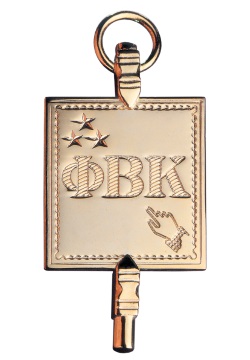
As the revolutionary spirit engulfed the William and Mary student body, just as it was engulfing the new nation, founder John Heath and eight of his colleagues amalgamated their patriotic emotions into Phi Beta Kappa and they marched off the campus and down The Duke of Gloucester Street to the Raleigh Tavern. There, in the Apollo Room, they carved out the very first North American college fraternity. A plaque commemorating that auspicious gathering can be seen to this very day in the restored Raleigh Tavern. The model for freedom of association and thought grasped by the men and women of the New World set the stage for a similar response by the new nation’s youth entering college. Thus, the college campus was to become a microcosm of the larger society, and it has remained so ever since.
The importance of Phi Beta Kappa, among other things, was that it freed out-of-class social life. Its primary contribution was a rationale for practicing student democracy, paralleling the larger democracy of the North American citizenry. As a result, it became the prototype for today’s college fraternities.
A second phase of fraternity development centers around the period from 1825 to 1850. Kappa Alpha Society was founded in 1825 at Union College in Schenectady, New York, and was the first "social" fraternity to have a continuing existence. Two years later Sigma Phi and Delta Phi were founded at Union. Known as the "Union Triad," these three fraternities were fundamentally social in nature; social in the context of an organization or association, but not social in the sense of being party playpens. In The American College and University, Professor Frederick Rudolph defined the purpose of these three as ". . .to change the focus from the next world to this."
The founding of the Union Triad may have been the product of one man’s intellectual philosophy. President Eliphalet Nott, of Union College, was an advocate of the belief that college study should not focus upon divinity alone but on a utilitarian curriculum, practical to man in the here and now. Although an advocate of practical studies, Nott was not particularly an advocate of the new fraternities. Nevertheless, his presidency at Union established a nourishing environment for a fraternity system to grow.
Throughout the 1850s and 1860s there was great expansion in the fraternity movement, essentially its third phase. From Northern and New England states, the fraternity idea spread to the Midwest mirroring the sweep of newly built colleges. Till this time, higher education institutes were primarily church-related, but with the adoption of the Constitution each new state was granted townships of land as support for a "seminary of learning." In Ohio, two universities (Ohio and Miami University) were established with new academic, social and economic goals. The "Miami Triad" consisted of three national fraternities established from dissatisfaction with the existing models that had expanded there from other campuses. The Miami Triad includes Beta Theta Pi, Phi Delta Theta and Sigma Chi.
The South also became fertile territory for fraternities, despite legislative bans against them, and, in 1856, Sigma Alpha Epsilon was founded at the University of Alabama. However, the Civil War clipped the pace of fraternity expansion for a while.
Three separate actions figured prominently in the post-Civil War fraternity movement. First, the Morrill Act, passed in 1862, authorized substantial federal aid in creating land-grant colleges. College curricula became even more practical with emphasis on agriculture and mechanical arts. The Morrill Act moved the U.S. system of higher education further away from denominational influence and helped develop a new academic climate which attracted a new type of student; one keenly interested in the concept of fraternity.
Secondly, an increased exposure to German intellectualism created a new academic climate for American scholars. A major tenet of German intellectualism was that rooming and boarding of students was not the responsibility of the university; therefore, fraternities began to offer food and lodging. As a result, fraternity members living together had to provide for their own essential needs and the extracurricular learning gained through the fraternity experience increased exponentially. In 1864, Kappa Alpha Society became the first fraternity to occupy a chapter house.
A third factor in the post-Civil War fraternity movement was a growing sense of responsibility toward college and community along with a concern for the spiritual aspect of Man. The end of the Civil War brought fresh concern for religious faith and this influence played a significant role in the founding of several fraternities. Specifically, the Lexington Triad, comprised of Alpha Tau Omega, Kappa Alpha Order and Sigma Nu, was heavily influenced by religious faith as they hold similar values and missions. Alpha Tau Omega and Kappa Alpha Order were both founded in 1865, followed by Sigma Nu in 1869. While Kappa Alpha Order was founded at Washington College (now Washington & Lee University), Sigma Nu was founded at Virginia Military Institute. However, Alpha Tau Omega was actually organized in Richmond, Virginia, in 1865, and the founders then established the first chapter at VMI.
Tracking the Last 100 Years
By the turn of the 19th century, fraternity chapters ceased living independent of one another and joined together in a movement to coordinate fraternity life. This movement was administered by young men devoted to improving relations among campus chapters, thus, the Interfraternity Council was born. Today, Interfraternity Councils have broadened their purposes. Many include judiciary systems to hold member fraternities accountable. They support community service projects and, in partnership with student affairs administrators, conduct recruitment programs, leadership training workshops, faculty-student seminar programs, and a host of routine activities such as fire and health inspections of fraternity houses and charity projects.
The 20th century brought on a new set of challenges for the expansion of the fraternity movement. While the number of fraternal organizations continued to grow, the overall membership fluctuated with each passing decade. The past 70 years have been especially trying for fraternities.
Fraternity Involvement Through the Years
- 1950s – The 1950s are described by some as the “heyday” of fraternities. Membership was at an all time high and fraternities had established themselves as the “best of the best” on campuses across North America.
- 1960s – The 1960s, saw a sharp decline in membership. It was during this time that it became “uncool” to belong to a group, especially one in which the membership openly claimed to have similar beliefs and values. It was during this time that the Civil Rights Movement progressed America towards equality of its citizens.
- 1970s – The 1970s did not relieve the pressure on fraternities. It was during this period that fraternities began to turn to alcohol to attract potential members. This business of fraternity was set aside and the business of a social outlet was brought to the forefront.
- 1980s – The 1980s brought resurgence to fraternity membership. The efforts of attracting members with alcohol paid off in quantity, but certainly not in quality. It was during this time that fraternities began to be publicly ridiculed for their behavior regarding alcohol as there were numerous alcohol-related tragedies that occurred on college campuses throughout the 80’s. It was also during this time that the infamous movie “Animal House” was released.
- 1990s – The 1990’s saw an all time low in fraternity membership as the antics and efforts of attracting new members that worked in the 70s proved useless in more modern times. Simply put, fraternities were stuck in the past, and the past didn’t interest the new students of the day.
- 2000s – The 2000’s saw an era of accountability and development of minimum standards for fraternities – either through campus oversight or accreditation programs of the fraternities themselves. The number of chapters decreased while the objective quality and size of remaining chapters improved and increased. Overall, fraternity membership stabilized as fraternities began to return to a commitment to values and their respective founding principles.
- 2010s – The 2010s saw a somewhat surprising resurgence in fraternity membership in the wake of an economic depression. College enrollments grew to record levels and students were seeking the networking, career preparation, and support networks that fraternities provide in order to make the most of the college experience and secure employment post-graduation.
The fraternity system today has grown well beyond its meager beginnings at William and Mary College more than two hundred years ago. Today, there are nearly 6,250 fraternity chapters throughout North America and more than 380,000 undergraduate members on approximately 800 campuses. At their birth, fraternities were designed to add a dimension of personal growth and development and within fraternity membership there exists an environment where your skills and character may be tried and tested, influenced and improved, where peer trust builds confidence, yet where peer influence serves as a force to restrain aggressive and unwanted behavior. In fraternity, we practice real democracy while learning to understand and accept the human dynamics of give and take, thereby enabling each member to be better prepared to face the world. That is the real mission of the fraternity community.
Why Fraternity?
This means why fraternity for you individually, because fraternity may not be for you. It isn’t for everybody and neither is Sigma Nu.
The reality for most members is that they wish to develop their own capacities and abilities and they feel that the fraternity is a place where that can happen; where they can become a better man. A good fraternity man, though, must be willing to accept the value of learning to live with others within the chapter and respecting their rights and beliefs.
Unfortunately, this reasoned approach is the exception rather than the rule. Honest answers to the question are usually more superficial:
- "It will be a great time."
- "I’m a legacy. My dad/brother did it."
- "Everybody knows the fraternity members have the best chances with the women on campus."
- "It’ll make me somebody! He’s important and I’m his Brother."
The list could go on and while at first it doesn’t seem so bad, it is important to note that there are numerous fallacies in it. For example, the last item is a fallacy in that credibility through association is an illusion. Luckily, many who come to fraternity for such spurious reasons later discover the real reasons for fraternity.
They also discover that they can go further and faster in developing their own capacities and abilities in the company of friends who care about what happens. They discover that these friends are committed to helping them. They discover that the fraternity experience helped them become a better man and, ultimately, that their fraternity choice was sound.
In the process of all this discovery, a good fraternity man also finds that ideals are the basis of true fraternity. They are constants; lighthouses in seas of change. What is true fraternalism, though? Each must find an answer for himself. The best answers develop from Candidate education, not Candidate training. Candidate education is based on a rational, intellectual examination of abstractions, ideals and ideas, rather than in performance of household chores, superfluous memorization, or what critics label as the traditions of college fraternities. So, fraternities must be useful by meeting the needs of men for a better education, acquired through the fraternity experience. Now that causes pause for reflection "Is your chapter a fraternity or a club?"
What do you think are the differences between a fraternity and a club?
Fraternities vs. Clubs
Let’s examine some of the differences between fraternities and clubs. Membership is for life in a fraternity; it’s only for as long as you like and/or pay your dues in a club. A fraternity offers its members opportunities of becoming a better man, academically, ethically, and socially. A club promises its members a social outlet that they have to pay for. When you leave a club, you get replaced, no big deal. You never leave a real fraternity, not even in death.
In a true fraternity, members genuinely care about each other. In a true fraternity, members assist each other in becoming that better man we’ve been talking about. They care enough to try to help each man in achieving his goals. They care enough to push each man to further develop his character by helping society and serving effectively in positions of responsibility, as well as fulfilling his lifetime commitment to the brotherhood… to the fraternity.
To flourish, a fraternity must be purposeful as well, where a club just needs to meet from time to time. This means day-to-day, week-to-week, and year-to-year objectives must be established, in the light of the general end sought – a better education, leadership, achievement, service and personal development. Moreover, these objectives should relate properly to the individual and the group.
In a club, the status quo is the name of the game, but in a fraternity, status quo equals dying. Sure, some will look for assurance that the status quo will be "good enough" for the future, but change is inevitable, and in real fraternity we never settle for "good enough."
Ultimately, there are two things that distinctly separate a fraternity from a club: Our Ritual and the chapter’s charter. The Ritual we will get to in due time, but what is a charter?
The charter is a revocable license which authorizes a group to operate as a collegiate chapter in the larger association for as long as the Brotherhood continues to uphold and promote the principles established by the Founders. It serves to empower you and the other members of your chapter with all the rights and privileges of Sigma Nu membership. It is the most important document of your chapter because it legitimizes everything the Fraternity stands for and entitles your chapter to represent Sigma Nu, but only in an honorable manner, on your campus.
Why Sigma Nu?
There is no quick or easy answer to this question.
We are not the oldest, largest, nor the wealthiest fraternity. We are not the right fraternity for everyone. No, you must look deeper within yourself for the answer to this question. Could it be that you desire to see yourself in the light of our Founders, who stood against the majority for what was morally and ethically right, albeit unpopular with tradition? Or, is it that you relate to our principles and wish to live your life within a brotherhood that demands your best effort to be true to them? Only you can answer the question. Maybe it’s that you wish to be a part of Sigma Nu’s steadfastness of purpose, which has lasted more than one hundred thirty years.
This purpose, this emphasis, has little or no appeal to boys, but to men, living this purpose is a real challenge and one they accept willingly. The founders were themselves men, not boys, and their fraternal heritage is for the mature. Sigma Nu, then, is for the responsible man who desires the challenge of becoming an "honorable man" and, therefore, earning their place in the Legion of Honor.
This means, among other things, that there is no place in Sigma Nu for hazing or other adolescent behavior. That is for the unimaginative mind of lazy children. Sigma Nu is a fraternity for men who are willing to make a lifelong commitment to "govern each act by a high sense of Honor." We can’t ask that of the feeble minded and immature; it’s just too much.
Only the mature can afford sentiment, and Sigma Nu is for those who care about others, their brothers. Brotherhood, then, goes beyond family and friends to encompass a regard for, and a loyalty to, an organization of men larger and more important than any one individual, including you. The understanding of sentiment and brotherhood, in turn, opens the door to understanding the world’s ideal of a true Brotherhood among all men.
Let it be said that all fraternities are good, but each is not equally good for all considering them.
Sigma Nu is for men of principle, those who truly believe in the principle of brotherhood, in the principle of honor, in service to others, in ethical leadership, in scholarship, in achievement, in individual and group development. Sigma Nu is for those who choose to become and remain ethical leaders for the rest of their lives. Not everyone wants to be that way. Not everyone will. Only those who do are the ones for Sigma Nu. Does that include you?
Watch the 69th Grand Chapter (2021) State of the Fraternity and Foundation report to learn more about how Sigma Nu is taking the lead.
For more historical perspective on the Fraternity's recent successes, watch the 68th Grand Chapter (2018) State of the Fraternity and Foundation.
View the 2018 State of the Fraternity infographic.
The Greek Alphabet
Finally, to close this first session, to the fraternity man, recognition and correct use of the Greek Alphabet is almost as natural as breathing. The Greek Alphabet has 24 characters, each with a Greek pronunciation. In some cases, they are identical. All Sigma Nus, out of respect for the entire fraternity community should learn the Greek alphabet.
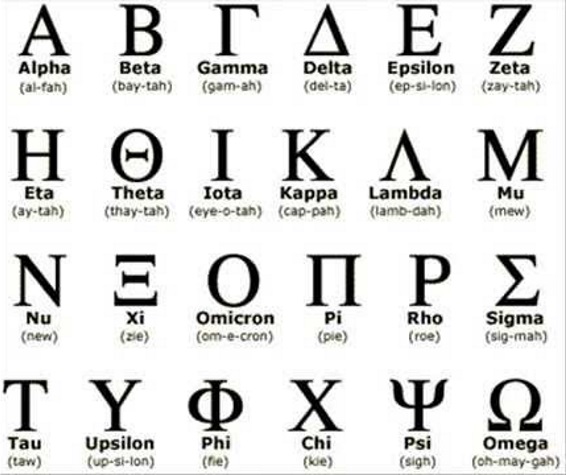
History overview: celebrating 150 years
It was on a moonlit October night in 1868 that three young men came together on a limestone outcropping near the Parade Ground of the Virginia Military Institute to launch a brotherhood that would change the lives of thousands of men.
A documentary on the first 150 years capturing the history and success of the Fraternity was released at the 69th Grand Chapter in Washington, D.C. and shared with alumni at regional anniversary events around the country throughout 2018-2019. This video, and the deep dives in the sections that follow, are a great place for you to start your journey learning about the Fraternity's grand history.
The Founding of Sigma Nu
It was a time of tension, a time of bloodshed, a time of despair. The Civil War had brought heartache and death to the United States as it pitted north against the south…ideology against ideology…family member against family member – six hundred thousand young men, many your age or younger, died in this struggle.
On April 14, 1865, John Wilkes Booth assassinated President Lincoln hoping to weaken the government enough to create an opportunity for the South to re-establish itself as a sovereign government of states. President Lincoln, who had fought to bring the country together, died on April 15, 1865.
As a result of the war, the South suffered through economic devastation as it entered 1866.
In Lexington, Virginia, Virginia Military Institute had re-opened, admitting non-Virginia students for the first time. First year students were subjected to rampant hazing and were treated as subservient. Amongst the first-year students to enter VMI in the fall of 1866 were three young men who would change the face of the school and emerge as leaders.
The spiritual birth of Sigma Nu occurred with the entrance of our three founders at VMI. Older than the average first-year cadet, James Frank Hopkins was the leading personality behind the founding of Sigma Nu. Hopkins, an idealist inclined to rashness, was born in Ripley, Mississippi, on December 30, 1845.
Hopkins’ temperament and impulsive character demanded a counter balance. That balance came in the person of Greenfield Quarles who was calm, careful and cautious. Quarles was born on April 1, 1847.
While Hopkins and Quarles complemented each other, a third person of the right character and value was needed to bring balance and complete the trio. James McIlvaine Riley was that third man. Popular among his classmates with charming manners and an affable disposition, Riley was born in St. Louis, Missouri, on May 16, 1849.
Sigma Nu’s beginning started on a blue-moonlit night in October 1868, when the three founders met at the limestone outcropping on the edge of the VMI parade grounds. It was on this night that the Founders gave their solemn pledge to form a new society called the Legion of Honor.
Founder Quarles recounted the night of our founding many years later, “We quietly walked out of our rooms and went to a lonely place on the parade ground, by the side of a great limestone rock, and there looked up into the heavens, almost feeling that we could see God Almighty looking down upon us, we took the oath and obligation that bound us to each other for life – it was solemn occasion to us. That was ‘The Birth of Sigma Nu’.”
It was no accident that the Founders adopted honor as a guiding principle. The VMI Honor Code was a source of inspiration for each of them and it was the purpose of the honor code to maintain high standards and to instill in all cadets the desire to conduct themselves according to the code of an honorable cadet who neither lie, cheat, steal, nor tolerate those who do. To this day, the fraternity’s honor code remains unwritten as the Founders believed that honor did not need to be defined to be expected.
On January 1, 1869, the Founders publicly announced their new society. During its first year of public existence, emphasis was placed on expanding membership and at the graduation ceremony of the three founders the Fraternity consisted of 51 members. Also during the first year of the Fraternity, it was Hopkins’ desire for a badge to be a means of identification, and it is to Hopkins alone that the credit goes for the idea and design of the badge. The first badges were cut from gold and decorated with the symbols of Sigma Nu.
History: Shenandoah Valley and Lexington
Before one can truly understand the history of Sigma Nu, you must first understand the significance and heritage of the Shenandoah Valley and the town of Lexington.

The Shenandoah Valley, called “the daughter of the stars,” is a valley running through the western portion of Virginia. To the east of the valley, the Blue Ridge Mountains form a geographical barrier, making access to the region a difficult endeavor. To the west of the valley, the Allegheny Mountains form yet another barrier, which hinders access from the west. The individuals who settled the valley were Scotch-Irish Protestants who migrated from New England, upstate New York, and western Pennsylvania. These rugged individuals were pioneers in search of religious freedom and unbounded opportunity. Upon arriving in the Shenandoah Valley, they found a rich land, ripe for farming with an abundance of fur-bearing and feathered wildlife, as well as cold mountain streams stocked with trout. These agrarian settlers soon realized they had found valuable land in the Shenandoah Valley, which quickly became known as the “breadbasket of the South.”

In the southwestern corner of the valley, in Rockbridge County, named as one of the Seven Natural Wonders of the World, is the Natural Bridge, which has the distinction of having been surveyed by George Washington and owned by Thomas Jefferson. Rockbridge County’s seat of government is Lexington. Lexington too has a rich history. Such noble individuals as Thomas "Stonewall" Jackson, Robert E. Lee, George Patton, George C. Marshall, and many other men renowned for their genius and high moral character have been educated, lived, and died there.
Washington College and the Virginia Military Institute
Washington College, as it was known during the time of our founding, began in Lexington when Augusta Academy - founded in 1749 and renamed Liberty Hall in 1776 - moved to the town in 1780 and was chartered as Liberty Hall Academy. On the verge of closing, due to a lack of funding, George Washington bequeathed 100 shares of James River Canal stock to the small school, which today would be worth approximately $50,000. Due to Washington’s generosity, Liberty Hall was renamed Washington College in 1813. After the Civil War, Robert E. Lee was appointed as president to Washington College. Upon his death in 1870, Washington College became known as Washington and Lee University, which it remains named today.
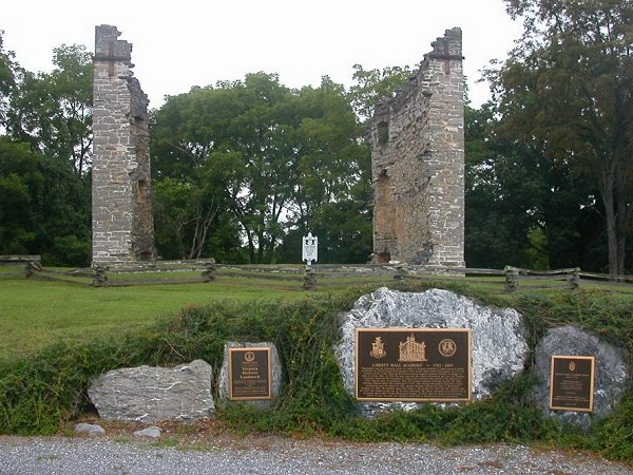
Adjacent to Washington College was an arsenal holding all the local military munitions for safekeeping. Assigned to guard the weapons were young soldiers, who in their time off-duty, would have very little to keep them entertained or occupied. In March 1839, the General Assembly of Virginia passed an act which established a curriculum for the soldiers assigned to protect the arsenal. In November 1839, the first class of Virginia Military Institute began their education.
VMI was modeled after the United States Military Academy at West Point, and soon became known as the "West Point of the South." The man commissioned to serve as the first superintendent of VMI was General Francis H. Smith, who had been a professor of mathematics at Hampden-Sydney College. Smith, a devout Episcopalian, moved to Lexington and discovered a Presbyterian Church, but not an Episcopal one. Shortly after the opening of VMI, Smith became the founder of Grace Memorial Episcopal Church. It was not long before both of Smith’s institutions – VMI and the new church – would have a great impact on the town of Lexington. Smith, himself, would have a great impact on the founding of Sigma Nu Fraternity.
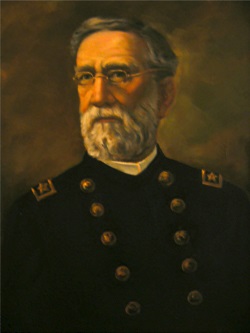
Having been taught at West Point and having been a professor at Hampden-Sydney College, Smith brought with him to VMI a high sense of honor. Smith had been influenced greatly by several codes of honor and demanded nothing less than honorable conduct from his cadets. Even today, the honor code established by Smith at VMI is a perfect model for students: I will not lie, cheat, steal, nor tolerate those who do.
From 1839-1861, VMI only admitted students from the Commonwealth of Virginia. Although it had a limited acceptance policy, VMI was successful in turning out one-tenth of the Confederate State Army commanders.
The Civil War was greatly affected by the soldiers of VMI. On May 15, 1864, the Institute’s first test came. The Corps of Cadets marched to New Market to face an overwhelming force of Federal troops. Despite their small numbers, the cadets fought with heart against the Union forces throughout the battle. Only 10 of the 257 VMI cadets who fought were killed.
However, in June 1864, the Institute suffered a severe blow when Union troops, under General David Hunter, were ordered to destroy the school with fire. The troops were only partially successful in destroying VMI and the portion that was burned was quickly repaired.
When the Civil War ended, VMI reopened its doors and, with the "Virginians-only" admissions policy done away with, immediately entered a period of unprecedented prosperity. For the first time, VMI saw an enrollment of southern and western cadets. The students were attracted to the school primarily for its engineering program. The skills learned in this field were in high demand due to the destruction from the war as much of the South had been devastated. Engineers were desperately needed to rebuild roads, bridges and many other public facilities and, once again, VMI would answer this call of need.
The Founders of Sigma Nu
The story of Sigma Nu began during the period following the Civil War, when a Confederate veteran from Arkansas enrolled at the Virginia Military Institute in Lexington Virginia. That cadet was James Frank Hopkins, and it is to him and two of his classmates that Sigma Nu owes its existence.
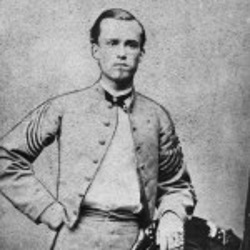
JAMES FRANK HOPKINS, ALPHA NUMBER 1, was born in Ripley, Mississippi, on December 30, 1845, to Colonel John W. Hopkins and Elizabeth Craig. The Hopkins family remained in Mississippi until Colonel Hopkins moved the family to Memphis in 1855 to provide better educational opportunities for his children. At the outbreak of the Civil War, the family again moved to Arkansas Post near Little Rock.
The younger Hopkins, then a boy of fifteen, was denied immediate enlistment in the Confederate Army due to his age. Finally, in 1864 he was accepted as a private in a cavalry troop attached to Anderson’s Battalion of Fagan’s Division. He was an expert horseman, and this skill was put to use when he was assigned to courier duty in at least five battles in the final year of the war. Although his family lost most of their possessions during the war, they managed to put together enough money to send James Frank to VMI.
In 1866, after the end of the war, Hopkins entered Virginia Military Institute in Lexington at the age of 20. 1866 marks the year the fraternity had its spiritual beginning, when Frank Hopkins rebelled against the injustice of hazing being practiced at the Institute. Hopkins is the principal Founder who conceived the idea of a brotherhood of honor, and he served as Lieutenant Commander of the original Alpha Chapter. He was the designer of the original badge and later drafted the first ritual.
After graduating from VMI, Hopkins pursued his career as a civil engineer back in Arkansas. He went on to serve as County Surveyor, Justice of the Peace, and Director of Schools. His dedication to the principles of Love, Truth, and Honor held steadfast throughout his life as he served the Fraternity as its first Vice-Regent and attended Grand Chapters in 1902, 1908, and 1910.
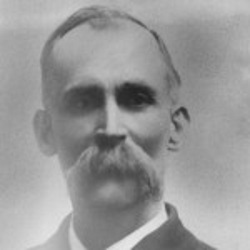
The life of James Frank Hopkins ended on December 15, 1913, and he was laid to rest in the village cemetery at Mablevale, Arkansas, beside his sweetheart from cadet days and devoted wife, a native Lexingtonian, Jennie Barclay Hopkins. In 1920, an impressive memorial was dedicated at the gravesite. Greenfield Quarles, the only Founder still living, offered a tribute to Alpha 1,
The love of our Brother for his fellow man was only excelled by his love of God. His example has instilled into the hearts of us all the principles which guide us now, and these principles will go down in future generations for all time. His life has been an inspiration to all youth. All that was mortal of Brother Hopkins lies buried here; but his immortal spirit will live forever.
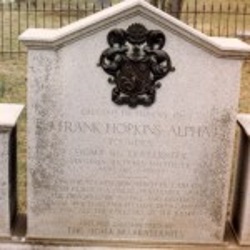
GREENFIELD QUARLES, ALPHA NUMBER 2, was born in Christian County, Kentucky, on April 1, 1847. His father, John M. Quarles, moved the family from Kentucky in 1851 and settled near Helena, Arkansas, where the father became a large planter.
Greenfield Quarles entered the Confederate service at sixteen, acting as aide on the staff of his uncle, General William A. Quarles. He served with distinction until he was captured in the battle of Franklin (Tennessee) November 30, 1864, after which he was taken to Camp Douglass, near Chicago. He remained there until May 1865, when he was exchanged and returned to the South. After his release from prison, young Quarles entered a preparatory school in Toronto, Canada, studying there for a year.
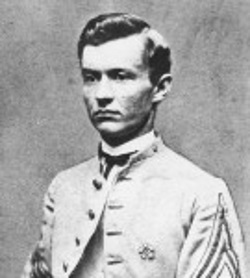
In August 1866, Quarles matriculated to VMI, and soon he became a constructive force in the development of the new society envisioned by Frank Hopkins. Quarles having been a prisoner of war, was mature well beyond his years when he entered VMI. In this regard, he was looked upon by other cadets as a resourceful advisor, and eventually rose to the rank of 1st Lieutenant.
After graduating from VMI, Quarles returned to Arkansas to assist in the management of the family’s plantations. His careful, prudent nature combined with his high moral values eventually led him to become a lawyer and later a judge in Helena, Arkansas. He was also elected as a District Representative to the state legislature where he was a staunch advocate of the development of public schools in Arkansas.
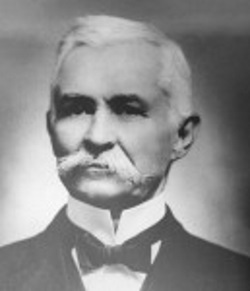
His dedication to Sigma Nu remained constant throughout his life, as he became a prime mover in early expansion, notably in granting a charter to Gamma Upsilon Chapter (Arkansas) and attending Grand Chapters in 1902, 1908, and 1919. On January 14, 1921, Alpha number 2 entered the Chapter Eternal and was buried in his hometown of Helena, Arkansas, just six months after offering a tribute to Alpha 1 at the dedication of a memorial at Hopkins’ gravesite.
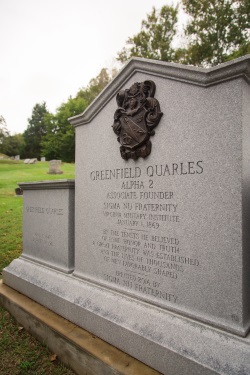
JAMES MCILVAINE RILEY, ALPHA NUMBER 3, was born in St. Louis, Missouri, on May 16, 1849. Born as the son of a wholesale merchant, the family had acquired a comfortable competence. James "Mac" Riley attended St. Louis University School, then entered VMI in the fall of 1866.
From the day he arrived in Lexington, Riley was a favorite among cadets of all classes. He possessed charming manners and an affable disposition. He was a good public speaker and a gifted athlete. He was a member of VMI’s first baseball team, which was organized in the fall of 1866, and played twenty-three games during the year. Riley played second base and served as captain of the team that only lost one game.
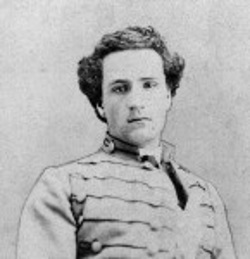
With Hopkins and Quarles coming from Arkansas, and Riley from the nearby metropolis of St. Louis, the three men became close friends. Finally, the triumvirate was complete with the spirit of good fellowship brought to the three by Riley. What a triumvirate it was, that exemplified the ideals which Hopkins had written into ritual. Honor was its cardinal motif, and was not Quarles a living symbol of purity? Friendship was its token, and was not Riley the vivifying spirit of fellowship? Once their friendships were consecrated, James McIlvaine Riley was elected first commander of Alpha Chapter. He served with great pride and exemplary leadership as the ideals of Love, Honor, and Truth flourished in Lexington.
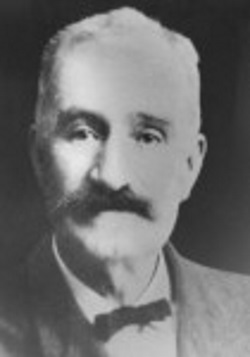
After his graduation from VMI, Riley followed his profession as a civil engineer, engaging in an extensive survey of the Mississippi River. He too remained true to his knightly vows as he served as the first Regent of Sigma Nu, a position he held for ten years. On May 6, 1911, in St. Louis, Missouri, Founder James McIlvaine Riley entered the Chapter Eternal. Members of the Fraternity carried his remains for burial to a plot purchased in Bellefontaine Cemetery by the St. Louis Alumni Chapter in fraternal affection for the founder.
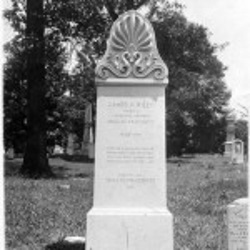
The three cadets – Hopkins, Quarles, and Riley – came together by happenstance, yet their personalities created an incomparable match of uncommon harmony and kindred spirits. Hopkins and Quarles had been seasoned by the hardships of war and the Reconstruction era, while Riley was tempered by the western frontier. The uniqueness of their union and their background bode well for the formation of a brotherhood born out of strife yet bent on brotherhood.
James Frank Hopkins was dedicated to modesty and objective thinking. His cool under pressure and analytical mind made him a worthy example of the honor principle. Almost immediately, Hopkins won friendships and the admiration of his fellow cadets and used his well-deserved respect ethically. He was the very embodiment of a gentleman.
Greenfield Quarles was a man of grace and dignity. His refined character was endowed with pure thought and his conduct was impeccable. He was a true friend of Hopkins, an admired companion and dependable confidant. Quarles was a man of arts and letters, he studied hard and worked diligently at the Institute. His hard work paid off for him and he went on to become a renowned judge.
Both Hopkins and Quarles were prudent and resourceful leaders, but they recognized a strong need of a third dimension to complement the leadership and seriousness of Hopkins and the scholarship and dignity of Quarles.
Their search for the perfect complement ended when they met up with James McIlvaine Riley. Riley was an instant favorite among the cadets. His free spiritedness and fun-loving, action-oriented behavior led him to be a friend to all and stranger to none.
Riley supplied the third dimension sought out by Hopkins and Quarles-fellowship and responsibility. With the addition of Riley, the triumvirate was complete; each of the three would contribute something unique to the philosophical underpinnings of an organization that was about to be formed.
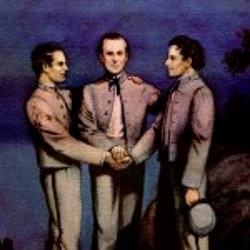
The Founders’ Lives on Campus
When the three founders came to VMI, they found a hierarchical stratification of the cadets with the Virginia cadets at the top, as well as an uncontrolled system of hazing in place. Prior to the war, the hazing was present, yet after the war, it appeared to have worsened. This exacerbation of hazing can be explained by the existence of resentment for the new students by the Virginian cadets. Prior to the war, only students from Virginia were allowed to enroll at VMI. With that policy stricken, a new corps of cadets from the South and West entered and met up with well-established traditions of "ratting." And the returning Virginian upperclassman shared a natural cohesiveness with displeasure against the more mature and universal cadet population that entered VMI in the years following the war.
Many of the new cadets had fought in the war. Most were mature men and saw no need for the hardships that they were to endure by the hand of their fellow cadets. Due to this hazing, many cadets quickly resented the unjust system they were facing.
While privileges at the military academy are few, control of the Corps’ leadership is a benefit gained with years of service at the Institute. During the first years that our founders attended the Institute, control was mainly held by a band of Virginian cadets. These cadets from the Old Dominion had fought on the "field of valor" at New Market, as had many others of the returning cadets. But what made them different was that this small group banded together at the end of the Civil War and formed a society comprised mainly of Virginia cadets; primarily they chose their membership from the Piedmont and Tidewater areas of Virginia. It was this new order that controlled the Corps of cadets.
As the hazing became worse, bitter resentment developed in the fourth class (freshmen). Many of the new cadets had little patience for the excessive abuses associated with the hazing, secrecy, oppression, exclusiveness, and arrogance that was becoming commonplace at the Institute. This resentment was fueled when it became evident that certain sub-professors favored the eastern Virginia society members over the rest of the Corps. One man decided to stand up against the unjust system of hazing and did so with such determination and fearlessness that he soon became the leader around whom the rest of the Western cadets rallied.
That man was James Frank Hopkins. Hopkins was twenty when he entered the Institute but had matured beyond his years; this maturity was due in part to his military involvement, as well as his own self-respect and sense of justice. The unreasonable requests of the upper-class cadets did not sit well with him and he began to openly object to the treatment of the fourth classmen. His opposition to the status quo was quickly noticed and he won much support and admiration, not only from the fourth classmen, but also from some upper-classmen, as well as professors. He quickly became so popular that some upper-classmen began to call those who rallied with him, "Hopkins’ Rats."
At the end of his first year Hopkins was awarded the highest rank of the class, the office of First Corporal. At the beginning of his second year, while on duty as Corporal of the Guard, Hopkins encountered an incident that left a long-lasting impression. After receiving a report of a disturbance, Hopkins was obligated by his duty to investigate. After arriving at the source of the disturbance, in the room of the Battalion Adjutant, Robert E. Nelson, Jr., he quickly realized that he had intruded upon a secret meeting of cadets completely disguised in white robes and black boots. Hopkins was immediately ejected from the clandestine meeting. He quickly prepared a report of the incident, in which he referred to their outfits, particularly their black boots. The society soon became known as the "black feet" among the cadets.
A second test of Hopkins’ mettle came when a fourth classman drew his pistol on a hazing party that were determined to continue an earlier torment that had not gone as they had planned. The gun was knocked away and the fourth classman was struck to the floor. Instantaneously, a rope appeared and the young cadet was hung on a door in the barracks; the purpose of the hanging was only to frighten the young man, but the rope caught in a doorjamb and became taut around his neck. Had it not been for quick action, the senseless act could have easily turned into a tragedy. Hopkins immediately swung into action. A meeting of the Corps was held to determine the will of the majority "for or against the continuance of hazing as a recognized custom." A secret ballot vote was conducted after much heated debate, and the results were offset by one single vote in favor of repudiating the practice of hazing.
Hopkins did not start out to lead a crusade against the system or any group at VMI; rather, he had stood against abuse for his own dignity and self-respect. He sought no recognition even after the practice of hazing was voted out. His concern for the protection of his fellow classmates was out of his charitable nature, not a personal agenda. Hopkins was a man of an intensely democratic spirit, and he was only doing what came naturally to him.
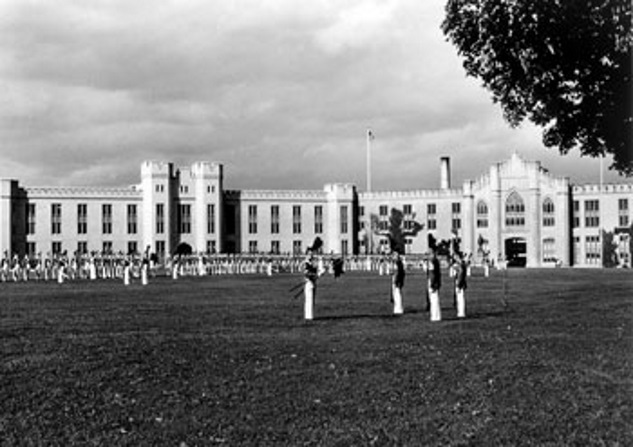
Distinguished Alumni
Several alumni proved influential in the early years of the Fraternity. Much of Sigma Nu’s early legacy and traditions can be traced back to the Brothers listed below.
Click the links to view additional listings of Sigma Nu’s inductees into the Hall of Honor and Hall of Fame, as well as other Notable Sigma Nu members.
ISAAC POITEVINT ROBINSON, LAMBDA (WASHINGTON & LEE) NUMBER 1, was the founder and first commander of Lambda Chapter. His vision and labor ensured the survival of Sigma Nu. He proposed and was largely responsible for the first convention (Grand Chapter) in Nashville, Tennessee, in 1884. He later served as General Secretary and Regent, and was influential in establishing several early chapters, and the revival of Alpha Chapter (VMI) in 1909. He was a physician for nearly forty years in Baltimore, Maryland, and served in the Spanish-American War and World War I as an assistant surgeon.
PERLEE RAWSON BENNETT, NU (KANSAS) NUMBER 3, had a long career as a newspaperman while serving Sigma Nu in many capacities. He was instrumental in the founding of Nu Chapter (Kansas) and later served as the first Grand Scribe. He also served in the capacity of General Secretary/Grand Recorder and Regent and wrote editorials for The Delta. His greatest contribution to Sigma Nu came when his “Red Book of Nu Chapter” was used as the basis for the revised and amplified Ritual, which was adopted at the Seventh Grand Chapter in 1894. With further revisions, the Bennett Liturgy was adopted as the exclusive ritualistic service at the Seventeenth Grand Chapter in Denver, Colorado, in 1915.
JOHN ALEXANDER HOWARD, KAPPA (NORTH GEORGIA) NUMBER 4, was a journalist and printer in Dahlonega, Georgia. He was the founder and first editor of The Delta in 1883. He aided Isaac P. Robinson in planning the first convention (Grand Chapter) in Nashville, Tennessee, in 1884. He served as First Vice-Regent, Grand Treasurer, and Inspector of Division 6 and assisted in the founding of Xi (Emory), Rho (Missouri), and the second Delta Chapter (University of South Carolina).
WALTER JAMES SEARS, NU (KANSAS) NUMBER 50 / BETA NU (OHIO STATE) NUMBER 1, was an influential businessman serving as president and general manager of Sears and Simpson Co., and of Sears and Nicholls Canning Co. He was founder and charter member of Beta Nu Chapter (Ohio State) and the founder of Beta Iota Chapter (Mt. Union). He served Sigma Nu as Grand Historian, Grand Recorder, editor of The Delta, and Regent. He is highly praised in his writing of the early history of Sigma Nu, and he also penned the Creed of Sigma Nu.
ALBERT HUGHES WILSON, BETA IOTA (MT. UNION) NUMBER 38, was a pastor for forty years for the Methodist Church of the Savior. He is known to the fraternity as the “Great Expansionist” for his role in the founding of more than thirty Sigma Nu chapters. He was one of the organizers of the National Interfraternity Conference (NIC) where he served as secretary. For Sigma Nu, he served as Inspector of Divisions 1 and 7, First Vice-Regent, Regent, Grand Chaplain, Grand Historian, and Division Commander of Divisions 1 and 2. He attended twenty-five Grand Chapters before entering the Chapter Eternal in 1958.
JOHN CALDERHEAD SCOTT, BETA ZETA (PURDUE) NUMBER 85, was a research chemist, who retired early to become editor of The Delta and Assistant General Secretary in 1915. He assisted in organizing the General Offices in Indianapolis where he also served as Grand Historian and Secretary of the Indianapolis Alumni Club for many years. He was the author of The Story of Sigma Nu and attended twenty Grand Chapters before entering the Chapter Eternal in 1980.
ELWOOD H. MCCLELLAND, GAMMA EPSILON (LAFAYETTE) NUMBER 5, was a charter member of Gamma Epsilon. He served as head of the technology department at Carnegie Library for forty years and was an expert in the field of botany. Brother McClelland’s finest contribution to Sigma Nu came with the adoption of the Sigma Nu Coat of Arms at the Seventeenth Grand Chapter in 1915. This beautiful masterpiece designed by Brother McClelland is currently on display at the General Fraternity Headquarters in Lexington, Virginia.
ORA MATTHIAS BALDINGER, ALPHA (VMI) NUMBER 133, reactivated Alpha Chapter after a period of dormancy and became the first man initiated into a revived chapter in 1909 (Founder Hopkins attended the ceremony). When the parade grounds of VMI were enlarged in 1912, Baldinger was serving as commissioner of grounds, and he ensured the careful removal and burial of a large portion of the rock where the founding of the Legion of Honor took place. In 1959, he assisted then Executive Secretary Richard R. Fletcher in recovering portions of the limestone outcropping, including a two-ton boulder that was placed in front of Sigma Nu Headquarters. He was given the title “Keeper of The Rock” and was awarded a white oak tree, which was donated by his wife. The “Baldinger Oak” stands next to the limit gates at the shrine of Sigma Nu to uphold that distinction. He also initiated the current Alpha Chapter Alumni Affiliate Program in 1962 to forever keep Alpha Chapter alive. In total, he attended nine Grand Chapters and served in the positions of Grand Sentinel, Grand Marshal, and Inspector of Division 1.
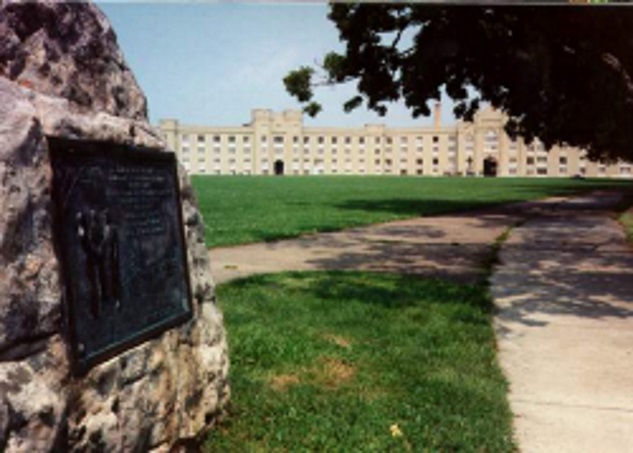
JOHN CARMICHAEL, JR., LAMBDA (WASHINGTON & LEE) NUMBER 35, joined Lambda Chapter to become the first legacy of the Fraternity. His father, John Carmichael, had initiated with Alpha Chapter at VMI and had been active with the founders of Sigma Nu. John, Sr., also lived in Lexington and was a source of great strength to the members of Alpha Chapter. The younger Carmichael upon becoming initiated took notice of how the badge resembled the flowers of a rose bush that he had cared for as a boy at his maternal grandparents’ home in Lexington. The classic, five-petaled, wild, white English floribunda was proposed and became the official flower of the Fraternity. A clipping from the original rose bush was planted behind the Rock at Sigma Nu Headquarters. The Rock and Rose serve as official reminders that we must remain constant to our fraternal professions and to our values yet change with the times and forever have a purity in purpose for all our endeavors. John’s son, John Carmichael III, became a member of Delta Pi Chapter at George Washington, which made his family the first three-generation Sigma Nu family.
The Founding: The Legion of Honor – Sigma Nu Fraternity
By the end of his third year, Hopkins had won many friendships and was admired by a great number of the cadets, as well as professors. It was this closeness to others with similar convictions to the honor principle and the sanctity of fellowship that inspired him to conceptualize an organization based on Brotherly Love, Honor, and Truth. As his concept began to take shape, Hopkins broached his plan to those who had lent dignity to the cause of opposing the unjust hazing and those who exemplified the highest order of responsibility and ethics.
First, he turned to his close friend and confidant Greenfield Quarles, and together they approached and explained the design to James McIlvaine Riley.
An additional factor that led Hopkins to form a new society was his involvement with the Masonic Lodge in Lexington, Virginia. He was impressed by the ritualistic ceremonies and had a tremendous understanding of the objects of Masonry.
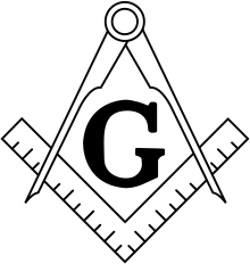
Hopkins’ cautious selection of his two companions reveals his extraordinary care in making certain that the foundation for the ideal association he dreamed of was sound. Hopkins was the embodiment of honor; Quarles, with his devotion to study and his dedication to honesty, was emblematic of truth; and Riley was recognized as a symbol of fellowship and brotherly love.
Lost in history are the precise circumstances leading to the first gathering of the founders on the edge of the VMI parade ground behind a large limestone outcropping on that special evening. Still other facts are well documented. The initial meeting of the Legion of Honor took place in October 1868 after dark and there was a Bible present. Cadets were required to attend a church of choice as part of their training – this idea was highly encouraged by Superintendent Francis H. Smith. All three founders were Episcopalians, as was Smith, but since the Episcopal Church was undergoing renovations, it was not available for services. To fill the gap that was created, Smith began to hold Bible classes at his home which was located on the parade grounds of VMI.
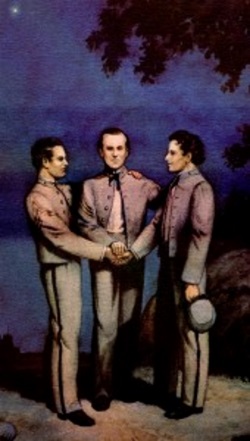
It was most likely that after one of these Bible lessons the founders slipped off under the curtain of night and held their first meeting behind the rock. There by the great limestone boulder, they clasped hands on the Bible and together took the oaths of membership that bound them as Knights in the Legion of Honor. It was then and there that the trail of the White Star began to be blazed.
In the remaining months of 1868, a few carefully chosen cadets were brought into the order, yet its existence was kept secret. It was not until January 1, 1869, that the public announcement was made that Sigma Nu Fraternity was established. In those days, cadets did not go home for the holidays; the trek home was neither convenient nor cost-effective. But what a great New Year’s celebration it must have been for the members of the newly founded brotherhood. After the announcement was made, regular meetings were held only on Saturdays, when those under the first class (senior) rank were permitted to be away from the barracks in the afternoon and well into the evening. All three founders were second classmen (juniors) and those added to the membership were equal to or below that rank.
Early Expansion
Alpha’s second year was a good one, with fifteen new members initiated. It was also during this second year that the White Star was taken to another campus. In the fall of 1870, the White Star crossed the Blue Ridge to Mr. Jefferson’s university, the University of Virginia. And thus, expansion to other colleges began for Sigma Nu in 1870 after the graduation of the Founders, when the mother chapter at VMI, then known as Chapter I, approved the establishment of a chapter at the University of Virginia. Later, a permanent numbering system established a Greek letter designation for chapters. Thus, Chapter I became Alpha and Chapter II at the University of Virginia became Beta.
Sigma Nu established a chapter at North Georgia Agricultural College in 1881. One of the men instrumental in the chartering of the North Georgia chapter was John Alexander Howard. He was blessed with rare intellect and considerable talent for writing. That talent led him naturally to newspaper work. Howard read widely and in his reading discovered Baird’s Manual of American College Fraternities. He read that book until he was familiar with all national fraternities. His study of other fraternities prompted him to examine shortcomings of his own fledgling Fraternity. At this time Sigma Nu was still using the Roman numeral designation for chapters. Howard felt that the Fraternity should adopt a Greek letter chapter designation according to the founding date of the chapter. Thus, his own chapter at North Georgia became Kappa. Howard’s main contribution was the founding of The Delta, the Fraternity’s renowned magazine. He selected The Delta for the magazine’s title to symbolize the geographic relationship of the three existing chapters of the Fraternity at that time, Alpha, Lambda and Kappa. The first edition of The Delta was published in April 1883 and contained sixteen pages. An original copy is on display at the Fraternity’s Headquarters.
Beta Chapter
At the time, when it was decided that Sigma Nu should be expanded, the practice seems to have been to give each member upon leaving VMI, a charter to establish a chapter in such a place as he might choose.
The task of building Beta chapter fell to Brother Harry Tupper Drane – a member of Alpha Chapter who was attending graduate school at the University of Virginia. Beta chapter was established in 1870. Brother Drane successfully initiated four others before the end of his first year at UVA, but when they and he failed to return to the university, Beta became dormant.
Beta’s first revival was not to occur until twelve years later. By that time Lambda Chapter had been established at Washington and Lee University, formerly Washington College. Members of Lambda Chapter dedicated themselves to reviving old chapters and to expanding Sigma Nu to other campuses. One of Lambda’s undergraduate members, Gordon O’Beirne, persuaded a friend, Henry McElwee, a student at UVA, to rebuild Beta. O’Beirne initiated McElwee at his home during the winter holidays in 1882, and upon his return to UVA in 1883, McElwee was successful at adding three new members to the rolls of Beta before classes closed for the summer.
In the fall of 1883, only McElwee and one of his inductees returned; however, one transfer member, who had been initiated by Iota Chapter (formerly Howard College, now Samford University) affiliated and the three of them constituted the chapter’s membership in 1883-1884. There were no reports of initiations and in February of 1884, the documents of Beta were surrendered to Lambda. In 1886 another revival attempt occurred when William M. Robertson of Lambda entered UVA for medical training. Along with two transfers from Alpha (VMI) and two from Omicron (Bethel), four new men were pledged, but three of the four did not make it to full membership. However, by fall of 1887, four other transfers, one each from Nu (Kansas), Theta (Alabama), Omicron, and Alpha helped to strengthen Beta. The charter was returned, a meeting room was secured, and the chapter became better organized. By the end of the 1888 school year, Beta boasted ten members.
Fate befell Beta once again and the chapter went dormant in 1888, when only Robertson returned. In 1891, a charter member of Phi Chapter (Louisiana State), Whitmel P. Martin, entered UVA and met with another Sigma Nu, Mendal L. Smith (Tau, Citadel), and together they were successful at initiating four new members. There was a new promise for Beta and in 1892-1893 the chapter made a new mark in membership with thirteen men, all of whom were student leaders. Beta has since suffered lapses, but has continued to be a crown jewel of this Fraternity.
Gamma Chapter
In 1871, one year after Drane first established Beta at UVA, the trail of the White Star blazed southward to North Carolina. John P. Arthur of Alpha procured a charter for Gamma Chapter at Bailey Law School in Asheville, but the effort failed when only one man was initiated. It was not until 1931, when the charter was implanted at Duke University in Durham, that it became revived. The re-establishment of Gamma was the result of combined efforts of a number of transfer Sigma Nu members: William Braswell (Iota, Samford); Phil Crawford, Jr. (Beta Tau, N.C. State); and Henry Taylor (Delta Lambda, Brown). George Chils (Beta, UVA) was Gamma’s advisor, and soon several other transfers joined the group to give it additional stability.
Delta Chapter
The trail of the White Star continued to be blazed southward from Virginia. In 1874, William Dancey (Alpha, VMI) first tried to establish a chapter designated Delta, which consisted of businessmen in Tarboro, North Carolina. Dancey managed to attract eight other men to his circle, but soon realized that the organization would not prosper outside the college environment.
Delta Chapter lay dormant until 1886, when John Alexander Howard (Kappa, North Georgia), The Delta’s first editor, inspired its revival at South Carolina College, today named the University of South Carolina in Columbia. However, the chapter fell victim to a series of periods of dormancy and revivals.
In 1897 the state legislature passed anti-fraternity laws which forced the chapter out of existence, and an attempt at revival by transfer Sigma Nu members in 1920 failed. Finally, in 1928, the anti-fraternity laws were repealed and a group of Delta alumni – including John Chase, Jr., Robert Jones, John Smith, and R. Means Davis, Sr. – re-established a local fraternity which soon petitioned for the Delta charter.
The effort enjoyed the support of Robert Sumwalt (Delta Kappa, Delaware), professor of civil engineering and later president of USC, and of Col. John Morris (Psi, North Carolina). In addition, Thomas Moore Craig contributed greatly toward the success of this second founding of Delta Chapter.
Epsilon Chapter
In 1883, three brothers of Lambda Chapter in Lexington convinced their friend, Louis R. Rogers from Kentucky, who was attending Bethany College in West Virginia, to establish a chapter there. Through continuing support of Isaac P. Robinson (Lambda, W&L) and John Alexander Howard (Kappa, North Georgia), Epsilon continued to operate until 1885, when it became dormant. Only four years later, however, the chapter was revived through the work of Albert “Bert” Wilson (Beta Iota, Mount Union), Sigma Nu Fraternity’s most renowned expansionist. Wilson persuaded two Bethany students to transfer to Mount Union College to be initiated by Beta Iota Chapter so that they could return to Bethany that following fall to revive Epsilon. The plan worked, and Epsilon has since produced many loyal and distinguished Knights of the Legion of Honor.
Sigma Nu continued its descent into the antebellum South and the establishment of Epsilon chapter at Bethany College in West Virginia represented the first move both northward and westward for the Fraternity.
Continued Expansion
With avenues of expansion opened, Sigma Nu Fraternity continued to expand in the South as well as westward and northward. Many chapters were established at reputable educational institutions across the country. To date Sigma Nu has been successful at establishing 280 chapters and has the potential to expand to many other great campuses.
The establishment of Sigma Nu’s early chapters – including Alpha, Beta, Gamma, Delta, and Epsilon – laid a strong foundation that has continued to be built upon for the past 150 years.
It is each Knight’s fervent hope that the trail of the White Star will continue to be blazed and that Love, Honor, and Truth will continue to be the cornerstone of the lives of many young men, for many years to come.
For the Brothers of the Legion of Honor, there can be no greater victory.
Click here to see a list of all active chapters and colonies. To view a listing of dormant chapters, click here.
The Genesis and Expansion of Fraternities
It has always been an American desire to search for a better way of life as an individual and as a group; it is about individuals coming together to seek out new possibilities and forging new alliances along the way. The tale of America is rooted deeply in man’s noble pursuit for opportunity, equality, and desire for a better lifestyle.
The story of Sigma Nu is no different from the story of this great country. It is a classic epic of people who desire to center their lives on other people and ideals rather than material possessions. This precept must be understood if one is to truly appreciate the heritage of our fine organization.
The American college-fraternity tradition is nearly as old as the nation itself. On December 5, 1776, at the College of William & Mary in Williamsburg, Virginia, the first college fraternity was founded. Phi Beta Kappa was formed – just six months after the signing of the Declaration of Independence – at the Raleigh Tavern, a popular eatery and meeting house in Williamsburg. Phi Beta Kappa has come to be called the “mother of fraternities,” for it has served as a model for many groups.

In the beginning, Phi Beta Kappa had attributes similar to today’s college fraternities, being a secret organization founded on friendship and directed toward a high moral attainment, which would encourage a high intellectual vitality. A primary activity of its meetings became the promotion of debate and literary composition. In 1831, however, Phi Beta Kappa, became an honorary fraternity. The main reason for this was prejudice against secret societies due to anti-Masonic disturbances, which began in 1826.
Although the fraternity was no longer a secret organization, it continued to prosper on William & Mary’s campus, as well as establish other chapters at several prominent institutions. After these new chapters had been established and others recognized their successes, both in and out of the classrooms, other Greek-letter groups began to form. These Greek-letter fraternities prevailed as a result of the natural affinity that draws together individuals of similar desires and common goals.
The Expansion of Fraternities
Among the groups that formed, three stood out as redefined organizations that had built on the foundation set by Phi Beta Kappa. To the north, Union College in Schenectady, New York, was the birthplace of the Union Triad, made up of Kappa Alpha Society, Sigma Phi, and Delta Phi. In Ohio, the Miami Triad was formed by the founding of Beta Theta Pi, Phi Delta Theta, and Sigma Chi at Miami College in Oxford. Lastly, in the small rural town of Lexington in southwestern Virginia, two schools, Washington College – now Washington and Lee University – and Virginia Military Institute saw the genesis of three more fraternities: Alpha Tau Omega, Kappa Alpha Order, and Sigma Nu.
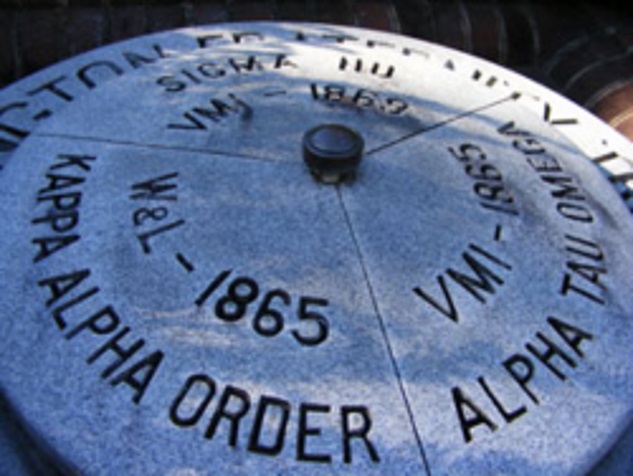
Sigma Nu’s Enduring Legacy
The Fraternity has flourished from its spiritual founding in 1866, beginning as the Legion of Honor in 1868, announcement as Sigma Nu in 1869, to its continued pursuit of excellence today.
Sigma Nu’s Early Years
Sigma Nu’s past is a proud and colorful one. Founded by three cadets at the Virginia Military Institute in a period of civil strife known as Reconstruction, Sigma Nu represented a radical departure from the times. The system of physical abuse and hazing of underclassmen at VMI led James Frank Hopkins, Greenfield Quarles, and James McIlvaine Riley to form the Legion of Honor which soon became Sigma Nu Fraternity. So, amidst a backdrop of turmoil, North America’s first Honor fraternity was established.
The Founders
The story of Sigma Nu began during the period following the Civil War, when a Confederate veteran from Arkansas enrolled at the Virginia Military Institute in Lexington, Virginia. The year was 1866. That cadet was James Frank Hopkins, and it is to him and two of his classmates that Sigma Nu owes its existence. When Hopkins enrolled at VMI, the South was in a state of turmoil not yet recovered from the ravages of war, let alone from the devastating military defeat it had suffered. The Virginia Military Institute was highly recognized for its civil engineering program and the South badly needed to repair its bridges and railroads. At the Institute, cadets suffered, not only because of the ravages of war and a disrupted homelife, but because of the system of physical harassment imposed upon lower classmen by their fellow students in the upper classes.
Hopkins had experienced military subservience during the War and was willing to tolerate a reasonable amount of constraint intended to induce discipline. However, Hopkins was unwilling to accept any amount of hazing then being allowed at VMI, and he was doggedly adamant about eliminating it.
Hopkins was soon joined by two classmates and close friends who were equally unhappy with the hazing situation. They were Greenfield Quarles, from Arkansas, a Kentuckian by birth, and James McIlvaine Riley, from St. Louis, Missouri. These three men began a movement to completely abolish the hazing system at VMI. Their efforts were consummated on a moonlit October night in 1868 – presumably following Bible study at the Superintendent’s home – when the three met at a limestone outcropping on the edge of the VMI parade ground. Hopkins, Quarles, and Riley clasped hands on the Bible and gave their solemn pledge to form a new Brotherhood society they called the Legion of Honor.
The vows taken by these three Founders bound them together to oppose hazing at VMI and encouraged the application of the Principle of Honor in all their relationships. That the Founders should adopt Honor as a guiding principle was a natural move since a rigid Code of Honor was already an established tradition of the VMI Corps of Cadets. The Honor System at VMI required each cadet to conform to the duty imposed by his conscience that each act be governed by a high sense of Honor.
Sigma Nu Announced
Although Sigma Nu Fraternity began in October 1868 as the Legion of Honor, its existence was kept secret until the Founders publicly announced their new society on the first day of January 1869 – the accepted birth date of Sigma Nu. What a New Year’s celebration it must have been for cadets who could not go home for the holidays! In those days the Institute did not close for “breaks” as we know them. It suspended classes only for the day on such occasions as Christmas and New Year’s.
The Fraternity’s spiritual birth, however, actually occurred in 1866, the year the Founders entered VMI, when Frank Hopkins first rebelled against hazing at the Institute. Still, the Founders did not create Sigma Nu with any feeling of animosity toward others; rather they were prompted by the impulses of sympathy and affection for all people which underlie abiding peace and contentment. They had experienced enough hate and destruction all during and after the War. They wanted an end to all abuses, and they knew it would not come easily. For them it was never an issue of who won or lost the War, but only an issue of winning the peace.
The Legion of Honor in its first year assumed the outward aspects of a college Greek-letter organization. The organization kept its original name secret but was recognized publicly as Sigma Nu Fraternity. It was soon to win the respect of all.
The new Fraternity needed an identifying symbol, and Founder Hopkins designed a Badge for the members to wear on their uniforms. That Badge was patterned after the White Cross of the French Legion of Honor, which was worn on the uniform of a favorite professor of Hopkins. The Badge was first introduced in the spring of 1869. Keeping with the Founders’ decree, the Badge has remained unchanged ever since, except in size and the raised center. Even today, the collegiate Commander’s Badge and the Badge of the Grand Officers remain identical to Hopkins’ original Badge. When the first slate of officers was chosen, Riley, the most popular, was elected Commander and Hopkins the Lieutenant Commander. Typically, Hopkins, the epitome of humbleness, was delighted that Mac Riley was chosen leader. It gave Hopkins – the doer, thinker, and planner – along with Quarles who had similar talent, more of an opportunity to concentrate on solidifying ol’ Alpha before he graduated in 1870. Shortly following the first gathering of the original three at the Rock there were fifteen committed members. By the 1869 commencement, the group had grown to fifty-one.
The First National Convention
The year following the first publication of The Delta witnessed another important milestone for Sigma Nu. That event was the First National Convention, which met at the Maxwell House Hotel in Nashville, Tennessee, July 9-10, 1884. The person responsible for the First National Convention was Isaac P. Robinson (Lambda, Washington and Lee). Robinson felt that a meeting of alumni and collegiate representatives was imperative because of a need to update the constitution, revise procedures, and coordinate efforts. The Sigma Nu convention later became known as Grand Chapter. It is held every two years and serves as the legislative body of the General Fraternity.
Another event in 1884 which had a major impact upon the Fraternity was the establishment of Nu Chapter at the University of Kansas. During the first fifteen years of its existence, Sigma Nu was primarily a southern fraternity, and the decision to establish Nu Chapter was to be the first step in a radical expansion program. Nu chapter was to open the West and North for Sigma Nu. Eugene L. Alford of Lambda was instrumental in the founding of Nu Chapter.
Two charter initiates of Nu who became very influential in Sigma Nu in later years were Perlee Rawson Bennett and Grant Woodbury Harrington. Bennett served the Fraternity as Grand Recorder for many years and in 1890 was elected Regent. He presided over the Sixth, Seventh, Eighth, and Tenth Grand Chapters. Harrington became editor of The Delta and Grand Recorder. For eight years (1886–1894) he had almost total responsibility for the administration of the Fraternity. Other early members of Nu Chapter were the Sears brothers – William H. Sears, Clarence H. Sears and Walter James Sears – who also became influential in Sigma Nu affairs. Their brother, Lorin Beecher Sears, attended The Ohio State University where no chapter of Sigma Nu existed at the time. Walter was so interested in having Lorin initiated into the Fraternity that he also entered The Ohio State University, founded Beta Nu Chapter and became its first initiate; Lorin became its second. Walter Sears devoted much of his lifetime to Sigma Nu, but his name will be remembered best for his beautiful prose in the preamble to, “The Creed of Sigma Nu.”
Sigma Nu Moves West
Leland Stanford University opened in 1891. Among its first students was Carl Lane Clemans, who had founded Chi Chapter at Cornell College in Iowa. Clemans was determined to open a chapter on the West Coast, and he recruited enough men to charter Beta Chi Chapter at Stanford in November 1891. Beta Chi’s fame soon spread to Berkeley, and Clemans went there to help organize Beta Psi (California) in February 1892.
Sigma Nu opened the Northwest to Greek-letter organizations when Gamma Chi was chartered at the University of Washington in 1895, earning the Fraternity kudos throughout the Greek community for its Northwest conquest. For almost four years Sigma Nu was the only college fraternity in the Northwest, having been the first to establish a chapter not only in the State of Washington, but also Montana and Oregon.
Beta Iota at Mount Union was chartered by Walter James Sears in 1892. Three years later Beta Iota initiated Albert Hughes Wilson, to whom Sigma Nu owes a great debt. Bert Wilson served as Regent, but his most noteworthy achievement was in expansion. Wilson established more chapters than any other member of the Fraternity, thirty-two in all, and he is generally credited with helping develop Sigma Nu into a geographically representative organization. Brother Wilson was the exemplar of interfraternity spirit as well, being chiefly responsible for the founding of Alpha Sigma Phi men’s fraternity. As an aside, it should be noted that Brother Wilson C. Morris (Beta Iota, Mt. Union) is given credit by Sigma Tau Gamma men’s fraternity as being the driving force behind its founding while the collegiate Brothers of Delta Theta Chapter, Lombard (Knox) College assisted greatly with the founding of Alpha Xi Delta women’s fraternity.
The Past Hundred Years
In the early 1900’s, with active chapters in each section of the country, Sigma Nu was now in every sense a national fraternity. Expansion proceeded at an orderly rate, and by 1915 there was need for centrally located administrative offices with full-time officers. Prior to this time the various Sigma Nu officers maintained their files and records at their own homes or places of business. Fire had once destroyed many of the Fraternity’s records, and there was a lack of coordination in general.
Following the Denver Grand Chapter in 1915, the High Council approved the establishment of the central administrative system first proposed by Regent Francis V. Keesling (Beta Chi, Stanford). The plan, adapted by Walter J. Sears, converted the High Council into a board of directors elected by the Grand Chapter; all executive and administrative duties previously exercised by members of the High Council and committees were lodged in a single official – the General Secretary (now Executive Director) appointed by the High Council and subordinate to its direction.
Indianapolis was selected as the location of the Fraternity’s headquarters, and on November 1, 1915, the General Offices were opened there temporarily in the Lemcke Annex before moving into the main building. Bixby Willis (Lambda, Washington and Lee), a past Grand Treasurer of Sigma Nu, was employed as the first General Secretary. In 1926 the central office was moved to the Illinois Building in Indianapolis.
Indianapolis served as the Fraternity’s headquarters for forty-two years, during which time fifty-five new chapters were added to the roster of the Legion of Honor.
Founders Join Chapter Eternal
Founder James McIlvaine Riley, who had served ten years (1869-79) as the Fraternity’s first Regent, entered the Chapter Eternal on May 6, 1911, in St. Louis, Missouri. Members of the Fraternity carried his remains to a burial plot purchased in Bellefontaine Cemetery by the St. Louis Alumni Chapter in fraternal affection for the Founder.
The life of James Frank Hopkins ended on December 15, 1913, and he was laid to rest in the village cemetery at Mablevale, Arkansas, beside his sweetheart from cadet days and devoted wife, a native Lexingtonian, Jennie Barclay Hopkins. In 1920 an impressive memorial was dedicated at the gravesite. Greenfield Quarles, the only Founder still living, offered a tribute to Alpha 1:
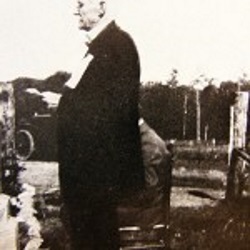
The love of our Brother for his fellow man was only excelled by his love of God. His example has instilled into the hearts of us all the principles which guide us now, and these principles will go down in future generations for all time. His life has been an inspiration to all youth. All that was mortal of Brother Hopkins lies buried here; but his immortal spirit will live forever.
Six months later, the last of the three Founders was taken from living contact with the Fraternity. Judge Greenfield Quarles entered the Chapter Eternal at his home in Helena, Arkansas, January 14, 1921. He had lived a life of noble service.
Formation of the Sigma Nu Educational Foundation
In 1945, Brother William P. Yates (Beta Rho, Pennsylvania) inspired the formation of the “Sigma Nu Inc., Educational Foundation” with a handsome bequest. Its name was changed in recent times to the Sigma Nu Educational Foundation, Inc. The Foundation has been instrumental in assisting collegiate members with financial aid supplements, and the General Fraternity in the development of the LEAD Program (LEAD is an acronym for Leadership, Ethics, Achievement, and Development). The Foundation continues to support the exclusively educational programs and activities of the General Fraternity and the collegiate chapters.
The Foundation’s offices are in Lexington, Virginia, at Sigma Nu Headquarters. While the Foundation is legally a separate non-profit organization, it operates under the Sigma Nu Fraternity umbrella. The Foundation works alongside the General Fraternity staff to accomplish many of the shared strategic goals of Sigma Nu.
The mission of the Sigma Nu Educational Foundation is to, “…secure and provide enduring resources to support the educational and charitable initiatives of Sigma Nu Fraternity.” Its vision is to be, “The Rock that supports Excelling with Honor.”
Sigma Nu Returns to Lexington
Even before Sigma Nu’s first central office was organized in Indianapolis, some dreamed of the day when the Fraternity would have an appropriate shrine at Sigma Nu’s birthplace, but it took nearly four decades before the first step was taken. That step was the appointment of a Headquarters Committee in 1954. It compared rent with ownership and ultimately recommended the latter in a college town where a Sigma Nu chapter thrived. Inevitably, Sigma Nu history and tradition pointed to Lexington.
Regent James W. Bradley (Epsilon Epsilon, Oklahoma State) and his High Council took the historic step in 1957, purchasing without mortgage or lien a singularly appropriate property – a large home ideally suited for conversion and development. The land – conveniently located on the highest hill in the corporate limits of Lexington, Virginia, and on a seven-and-one-half-acre tract overlooking VMI and Washington and Lee University – offers the Blue Ridge Mountains as a backdrop to the east and the Allegheny Mountains to the west. The land was originally owned by the son of General Francis H. Smith, the first superintendent of VMI, who inspired Hopkins in the founding of Sigma Nu; the house, built by the grandson of Superintendent Smith, came to Sigma Nu directly from the Smith family. Milton L. Grigg, a renowned Virginia architect and participant in the famous Williamsburg Restoration, was contracted to restore the building. The facility was occupied in 1958 and officially dedicated June 9, 1960 and is known today as the Sigma Nu Headquarters Shrine.
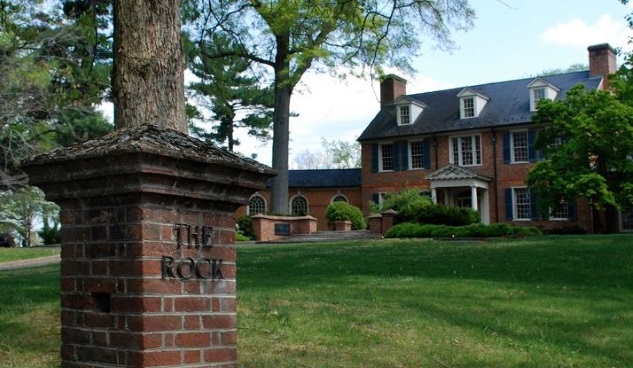
Read more about the return to Lexington and dedication of the Headquarters in Lexington.
The Sigma Nu Educational Foundation, as a registered non-profit organization, owns and operates the 13-acre Sigma Nu Headquarters Property. The Foundation employs a facilities manager who maintains the grounds, buildings, and all other aspects of the property. The historic Headquarters Property includes the General Fraternity offices, Sigma Nu Museum, Alpha Chapter Room, Hall of Honor, Hall of Fame, Fletcher Honor Library, Sigma Nu Educational Foundation offices, Spears Family Center for Excellence, Marchman Memorial Flag Pavilion, Pathway of Honor, The Rock, The Rose, and Rose Arboretum.
Sigma Nu’s Centennial
On January 1, 1969, Sigma Nu reached its one-hundred-year milestone. In the year that followed, it marked that event with a series of Centennial dinners at 36 locations throughout the country and with pilgrimages to the gravesites of the three Founders and the first editor of The Delta. Then on Sunday, June 15, a Centennial Convocation was held in Lexington. Two beautiful new wings of the Headquarters building were dedicated, one housing the Sigma Nu Museum and the other the Fraternity’s Honor Library, later to be dedicated in tribute to former Executive Secretary Richard R. Fletcher, who had long since earned the moniker of “Mr. Sigma Nu.”
Sigma Nu in its 100th year had come a long way from its founding. At the century mark it had issued 164 charters of which 143 chapters were alive and flourishing. Of the nine other truly national fraternities older than Sigma Nu, only three had more initiates. Sigma Nu owned 110 chapter houses providing living accommodations for more than 3,500 students. All this had been accomplished solely through the appeal of its principles – without false claims or specious promises, without merger, without honorary members. Every chapter had earned its own way by applying integrity in both purpose and method.
Sigma Nu Celebrates 125 Years
Among the many significant achievements during the three decades since the centennial were the addition of adjacent properties in Lexington, Virginia, known as the Ethical Leadership Center, owned by the Sigma Nu Educational Foundation. Particularly noteworthy was Sigma Nu’s interfraternity leadership in risk reduction and risk management matters followed by the introduction of its unique LEAD Program, one of the most meaningful educational initiatives ever undertaken by a college fraternity. Two initiatives by the Sigma Nu Educational Foundation to support the LEAD Program included a unique Memorial Rose Arbor and Pathway of Honor of engraved bricks providing an opportunity to celebrate the life of each Sigma Nu. The Pathway of Honor starts at the Rose Arbor and meanders throughout the properties.
In celebration of the Fraternity’s 125th anniversary, the Foundation undertook construction of a third wing to the Headquarters and the complete restoration of the original Smith house and the two wings that were added at the Centennial. A special Pilgrimage to the Rock was one of the memorable highlights of the 56th Grand Chapter held in Washington, DC, in August 1994. In summer 1995, more than 200 collegiate Brothers convened in Lexington for the College of Chapters in celebration of the conclusion of the 125th anniversary of Sigma Nu.
Sigma Nu Celebrates 140 Years of Honor
Well into the Fraternity’s second century, Sigma Nu continued its dramatic growth. With the number of initiates exceeding 220,000 and the number of chartered chapters approaching 280. Many of the Fraternity’s chapters have initiated more than 1,000 members, with a large number topping 1,500 and several exceeding 2,000.
In the summer of 1995, more than 200 collegiate Brothers convened in Lexington for the College of Chapters in celebration of the conclusion of the 125th anniversary of Sigma Nu. More recently, during the summers of 2001, 2003, 2005, 2007, and 2009 more than 1,500 collegiate Brothers have had the opportunity to gather in Lexington for the College of Chapters, one of the premiere leadership development programs of the Fraternity. Each year, hundreds of alumni and collegiate Brothers make the pilgrimage to our Lexington Headquarters shrine.
Excelling with Honor
In the late 1990′s, upon the direction of the Grand Chapter, the Fraternity’s High Council undertook a massive strategic planning effort with the goal of ensuring Sigma Nu’s continuing success in the new century. As a result of that visionary effort, the Fraternity adopted “Excelling with Honor” as it “vision statement,” reaffirmed its timeless mission, and created a strategic plan to guide the work of the Fraternity. In further pursuit of its goals, in 2002, the 60th Grand Chapter enacted the Pursuit of Excellence Program which calls for each chapter to be measured annually compared to minimum expectations of excellence and performance. In 2008, the 63rd Grand Chapter redesigned the program into a comprehensive chapter assessment, standards, awards, and continuous improvement program to guide chapter operations. Today, the Fraternity’s Strategic Plan directs all the Fraternity’s work toward its strategic goals and, ultimately, toward its mission.
Sigma Nu’s Sesquicentennial
In celebration of the Fraternity’s 150th anniversary, the Foundation undertook a campaign to update the Headquarters campus and to build a new and improve space for chapter pilgrimages, summer leadership programming, and storage of the Fraternity’s archives – in the form of the Spears Family Epsilon Epsilon Center for Excellence. A special Pilgrimage to the Rock was one of the memorable highlights of the 68th Grand Chapter held in Washington, DC, in July 2018. For the following year, the Fraternity celebrated its 150th year with anniversary receptions at ten regional sites.
Sigma Nu in its 150th year had come a long way from its founding, having 280 charters of which more than 165 chapters & colonies were alive and flourishing. Today, the number of initiates exceeds 250,000 and many chapters have initiated more than 1,000 members, with a large number topping 1,500, several exceeding 2,000, and a handful having surpassed the 3,000-initiate mark.
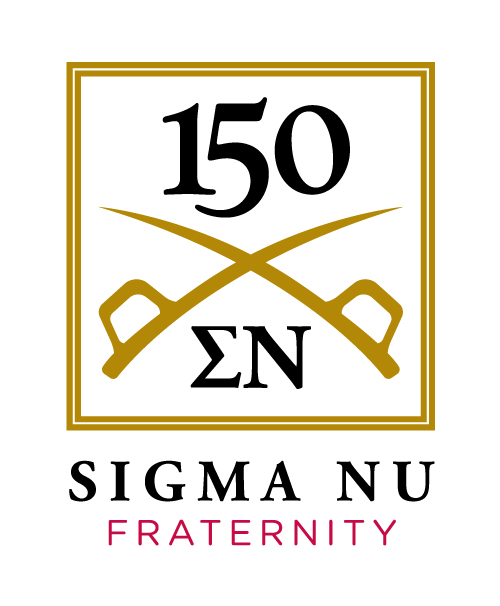
For more than a century and a half, Sigma Nu chapters have shaped the college student into a man of integrity, providing him a full education in preparation of a life dedicated to honor and service to others. Our challenge and great opportunity for the future is to focus efforts and energies anew to the fuller realization of the great mission set by our Founders – to build Men of Honor, ethical leaders for society, based upon the concept of the Brotherhood of Man under the Fatherhood of God. Indeed, Sigma Nu is on the threshold of the era of its greatest achievement.
The State of The Fraternity
Representatives gather for Grand Chapter every two years to review the current state of the Fraternity, elect leaders, and set a path for the future. The videos below highlight the progress of the Fraternity over much of the last decade and tell the story of the progress of Sigma Nu.
Watch the 69th Grand Chapter (2021) State of the Fraternity and Foundation report to learn more about how Sigma Nu is taking the lead.
68th Grand Chapter (2018) State of the Fraternity and Foundation
View the 2018 State of the Fraternity infographic.
67th Grand Chapter (2016) State of the Fraternity and Foundation
66th Grand Chapter (2014) State of the Fraternity and Foundation
Insignia
The Fraternity’s symbols, insignia, and shrines are meant to heighten and deepen one’s understanding of and appreciation for Sigma Nu’s rich heritage and traditions and engender pride in the Legion of Honor. Thus inspired, each member should strive to live the Sigma Nu lifestyle that will reflect credit upon this Fraternity and upon himself, his parents, alma mater, and alumni.
The Book: VMI’s first superintendent, General Francis H. Smith, adopted the practice of presenting a Bible to each graduate. The Bibles given to Cadets Hopkins and Quarles are on display at Sigma Nu Headquarters. An inscription on the flyleaf of Hopkins’ Bible depicts his emotions as he prepares to graduate from VMI. It is no happenstance that the Book plays a part in every formal Sigma Nu meeting or ceremony.
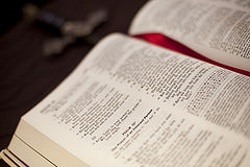
The Sword: Sigma Nu grew out of the Honor tradition of a highly recognized military school. Cadet officers, in formal dress, carried swords. Founder Hopkins’ sword is on display in the Headquarters museum. Like the Book, the Sword plays a part in every formal meeting of Sigma Nu. Upon initiation, you are told the symbolic meaning of these two important fixtures of Sigma Nu’s rich heritage.
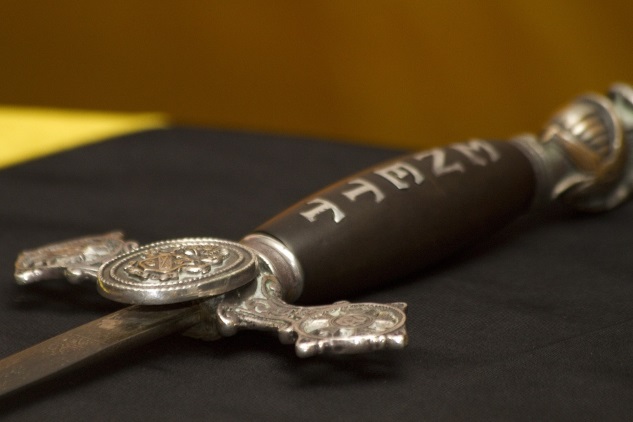
The Badge: Our Badge is regarded as one of the most expressive of all fraternity badges, as well as one of the most beautiful. Founder Hopkins patterned it after the White Cross of the French Legion of Honor. It is meant to be a cross but is identified as a White Star to avoid confusion with the White Cross of Sigma Chi. Hopkins’ own Badge heads a collection of historic badges at Sigma Nu’s Headquarters.
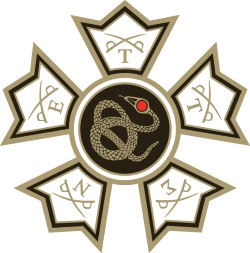
Ours is a badge, not a pin, and may be worn only as a badge (on the innermost shirt, above the heart – never as a lapel pin). It is not meant to be used for ornamentation of other jewelry, such as finger rings, lavalieres, or bracelets without the authorization of the Sigma Nu High Council. The Badge is protected by law, like all our official insignia, and its distribution is limited to initiated members only.
Only members, their mothers, wives, sisters, fiancées, or daughters may wear the Sigma Nu Badge. The obligation of membership is to add to its traditional meanings the deep personal affection it may have for you. Wear it proudly, for, to have earned it honorably, you will have met the initial obligations to be a Brother in an Honor Fraternity.
Your Candidate Pin: the central part of our Badge, identifies you as a Candidate for initiation. Alumni may wear a lapel button – a small enameled White Star with the Fraternity’s Greek letters in gold, or inscribed in its center with the number of years of their membership in Sigma Nu.
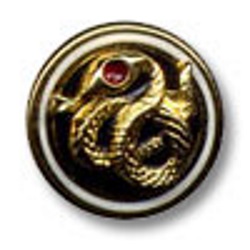
The Rock: If you know the story of our founding, you understand why the Rock is one of our chief symbols. Sigma Nu was born in the shelter of a saucer-shaped limestone outcropping not far from the Limit Gate on the parade ground of VMI. Untouched for forty-two years, it became our Rock, before it gave way to dynamite in 1912, when the parade grounds were enlarged.
At that time Brother Ora Baldinger (Alpha 133), an alumnus in charge of the blasting, buried major segments of the saucer on the edge of the expanded parade ground for safekeeping and future retrieval. His forty-two-year dream came true when the fragments were recovered following the opening of the Fraternity’s administrative office in Lexington, Virginia. Today a two-ton section rests at the entrance to the Headquarters Shrine.
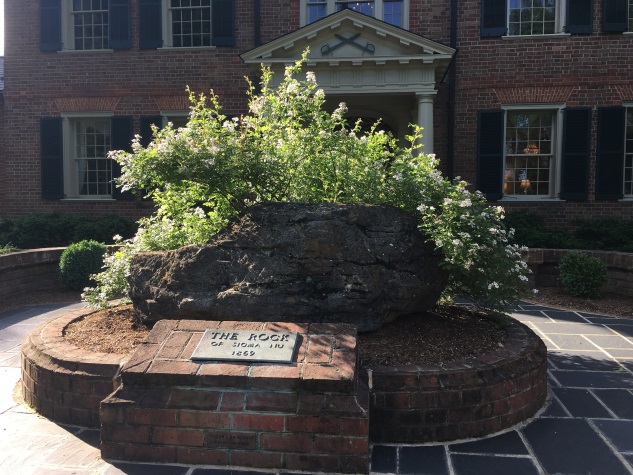
The Rock is a symbol of our enduring strength; like a beacon, it reflects our ideals unchanging, constant as a lighthouse on troubled seas.
The Rose: Our official flower is the White Rose – but not just any white rose. The original, adopted more than a century ago, grows today at the entrance to the Headquarters Shrine where it embraces the Rock which protects it. The Rose is a living symbol of Sigma Nu’s purity of purpose, a physical reminder of our unique tradition for change, but only in terms of our ceaseless efforts to continually improve the means of reaching our constant, changeless goals and ideals.

Our Rose is a classic five-petaled, wild, white English floribunda, a sturdy ancestor of the beautiful all-American White Knight hybrid tea rose which many florists feature today. Like the Rock, its story is memorable.
The first second-generation Sigma Nu – the Fraternity’s first legacy – John Carmichael, Jr. (Lambda, Washington and Lee), son of Alpha No. 15, proposed the White Rose as our flower in 1892 because as a boy he looked after it during summers at his grandparents’ home, Blandome, near what is now the Headquarters Shrine. In 1958, that very rose bush was found still growing, and a portion of its sturdy roots were transplanted at the entrance to the Headquarters Shrine, immediately behind the two-ton fragment of the Rock. It lives on today to exemplify the contrasting symbols of two of our greatest traditions. Constancy (The Rock) and Change (The Rose): constant to our fraternal profession but always seeking improved ways to achieve our mission.
The Coat of Arms: Our Coat of Arms consists of a shield marked with the insignia of our Colors, Badge, Knight’s Helmet, White Rose, Crossed Swords, Coiled Serpent, and Motto – the meaning of which is explained only to the initiated.
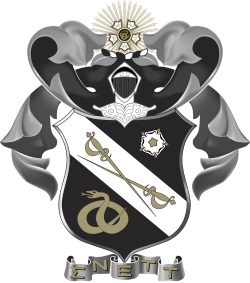
Designed by Brother Ellwood H. McClelland (Gamma Epsilon, Lafayette) and adopted in 1915, our Coat of Arms meets all the precise requirements of the science of heraldry. The original is on display at the Fraternity’s Headquarters, but thousands of copies and replicas identify Sigma Nu to the world. It is recognized by other fraternities as the most perfect Coat of Arms in the Greek community.
The Seal: Our official seal, kept at the Headquarters Shrine, attests to the official action of the General Fraternity, such as the granting of a chapter charter. It consists simply of an embossed Badge, labeled Grand Seal of Sigma Nu Fraternity, Inc.
The Flag: Our official flag, adopted in 1921, has three equal horizontal bars in our Fraternity’s colors – black at top, white in the middle, and gold at the bottom, with a coiled gold serpent in the center representing wisdom and fidelity. While in operation, collegiate chapters may fly it outside from sunrise to sunset. It is displayed at Grand Chapters, leadership conferences, regional meetings, Alumni Club meetings, and at individual chapter ceremonies and special gatherings. The proper order for displaying the Sigma Nu flag is (from right to left facing audience) first the national flag, then state or province flag, the college flag if available, then the Sigma Nu flag.

Limit Gate: The entrance gate to the Sigma Nu Headquarters Shrine serves to welcome all to the Shrine of Sigma Nu and is a tribute to its historic roots. It is a replica of the Limit Gate at VMI.
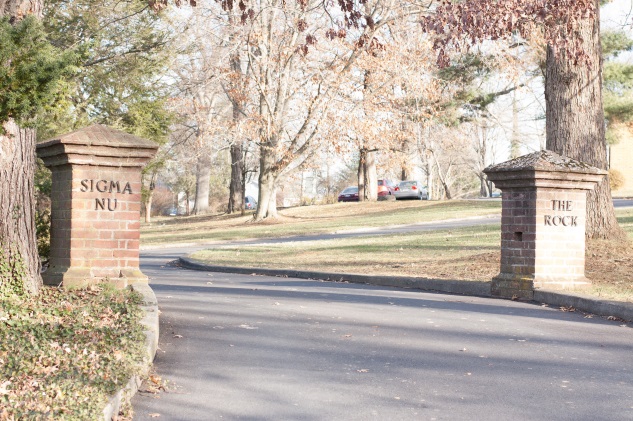
The White Oak: The Baldinger White Oak is named for Brother Ora Baldinger (Alpha 133). Purchased in his honor by his wife and standing sentinel at the entrance gate to the Headquarters Shrine in Lexington, Virginia, the White Oak was dedicated as the official Sigma Nu Tree at the 1985 College of Chapters.
Crossed Swords: Located above the entryway to the Sigma Nu Headquarters Shrine and made possible by a generous contribution of past Regent Harry Wilcott (Zeta Eta, Tufts), the crossed swords represent the celebration of Sigma Nu’s purpose and salute the dedicated alumni who voluntarily serve the cause of Sigma Nu.
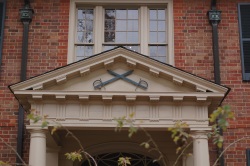
The Creed: If you know nothing else about Sigma Nu but know, understand and apply the Creed daily you will become and remain a Sigma Nu. With the beautiful, meaningful representation of our ideals of Love, Honor, and Truth, as described by Brother Sears in his preamble, the Creed has become the standard by which we measure ourselves and our actions. A large copy of the Creed belongs on every chapter wall, a reminder copy in every member’s possession, just as it appears on every pocket membership card. It encompasses the contents of this book. All commit the Creed, and many the preamble, to memory. All should read and reread it and seek to understand and apply it throughout their lives.
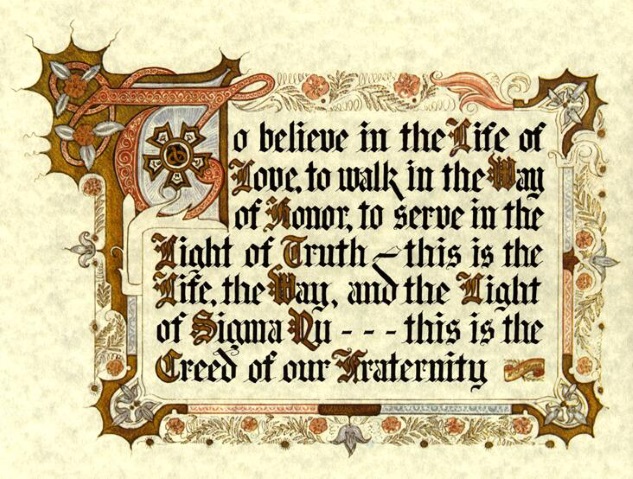
Distilled from a lifetime of devoted service to our ideals by Walter James Sears (Nu, Kansas/Beta Nu, Ohio State), the Creed was first presented in 1907. It was revised and adopted in its present form in 1918 and has since been recognized as a classic in fraternity literature. A bronze plaque of the Creed was presented to the author in 1918. He left it to his second chapter, Beta Nu (Ohio State), which subsequently placed it on permanent loan with the General Fraternity. It is on perpetual display at the Headquarters Shrine. At the 54th Grand Chapter, it was unanimously approved that, whenever and wherever a gathering of Sigma Nus occurs, all are called on to stand and recite in unison the Creed. In 2018, at the 68th Grand Chapter, the five-line Creed below was officially adopted.
To Believe in the Life of Love,
To Walk in the Way of Honor,
To Serve in the Light of Truth,
This is the Life, the Way, and the Light of Sigma Nu.
This is the Creed of Our Fraternity.
Sears’ preamble was recognized as a beautiful expression of language that provides a remarkable description of the meaning and value of Brotherhood as envisioned by the Founders of the Legion of Honor, although reflective of the author and the time in which it was written and is thus now recognized as an historic contribution to the Fraternity written in the early 20th century.
Headquarters Shrine: Shrines are places or things consecrated with sacred character because of their place in history or their associations in life. The Fraternity’s Headquarters is one. Located on the highest hill in the corporate limits of Lexington, Virginia, it overlooks VMI, Sigma Nu’s birthplace. The Headquarters Shrine is often referred to as “The Rock.” It receives more visitors annually than all other fraternity headquarters. It is Sigma Nu’s home and it belongs to all who wear the five-armed Badge.
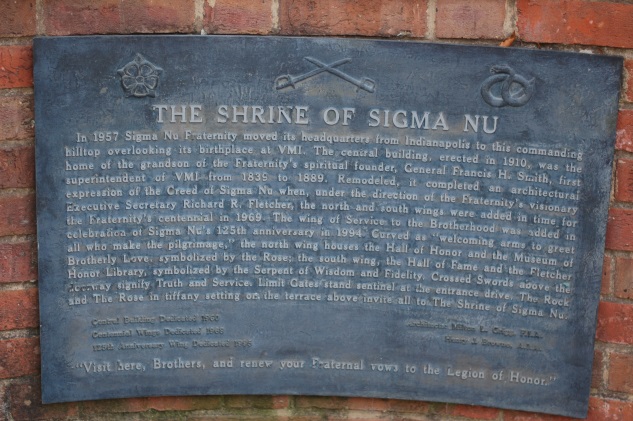
Six other shrines in Sigma Nu stand out and markers have been erected by the General Fraternity to commemorate:
Our Founding: In 1935 a granite boulder, taken from the nearby Maury River, with bronze plaque depicting the three Founders at the Rock, was placed by the General Fraternity on the edge of the VMI parade ground sixty-five yards from the original site of the limestone saucer-shaped outcropping where the Legion of Honor was founded on a moonlit night in October of 1868.

Graves of our Founders: James Frank Hopkins at Mablevale Cemetery in Mablevale, Arkansas (near Little Rock); Greenfield Quarles at Maple Hill Cemetery in Helena, Arkansas; and James McIlvaine Riley at Bellefontaine Cemetery in St. Louis, Missouri, are marked by special headstones commemorating their important role in forming the Legion of Honor.
Grave of First Editor of The Delta: John Alexander Howard (Kappa, North Georgia), at Oakland Cemetery in Tallahassee, Florida, is marked with a special headstone in lasting tribute for creating what has long been recognized as the best fraternity magazine in the business.
Grave of VMI Superintendent at time of founding: Francis H. "Specs" Smith, at Jackson Memorial Cemetery in Lexington, Virginia, was established as a shrine of Sigma Nu at the 62nd Grand Chapter in Indianapolis, Indiana, for his influence and guidance was instrumental in our founder’s establishment of the Legion of Honor. Further, the Headquarters Shrine currently sits on property previously owned by his family.
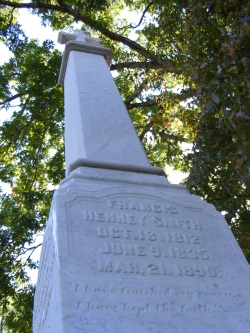
Hundreds visit the Sigma Nu VMI marker each year, and representatives of nearby chapters visit periodically the graves of the original Founders and Brother Howard.
Official Song: The White Star of Sigma Nu, is both tradition and custom. Since its adoption in 1920, almost every Candidate has learned both words and music. It is sung at the close of most Sigma Nu gatherings; and, even though some older alumni sing the original “ten thousand others wear you,” today most sing “thousands of others wear you.” After all, we are exceeding 250,000 Brothers strong. The song means the same to all. It is hoped that you will learn it, sing it, and remember it. Jack T. Nelson (Gamma Beta, Northwestern) is credited as both composer and lyricist, but Warren J. Piper is credited with having played some initial role as well.
The Creed of Sigma Nu
The Creed of Sigma Nu, by Walter J. Sears, symbolizes what the knights of Sigma Nu Fraternity stand for.
To Believe in the Life of Love,
To Walk in the Way of Honor,
To Serve in the Light of Truth –
This is the Life, the Way, and the Light of Sigma Nu –
This is the Creed of our Fraternity.
The preamble to Sigma Nu’s Creed as performed from memory by Division Commander Chris Graham at the 2014 College of Chapters.
Full text of Brother Sears’ preamble to the official Creed – written in the 20th century and reflective of language and concepts in use at the time – is offered below as a reference for Brothers looking for more on how the values of Sigma Nu might be displayed in actions.
TO BELIEVE IN THE LIFE OF LOVE; to win in the fresh morning of our youth the loyal love of faithful friends, who will go with us unmoved into the darkening shadows of life’s closing day; and so to seek and to find, to have and to hold the friendships that will abide. To think of God as the common Father of all men, and all men as a common brotherhood, thus recognizing the continuity of the Divine and the solidarity of the human life. To build somewhere in the wide world the sheltering walls of a home, however humble and obscure, where Love shall glorify the wife, Duty enshrine the mother, and Affection ennoble the child. To keep green the sainted memory of our loved and lost, their faults forgotten, their virtues enshrined in our hearts forever. To try bravely to do unto our fellow men as would they do unto us, reckoning not their lineage nor their wealth, but esteeming their manhood above their badge of rank. To let our lives be led by the spirits of Gentleness, Justice and Mercy. And so to be true to the Knighthood of Love.
TO WALK IN THE WAY OF HONOR; to exalt the fundamental virtues of the race; and, prizing every noble impulse, to realize so deeply the baseness of deceit, that no obligation will be more binding than our plighted word. To be steadfast in the performance of every trust, and, spurning the gaudy gifts of greed and power, to be content to live by our knightly vow that our honor is dearer to us than our lives; and so to esteem the man’s character first, his culture second, and his pedigree not at all, unless he be worthy of it. Emulating the chivalrous deeds of courtesy, and sealing not our hearts against the touch of tenderness, to win the love and care of some incorruptible woman. And so to be loyal to the Knighthood of Honor.
TO SERVE IN THE LIGHT OF TRUTH; to open wide, Life’s windows to the revelations of heaven and earth. Avoiding the Phariseeism that belittles the soul and scorning the bigotry that blights the mind, to respect every altar of faith built in God’s name, by every sincere worshiper to whom, if we cannot give our sympathy, we shall not deny the kindness of our manly silence; and, whatever our creed, to reverence the Christ as the Divine Compassion for struggling humanity—a compassion that, giving the world its gospel of human service, saves men to the end that they may serve their fellowman.
To seek in nature, the meaning of the Infinite Truth; to understand that the laws of growth are the laws of God; to believe that the melody of birds, the laughter of children, the unmeasured sacrifice of motherhood, and the ceaseless yearning of all men for a wider outlook and a nobler existence are prophetic of the perfect joy and love of another world; and, so believing, to find rest, as in the shadow of a great rock, against all the storms that beset us; catching from the silence of the starlit nights, the peace of the autumn days, the solemnity of the boundless seas, that spirit of Hope and Faith which soothes the hurt of grief, heals the wound of wrong, and calms the fever of doubt.
To welcome the achievements of art and science, religion and learning, labor and law, under whose radiant banners battle the hosts of progress; honoring every honest student as the benefactor of his race, and every consecrated school as a bulwark of the Republic; and so to be loyal to the American university, as the home of American liberty, democracy, religion, and culture.
To guard with jealous care not only ancient rights of human freedom, in whose name we shall destroy all wrong and oppression, but also the newer rights of social service, the ultimate purpose of whose ministrations shall be to give to every life, the opportunity to enjoy the earth in the fullness of its beauty and grace, its comfort and good cheer; holding fast to the conviction that whatever sweetens our natures, uplifts our ideals, strengthens our characters and disenthralls our spirits, will bring us in the end into the full stature of a noble manhood; and, so inspired, to cling to the visions of our youth, and, despite the sordid struggles of the selfish world, to practice every day, as lads in college, and men in the world, the Faith of our Fraternity, thinking of it not only as the inspiring Ideal of a militant Brotherhood, but also as creative force for the spiritual development of men, whose lives it shall dedicate to Love, glorify with Honor, and conquer for Truth. And so to be faithful to the Knighthood of Truth.
****
Official Artwork
Official artworks of Sigma Nu tell their own story. The Fraternity is fortunate to have three originals on display in the museum at Headquarters: “The Founding of Sigma Nu,” “A Serpent, A Rose and A Star,” and “The Quest.” Each reflects the unique history, principles and heritage of the Legion of Honor.
A Serpent, A Rose, And A Star
This is an original oil painting which hangs in the Headquarters Shrine on permanent loan from Delta Kappa Chapter (Delaware). Painted by Brother Elmer Paul Catts, Jr., it was completed in 1952 but was not introduced to the Fraternity at large until it appeared on the cover of the February 1960 Delta.
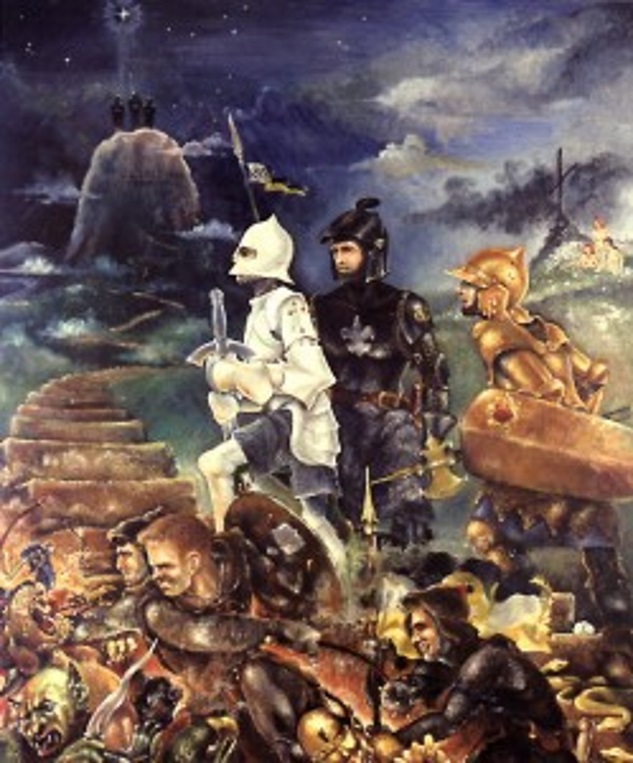
The idea for the painting grew out of a discussion among first-floor residents of the Delta Kappa Chapter one fall evening in 1949. They agreed that Sigma Nu needed a painting which would express the Fraternity symbolically and commissioned Brother Catts – then a sophomore and chapter Reporter – to undertake the project.
He began his lengthy task by listing what he thought should be included. His original sketch featured a single Knight as the central figure, with the Founders, the Rock, and the stairway or Pathway of Honor, much as they appear in his completed work. Later he developed the idea of using three Knights, and thereafter expanded his concept to include Candidates and ladies. He started painting in July 1950, but the finishing touches were not completed until 1952, more than one hundred work hours later.
The name of the composition, “A Serpent, A Rose, and A Star,” is especially appropriate, since all three of these important Sigma Nu symbols appear in that order from the lower right to the upper left of the painting.
The three Knights, each clad in armor of one of the Fraternity’s colors, stand at the base of a pathway of steps which leads to the summit (Honor) of a great rock (the Rock of Sigma Nu) graven with the Roman numerals of the year the Fraternity was founded, 1869. The three Founders are represented by the figures atop the Rock. Above the Rock shines a bright star whose rays outline faintly the familiar five-armed Badge of the Fraternity, and to the right in the field of white roses are three feminine figures representing those who may share the Badge: mother, sister, and sweetheart. Behind them stands the Cross of Calvary, expressing the power or light of the Living God as emphasized in Sears’ preamble to the Creed.
Each of the three central figures (the Three Knights) represents one section of the Creed of Sigma Nu: the Gold Knight for Love, the Black Knight signaling Honor, and the White Knight connoting Truth. Each wears an emblem whose significance is revealed only to the initiated. Each is armed with a different weapon, symbolizing the varied talents with which each member is endowed as he seeks to mold his character and make his way through life by following the Pathway of Honor.
Immediately below the Knights are three in mail, wearing hoods and each bearing a different weapon, representing the varied and diverse talents of the Candidates. The central foreground of the painting expresses man’s frustrations. The gnomes depict the profane world. To the uninitiated the symbolism stops there, but to the members of Sigma Nu much more may be deduced from the painting, after careful study and reflection.
The Quest
A painting by Sigma Nu artist Michael Jaszczak of Delta Alpha Chapter (Case Western Reserve) was presented to the General Fraternity at the 1986 Grand Chapter. Brother Jaszczak was named the Fraternity’s Talent of the Year for both 1983 and 1984.

The Quest symbolically expresses that noble pursuit of the human heart: to remain constant to the challenge of a lifelong search for Love, Honor, and Truth. Perhaps one is convinced of the Truth, is endowed with Brotherly Love, but finds Honor elusive. Or, he may possess Love and Honor, but is afflicted with an unquenchable thirst for Truth. Some will see The Quest as two Knights seeking a third whose heart, mind, and character make him worthy of our Brotherhood. In the background of the painting is the citadel of VMI at the foot of the towering Allegheny Mountains where Sigma Nu’s principles began. The darkening shadows forming the background behind a grove of white oak trees – the White Oak is the official Brotherhood tree of the Fraternity – symbolically suggest that caution needs to be exercised in the quest for excellence, lest Sigma Nu accept less than the best.
Surefootedness over the rocky pathway of Life is essential for Sigma Nus to achieve their maximum potential. The Quest, then, symbolically expresses the Fraternity’s constant challenge to capture the essence that yields the North American College Fraternity at its best. The careful observer with an astute knowledge of Sigma Nu’s philosophical underpinnings and rich heritage will discover even deeper meaning in Brother Jaszczak’s exquisite work.
The Founding of Sigma Nu
Painted by James Bowles Settles of Gamma Omicron Chapter (Washington University in St. Louis) in 1935, the symbolic watercolor of the first meeting of the three Founders by the Rock provides a realistic image of the three cadets with hands clasped, forming the Legion of Honor. In the background is the VMI Superintendent’s home with its two prominent towers from which the three reportedly had emerged after Bible class on a moonlit Sunday evening in October 1868 and gathered behind the limestone outcropping on the edge of the parade ground.
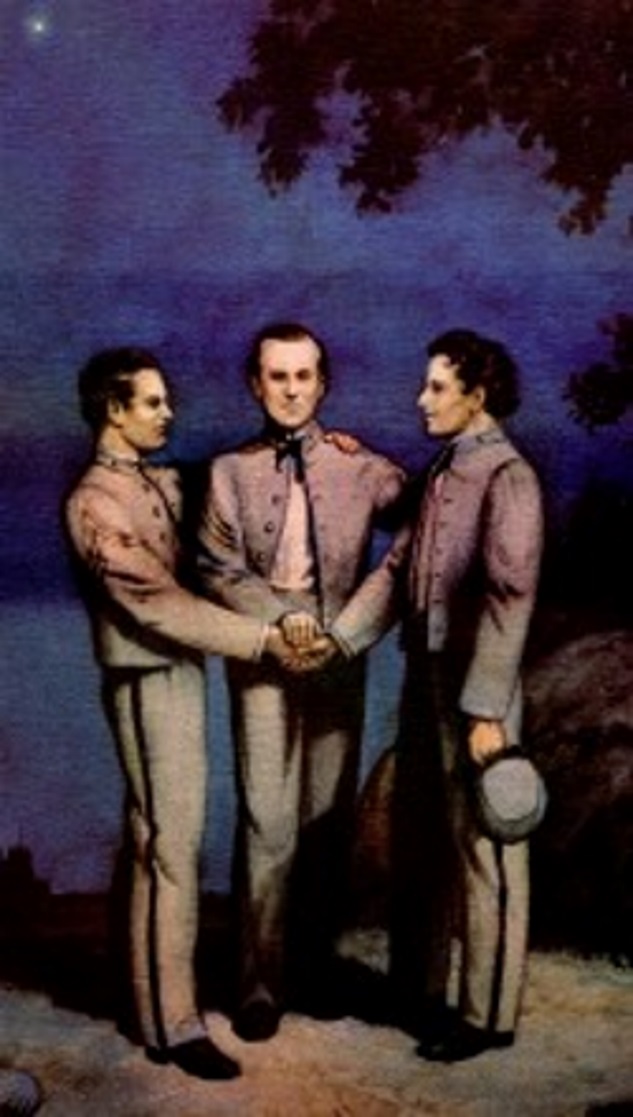
Introduction
Take a few moments and think about the most outstanding teams you have known. It could be a high school team you were a part of, a college team or a professional team. What are some of the adjectives you would use to describe that team?
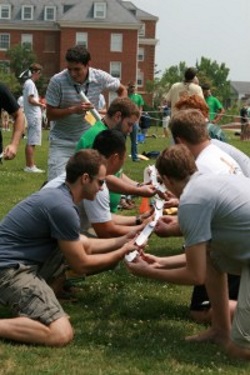
Some thoughts on teams as they related to Sigma Nu:
- Many of the same characteristics and attitudes that made the team you thought of successful will also help you as a brother in Sigma Nu.
- Working together effectively is what will help make your experience in Sigma Nu great.
- Nothing in the chapter can work unless members are truly working together.
- The most enjoyable part of success is knowing that you accomplished it together.
- Understanding each other and what everyone can bring to the group is important to your success.
- There are roles in the group (formal and informal) that will be important as your group strives toward its goals or works on projects.
Best TEAM Experience
Think about your best experience as a member of a team. You can define a great team any way you like; however, it should be a team where you felt personally committed, where you used your abilities to help, and where the team achieved extraordinary results.
- Have you ever been a part of a great team? Consider the team and its circumstances.
- What was different about the team? What was special about being on this team?
- What did you add to the team?
- How can your Candidate Class create those kinds of feelings?
- What shared values do you think are necessary to establish and maintain a supportive and successful Candidate Class?
Groups and Team Development
How much do you know about groups and team development?
The definition of a TEAM…
A group of people: each of whom possesses particular expertise; each of whom is responsible for making individual decisions; who together hold a common purpose; who meet together to communicate, collaborate, and consolidate knowledge.
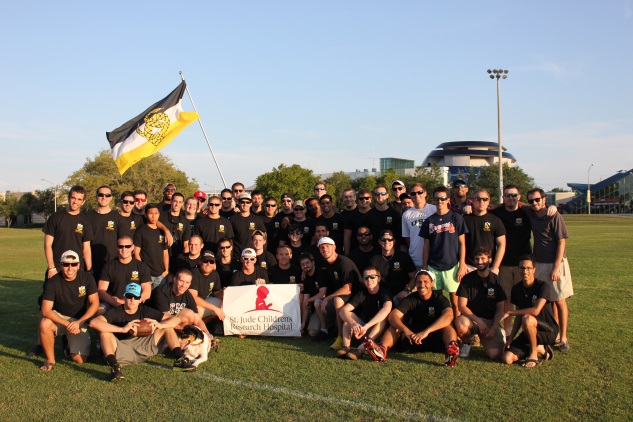
The definition of TEAMBUILDING…
An effort to improve the problem-solving ability among team members by working through task and interpersonal issues.
Goals of TEAMBUILDING…
- Gain a better understanding of each team member’s role in the group.
- Gain a better understanding of the team’s character – its purpose and role in the total functioning of the organization.
- Increased communication among group members about issues.
- Greater support among group members.
- A clearer understanding of the group process – the behavior and dynamics of a group that works together.
- More effective ways of working through problems inherent to the team – at both task and interpersonal levels.
- The ability to use conflict in a positive, rather than a destructive, way.
- Greater collaboration among team members and the reduction of competition that is costly to individuals, groups and organizations.
- To gain a sense of interdependence among group members.
The nature of groups and group development, within Sigma Nu, can be described to occur in four stages…
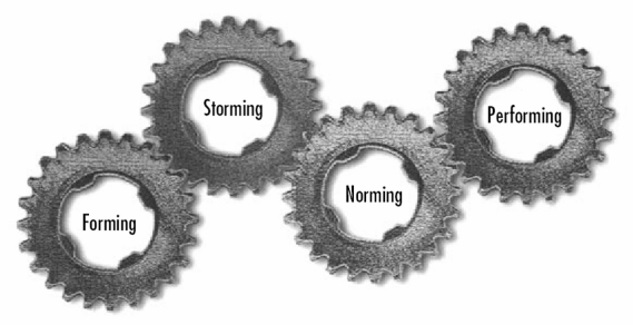
FORMING: A group goes through this initial stage when its members first come together. At this stage, the leader should provide opportunities for group interactions. Start by encouraging members to introduce themselves – never assume everyone in a group is acquainted.
STORMING: The second stage occurs once the members have become comfortable with each other. Conflicts may occur at this stage over issues such as power, leadership, goals, and attention. These potential problems can be minimized by setting standards and modeling desired behavior. Often group members look to each other for standards of behavior, particularly in terms of the acceptable levels of criticism and conflict and the ways in which disagreements are handled.
NORMING: During the third stage, conflicts are resolved, and the group begins to function smoothly as a unit. These functions include working out compromises, encouraging participation, maintaining a positive environment, and handling individual problems.
PERFORMING: Now the group experiences maximum productivity and involvement. Members recognize each other as being important components of the group.
All groups go through each of these stages. Some will progress through the stages more quickly than others, but they will go through each.
Roles of Group Members
By nature, members of groups will take on different behaviors during a meeting. Your chapter probably includes the following cast of characters:
- The initiator-contributor suggests or proposes to the group new ideas or a changed way of regarding the group’s problem or a goal.
- The information seeker asks for clarification or suggestions.
- The opinion seeker asks for the viewpoints of other members.
- The information giver offers facts or generalizations that are authoritative. He also relates his own experience to the group problem.
- The elaborator spells out suggestions in terms of examples, offers a rationale for suggestions previously made, and tries to deduce how an idea would work if adopted by the group.
- The orientor defines the position of the group with respect to its goals by summarizing what has occurred.
- The energizer prods the group to action or decision.
- The recorder writes down suggestions and makes a record of the group’s decisions.
- The encourager praises, agrees with, and accepts the contributions of others.
- The harmonizer mediates the differences between other members, attempts to reconcile disagreements and reduces tension.
- The compromiser operates from within a conflict in which his idea is involved. He yields status, admits error, or disciplines himself to maintain group harmony or growth.
- The aggressor works in many ways – deflating the status of others, expressing disapproval of values, attacking the group, joking aggressively.
- The blocker tends to be negative and resistant, disagreeing beyond reason and attempting to maintain or bring back an issue after the group has rejected it.
- The recognition seeker works in various ways to call attention to himself through boasting or reporting on personal achievements.
- The dominator tries to assert authority or superiority in manipulating the group.
Group Cooperation
Successful group action in solving problems and addressing group goals is often dependent upon understanding some basic principles about the way people behave in groups and the kinds of behavior you as a leader want to encourage.
The following should prove useful in maintaining group cooperation:
- Identify with other members – Try to find out how the other person feels. Don’t assume that what you want is what others want too. Discovering common attitudes among group members is productive.
- Encourage participation – Ask for opinions and encourage everyone to take an active part in the discussion. People participate in individual ways, so be tolerant and helpful in encouraging them.
- Create an open environment – As a leader, it’s your responsibility to create an atmosphere in which honesty and openness exist. Keep things moving but allow the group to make the decisions when they are ready to do so.
- Keep the lines of communication open – Explain and listen. Make the messages you give honest and accurate. Encourage dialogue where your goal is to understand where the other person is coming from.
- Understand conflict – Conflict can be a useful part of group interaction. People need to feel free to express themselves and their opinions. Often, conflict can help the group develop better solutions.
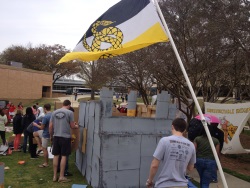
Brotherhood
“It is not the critic who counts; not the man who points out how the strong man stumbles, or where the doer of deeds could have done them better. The credit belongs to the man who is actually in the arena, whose face is marred by dust and sweat and blood; who strives valiantly; who errs, who comes short again and again, because there is no effort without error and shortcoming; but who does actually strive to do the deeds; who knows great enthusiasms, the great devotions; who spends himself in a worthy cause; who at the best knows in the end the triumph of high achievement, and who at the worst, if he fails, at least fails while daring greatly, so that his place shall never be with those cold and timid souls who neither know victory nor defeat.” ~Theodore Roosevelt
The definition of brotherhood differs among various people and organizations. Sigma Nu’s definition has to do with the lifestyle of the Legion of Honor, which relates specifically to the mission and purpose of the Fraternity.
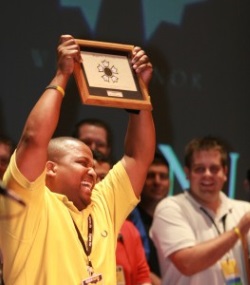
The mission of Sigma Nu is stated simply and clearly…to produce ethical leaders for society. The why requires no justification. The what needs no explanation. The when is now. The challenge lies only in the how and in just who qualifies.
Brotherhood means responsibility – The man who stands tall by fulfilling commitments to parents, alma mater, Sigma Nu, by making his grades, paying his fair share of costs, and contributing his fair share of time and talent to the chapter justly earns himself the label of Brother and Knight of the Legion of Honor. Central to the Brotherhood concept is the commitment not only to do the right thing, but to do it in a timely manner.
Brotherhood means selflessness – Caring enough for the common good of the whole chapter for all the right and honorable reasons defines Sigma Nu brotherhood at its best. Caring about the safety and welfare of each Brother and Candidate and treating them like they are family truly denotes brotherhood.
Brotherhood means sportsmanship – Fair play, cooperation, motivation, living up to rules and policies, giving credit where credit is earned, being a self-starter and remaining self-reliant are characteristics of a sportsmanlike attitude as well as a Sigma Nu brotherhood. Team play and good sportsmanship are evident in a true brotherhood.
Brotherhood means honesty – There is no substitute for being honest and truthful. It defines the Way of Honor. It connotes trust, reliability and genuineness, which is the only way for Sigma Nu.
Brotherhood means reliability – The Sigma Nu way is to be counted on to fulfill one’s commitments, to keep one’s promises, and to have the courage of one’s convictions by speaking up and defending what is right while opposing what is wrong. To do this in a fraternal and respectful manner, while remaining consistent in one’s commitment to complete assigned tasks and fulfill expectations by getting a job done well is the Sigma Nu lifestyle.
Brotherhood means trustworthiness – People quickly gain faith in those who exhibit honesty, truth, faithfulness, loyalty and dedication. Keeping one’s word and listening more than talking helps one earn the trust of others. To be trusted enough to be taken into the confidence of others helps qualify one to be a Sigma Nu. To be able to be counted on makes one a true brother.
Brotherhood means respect – Respect is gained or lost by the deeds we do or fail to do, by what we say or fail to say, and by our attitude toward others. Feeling genuine respect for others and showing it is the basic fiber that binds strong the bonds of brotherhood, the very luster that attracts others to want to be a Sigma Nu.
Brotherhood means friendship – To be a brother and to be part of a genuine Brotherhood requires caring beyond that of mere friendship or companionship. Genuine Brotherhood imposes a special obligation between friends. Brotherhood is caring about each other and each other’s welfare. When one is only a friend of another and loses that friendship, the friend is gone. But, when one is a Brother and loses the friendship of another Brother, Brotherhood still binds the two together. Genuine Brotherhood transcends the interruption of friendship.
Brotherhood means duty – A Brother in Sigma Nu has a duty to a much higher order than himself: a duty to his God, country, family, alma mater, and to his Fraternity. A Brother’s duty is to uphold the principles and policies of this Fraternity into which he voluntarily accepted membership and which extended him the privilege of becoming a Candidate, and hopefully a Brother. Fulfilling one’s duty is fulfilling the vows of Brotherhood at all times.
Brotherhood means accountability – Honor means admitting the truth, acknowledging blame if it is just, and facing appropriate discipline. Being liable for one’s words and deeds is the first step toward full accountability. Brotherhood is reliant upon Brothers holding each other accountable.
Brotherhood means cooperation – Cooperation is the fuel that sparks the Brotherhood toward success. The greater the degree of cooperation among the Brothers and Candidates the closer the Brotherhood and the more successful the chapter.
Brotherhood means family – All the above can be synthesized into a single concept: family. In a close family, each member has a special responsibility to and for each other. Selflessness is central to family relationships. Sportsmanship exemplifies the fairness which family members extend to each other. Honesty and truthfulness are constants enabling family members to believe in one another. Reliability provides the assurance that gives family members confidence in each other. Trustworthiness is the foundation of family reliance. Respect reveals the affection family members have for each other. In all that family members do for, and feel about, each other, duty to family is revealed by the unfaltering encouragement and support family members give to and receive from each other. Accountability reflects the integrity of the family. Cooperation keeps the family unit working together. These concepts underscore the fundamental nature of a true Brotherhood at its best.
Brotherhood means fun – Having fun must never negate the all-important concepts mentioned above, notably that of being responsible, but a good time is an important part of the Brotherhood ideal. Indeed, enjoying the Sigma Nu experience is not separate from, but very much a part of, strengthening and preserving the Brotherhood.

Brotherhood is not easy
A closer look at brotherhood shows us that creating and maintaining it is no simple task in this day and age when doing right is often compromised by preference for being popular, especially among peers. Therefore, the attempt here is to leave little to one’s imagination, for at this stage of a Candidate’s orientation to Sigma Nu, he needs to be acutely aware of all his obligations to the Fraternity. Further description may help tie them to reality within the chapter setting.
When one voluntarily commits to a fraternity, he must be willing and able to assume a host of obligations, particularly as they relate to the organization’s purposes and principles. Otherwise, he becomes a burden, merely taking advantage of what the group has to offer by using the Brotherhood for his own personal gains while offering little in return. One with freeloading, selfish tendencies should not be offered membership in Sigma Nu in the first place. But, if by mistake a freeloader should achieve candidacy or initiation, he should be de-pledged or expelled as soon as it is obvious that he refuses to be educated in heart, mind, and character toward becoming a full-time contributing Brother. Part-time Brotherhood is not an option in Sigma Nu. Brotherhood is for life.
Brotherhood Obligations
What are the obligations of Brotherhood?
They include making your grades, paying your bills on time, doing your fair share of chapter duties, and contributing your fair share of time and talent to the benefit of the entire Fraternity. These are examples of what Sigma Nu is all about. If one is not willing to try his best to do this much for the fraternity that invited him to join and that he voluntarily agreed to join, he should part in friendship. Good stewardship (i.e. caring for property, both the property of others and of the chapter) is a part of the Brotherhood obligation in Sigma Nu. Doing one’s fair share in keeping the chapter home clean and safe is the test of a Brotherhood that cares. The image of a Sigma Nu chapter is frequently determined by how well the chapter home is maintained, by the actions of each brother and candidate, in both public and private settings, by the reputation the Brotherhood earns at chapter social functions, and in their academic performance.
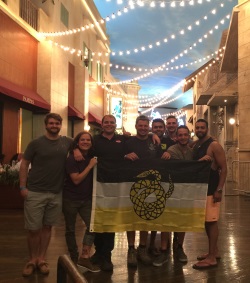
Where does friendship part company with Brotherhood? If one has a friend he wants to keep, he may hesitate to point out his friend’s faults or correct him when he deserves it most. Fear that criticism may end friendship separates a mere friend from a true Brother. Constructive criticism offered with compassion is a function of Brotherhood. One can be a friend without being a Brother, but one cannot be a true Brother without being a true friend. As a Brother, one has a higher duty to his Brothers and a larger loyalty than he devotes to mere friendship.
Dependability as a function of Brotherhood is in essence always getting a job done in a quality and timely manner. It fulfills both obligation and expectation. Coming through every time for the cause of the chapter is the ultimate in Brotherhood. In summary, doing all that one says he will do and being what he says he will be makes him true to his word. To be trustworthy, one must be honest and truthful both with oneself and with others. Honesty, trustworthiness, and reliability add up to that most precious of human qualities, integrity. To get it, one must earn it. To keep it, one must continue to earn it daily. Lose it, and it’s a long, lonely road getting it back.
What Brotherhood is not
The outward manifestation of the lack of Brotherhood is no more vividly portrayed than in one person’s improper treatment of another: casting aspersions or belittling others with racial or sexual slurs, derogatory words, insensitive songs, negative attitudes or actions against any other person. The Brotherhood ideal is affronted by acts of sexual abuse or assault, sexism, racism, and substance abuse. Such acts are clearly unacceptable in Sigma Nu.
And, of course, hazing in any form (psychological or physical) is as non-brotherly as any act can be. It is against Sigma Nu law.
The wanton, careless disregard for self, for others, and for one’s own property and the property of others, clearly characterizes what Brotherhood is not. Brothers and Candidates who trespass on the property of others; allow excessive noise or loud music to disturb neighbors; shout or gesticulate obscenities; expose themselves; put into print or on the internet unacceptable language and images; or print foul words on T-shirts, pamphlets, letters, and the like, show no respect for others or for the Fraternity. Those who lack such restraint bring the Fraternity’s name into bad repute and simply are not Sigma Nu material.
Having Fun
Enjoying life fully is also what Sigma Nu is all about. Therefore, encouraging one to successfully enjoy his college experience is part of the Sigma Nu mission. But enjoyment without bringing harm to others and to oneself, without offending or impinging on others and/or the property of others is prerequisite to having lasting fun, all of which must be kept, of course, in sync with the principles of Sigma Nu Fraternity.
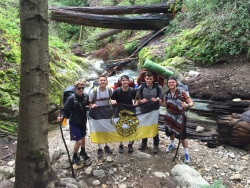
The three cadet Founders at VMI were, of course, the first Sigma Nus to really enjoy and benefit from Brotherhood in the Legion of Honor. They had a great chapter, and they lived their fraternity experience fully. Brother James Frank Hopkins was the serious one. A truly honest and exceptionally hard-working man, he was clearly the most revered. All others looked up to him. He was a genuine leader and a genuine Brother, a gentleman in the truest sense. Brother Greenfield Quarles was extremely talented and influential, a phenomenal orator. Together, he and Hopkins were deep thinkers, planners, and doers. Brother James McIlvaine Riley, just as much a doer, was especially fun-loving, enthusiastic, motivational, and always did more than his fair share of chapter chores. He was a natural comedian, the proverbial life of the party.
Not one of the three by their actions or words ever failed the Brotherhood ideal. They always upheld the Honor of Sigma Nu in everything they did and said. They were a natural team. Their individual talents greatly complemented each other. Their commitment to Sigma Nu’s principles was unanimous. As honest men, they were reliable, trustworthy and hardworking. They were effective communicators and their message was contagious. They cared about each other, helped one another, looked out for the welfare of each other and their chapter, always did more than their fair share of the work for the chapter and absolutely paid their fair share of the cost. They did all this and more for the glory of Sigma Nu. Far be it from any Sigma Nu today who has voluntarily followed them into the Legion of Honor to expect less of himself.
Being a complete Sigma Nu at heart, and not an occasional Brother who merely wears the Badge, is what Brotherhood is all about. When one is initiated, the General Fraternity does not supply him with a Badge of one or two arms, but all five because each chapter is trusted to initiate a fully prepared, totally committed, genuine Brother. Genuine Brotherhood in Sigma Nu is tough stuff. The Sigma Nu lifestyle is uniquely centered on helping people acquire knowledge, rather than using people to acquire things. It is Sigma Nu’s mission, therefore, to empower its Brotherhood to grow in mind, heart, and character, so that collegiate members may move gracefully out into the world after graduation. That’s Brotherhood Sigma Nu style!
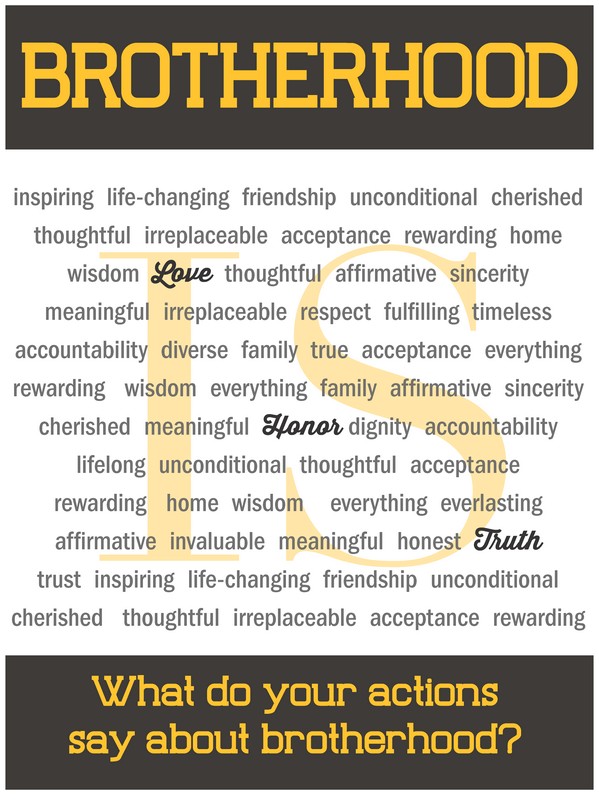
Introduction
Sigma Nu Membership is for life. To begin, however, you must first understand your obligation to Honor.
No man is an island unto himself. When you become a member of this Fraternity, you take on the duty of preserving and protecting it and making it stronger and more successful. Otherwise, you are taking away from it rather than giving to it. The more you put into Sigma Nu, the more you will receive from it. Your fair share of time, talent, and treasure is what it takes, and all it asks from you. Just your fair share. Fortunately, many put more than their fair share into Sigma Nu. They are the ones who receive commensurately what their Fraternity has to offer. They are the honorable ones, they are the Hopkins, Quarles, and Riley of your chapter. They are also the ones who refuse to commit any act or speak any word that brings Sigma Nu’s name into ill repute. And they are the ones who refuse to allow anyone else in their chapter to do otherwise. They are the mindful, not the mindless.
It is they who best understand and appreciate the concepts of Sigma Nu’s Creed as a guide to behavior. What some think may be a harmless, perhaps a humorous, thing to do, may not be honorable. The true Sigma Nu carefully weighs the consequences of every word and deed before committing the Fraternity’s image and reputation to any act. No one has the right to blemish this Fraternity, to use it as a platform for actions that would impair its reputation. Ours is known as a tough Brotherhood, demanding the hard side of responsibility, which dictates sacrifice, hard work, careful forethought (rather than afterthought), prudence, and patience. All this is the opposite of instant gratification. All this is the Way of Honor. You are invited to be listed among the noble few who, like our Founders, know the right thing to do and do the right thing.
Fraternity Structure and Governance
As one of the newest members of your chapter, you may be a little unfamiliar with our Fraternity’s inner workings, but with assistance from the Marshal and other officers and chapter members, and knowing the contents of Phase I of the LEAD Program, your knowledge of Sigma Nu will increase quickly.
The Brotherhood you have willingly and voluntarily joined, has a multitude of obligations to others: to the General Fraternity, to the alumni, to the parents, to the host institution, to the community, and to each other. Indeed, one of Sigma Nu’s obligations is service to others. In the process of serving others, we become an organization that people look to for help and guidance whenever needed. That’s part of our mission.
Your chapter is one of many that comprise the Sigma Nu General Fraternity. We are international in scope. It has required an enormous quantity of effort from a great many Brothers to make Sigma Nu the viable organization that it is today and one of which you can be proud. We are the North American College Fraternity at its best. Therefore, the challenge is for you to strive valiantly and continually to build upon and make better what you have inherited, your chapter of Sigma Nu. Not only should you do this for yourself, but especially for those who will follow in your footsteps.
The following sections describe the organizational structure of the Fraternity from the Grand Chapter all the way down to the individual member. For an interactive review of each organization, governing document, and individual in the Fraternity's organizational structure - including a breakdown of alumni involvment - please click here.
Grand Chapters
The democratic legislative process of Sigma Nu Fraternity, Inc., commonly referred to as the General Fraternity, may be compared to that of a state or province in many respects, indeed to the federal government in other respects. The governance process of Sigma Nu begins with a legislative convention held every other year. This convention, perhaps more appropriately entitled a convocation, is called the Grand Chapter of Sigma Nu Fraternity. It is the chapter meeting of all chapters. Here, representatives of the Fraternity’s collegiate and alumni chapters and General Fraternity officers meet in a four-day session, a portion of which is devoted to enacting new legislation, electing leaders for the next two years, and celebrating achievements past. Here also, the reports of the Fraternity’s programs are presented, its officers and chapters called on for an accounting of their activities and actions, goals set for the new biennium, and a two-year budget for the operation of the General Fraternity adopted.
At the Grand Chapter, the collegiate voice is predominant, with each collegiate chapter entitled to two voting representatives. Each alumni chapter has only one vote, while certain officers of the General Fraternity, namely, the Grand Officers, have one vote each. The General Fraternity staff are entitled to a voice, but no vote. For a typical Grand Chapter, this means students hold 2/3 to 3/4 of the total votes.
Another important function of the Grand Chapter is to elect the new High Council, the highest officers of the General Fraternity, for the next biennium. In this sense, the Grand Chapter is a representative assembly which, in addition to its lawmaking functions, elects the alumni officers of the executive branch (High Council) of the Fraternity’s government who have the challenge of executing the Fraternity’s laws, policies, and guidelines and conducting other general affairs of Sigma Nu until the next Grand Chapter.
The Grand Chapter is an example of representative democracy at its best where the voiced concerns of all Brothers, both collegiate and alumni, are heard and debated and where appropriate action is taken by majority vote for the good of the entire Brotherhood. It should be remembered that the Grand Chapter reigns supreme over all affairs of the Fraternity including over all its members regardless of rank and position.
The Law of Sigma Nu Fraternity, Inc.
Every organization operating under the democratic process needs a written code to define its requirements for membership and the relationship of its various constituent bodies. To function effectively every ongoing organization must also have clear guidelines for the conduct of its members, well-defined standards for its officers, and a fair and just procedure for disciplining its members, especially those who violate its law and principles. Sigma Nu has created a democratic government for the orderly conduct of its affairs, the implementation of its programs and the enactment of its rules, policies and guidelines.
The written rules and policies governing Sigma Nu are set forth in a document entitled The Law of Sigma Nu Fraternity. They are limited in volume because Sigma Nu is chartered to be an organization that holds high expectations of all its members to live up to the Honor Principle, and therefore provides broad decision-making freedoms and opportunities to each collegian and alumnus.
The Law is the Fraternity's constitution. It sets membership requirements, standards of conduct, and the framework for the operation of all entities of the Fraternity, including collegiate chapters. The Law also includes the Trial Code – a set of due process rules and procedures for disciplining initiated members.
The first edition of The Law had already been written at the time of the first convention of the Fraternity in July 1884, when there were only six active chapters. Since that time, The Law has by necessity become more comprehensive in order to govern the activities of an expanding General Fraternity and all its component parts.
All actions of the General Fraternity, including those of the collegiate chapters, are subject to The Law.
The Law itself is amended, revised, and updated at each Grand Chapter in order to meet the changing requirements of operating a rapidly growing General Fraternity in a vastly changing society. Next to Grand Chapter, The Law reigns supreme over all affairs of the Fraternity and its members regardless of rank and position.
In addition to the Constitution, The Law of Sigma Nu embodies an important second element – the Trial Code. The Trial Code is designed to ensure justice to any initiated member who may be charged with an offense, a violation of Sigma Nu Law, chapter bylaws, or a violation of the principles of Sigma Nu. It embodies a process for a fair hearing, presentation of facts, defense for the accused, and for prosecuting the guilty.
Deliberate violations of The Law and delinquent conduct contrary to our fraternal principles not only bring personal dishonor to a chapter and the General Fraternity but may result in charges being brought against the accused member and a trial by his peers, who act as judge and jury. If found guilty, the punishment imposed by the chapter can result either in suspension or expulsion from the Fraternity. Such drastic punishment is not lightly imposed, and the possibility of its imposition by one’s peers emphasizes the seriousness of their fraternal commitment. It further demonstrates Sigma Nu’s fundamental thesis of providing its collegiate members with maximum autonomy for self-regulation. The Trial Code provides for full due process of law to any accused member – a fair trial with the right of appeal to the High Council and to the Grand Chapter.
View The Law of Sigma Nu Fraternity, Inc.
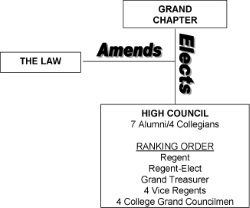
The High Council and Division Commanders
High Council is analogous to a board of directors of a business corporation or to a cabinet of the executive branch of government. It serves as the governing arm of the General Fraternity during the two-year period between Grand Chapters.
The High Council consists of seven alumni members and four voting collegiate members called Collegiate Grand Councilmen. Thus, collegiate Brothers are present, the collegiate voice is heard, and their votes count at each High Council meeting. Few other fraternities equal the extent of Sigma Nu’s collegiate voice and vote in the governance of a college fraternity.
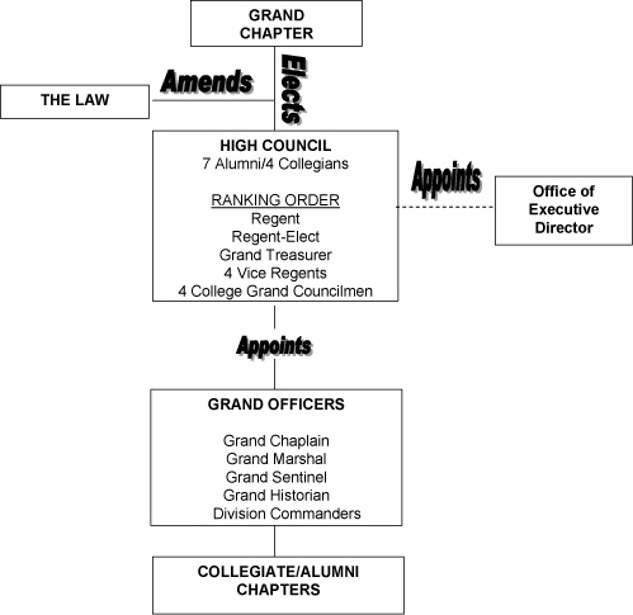
The High Council has general charge of all business and administrative affairs of the Fraternity, except for those which are specifically conferred by The Law to other Grand Officers and the Office of Executive Director. The powers and duties of the High Council are enumerated in The Law. During the interval between Grand Chapters, the High Council has authority to act on all matters relating to the General Fraternity, especially those which are not specifically regulated by The Law.
All members of the High Council serve without compensation, except for reasonable cost for official Fraternity business travel. Election to, and service on, the High Council is considered an expression of confidence in, and high respect for, those who volunteer their time, talent, and treasure to the cause of Sigma Nu.
The Grand Officers to the General Fraternity, in ranking order, are:
- Regent
- Regent-Elect
- Grand Treasurer
- Vice-Regents (four)
- Collegiate Grand Councilmen (four)
- Grand Chaplain
- Grand Marshal
- Grand Sentinel
- Grand Historian
- Division Commanders
THE REGENT is the chairman of the board, much as the Commander is the chairman of the collegiate chapter. He is provided no special authority over the rest of the High Council. It takes a majority, and sometimes the unanimous, vote of the entire High Council for the action of the Council to be legitimate. The Law does provide the Regent with the privilege of appointments of alumni to certain volunteer positions, but in general the Regent, like the Commander of the chapter, is expected to exercise creative leadership by inspiring the rest of the Council, staff, key alumni volunteers, and collegians to achieve collective agreement for the betterment of Sigma Nu. The Regent may not succeed himself.
THE REGENT-ELECT also is elected by the Grand Chapter for a two-year term and may not succeed himself. Upon completion of his term in office, the Regent-Elect automatically ascends to the office of Regent for a two-year term.
THE GRAND TREASURER is elected by the Grand Chapter for a two-year term and may, by vote of Grand Chapter, succeed himself for a maximum of three terms.
FOUR VICE-REGENTS are elected by the Grand Chapter for a term of two years.
FOUR COLLEGIATE GRAND COUNCILMEN are appointed by the High Council to serve as collegiate representatives and voting members of the High Council. The Collegiate Grand Councilmen serve for a general term of one year and/or until their successors are appointed.
THE GRAND CHAPLAIN, THE GRAND MARSHAL, THE GRAND SENTINEL, and GRAND HISTORIAN are appointed by the Regent.
DIVISION COMMANDERS are alumni, appointed by the High Council, upon recommendation of the Office of the Executive Director. Chapters of the Fraternity are grouped geographically into Divisions. The Division Commander represents an important link between the various alumni entities (Advisory Boards, Alumni Clubs, Alumni Chapters, and House Corporations) and the General Fraternity. Like other Grand Officers, the Division Commander is a volunteer who receives no financial compensation other than reimbursement for reasonable cost of official Fraternity business travel. His role is primarily advisory, although he may be appointed by the High Council to represent them in specific times of need.
General Fraternity Staff
The General Officers and Staff of the Fraternity are as follows:
- Executive Director
- Director-level Staff
- Consultants
The Executive Director is the chief executive officer of the Fraternity and is a full-time employee. He is employed by and is an agent of (therefore, directly accountable to) the High Council. His duties are generally prescribed by the High Council and The Law. He is specifically responsible for the day-to-day management of the Fraternity, which includes the implementation of approved plans, programs, and activities designed to accomplish the goals, decisions, and directions established by the Grand Chapter and the High Council. He appoints and supervises all Fraternity staff members and other paid employees of the Fraternity.
The Executive Director also appoints, assigns duties, and supervises such other assistants as are approved by the High Council, many of whom serve as Leadership Consultants with the task of providing advice and assistance to collegiate chapters. The Executive Director also supervises the General Fraternity staff. These employees are responsible for the myriad of daily tasks which enable the General Fraternity to serve its collegiate chapters and alumni constituents. The staff maintains offices at the Fraternity Headquarters in Lexington, Virginia.
The Sigma Nu Educational Foundation
The Foundation’s offices are also in Lexington, Virginia, at Sigma Nu Headquarters. The Foundation works alongside the General Fraternity staff to accomplish many of the shared strategic goals of Sigma Nu. The Sigma Nu Educational Foundation, Inc., as a registered non-profit organization, owns and operates the 13-acre Sigma Nu Headquarters Property. The Foundation employs a facilities manager who maintains the grounds, buildings, and all other aspects of the property. The Sigma Nu Educational Foundation functions to provide lasting resources in support of the General Fraternity’s educational programs and philanthropic endeavors. By giving back to the Foundation through one’s time, talent, or treasure, members of Sigma Nu can ensure future Brothers of the Fraternity will enjoy an equal or greatly improved fraternal experience as they had the benefit of receiving themselves.
Supplemental funds for scholarship and educational programs are administered by the Sigma Nu Educational Foundation in the form of grants to the Fraternity and for individual chapters and house corporations who have set up scholarship or housing accounts through the Foundation. The Foundation allows both collegiate and alumni members to make tax-deductible donations in support of Sigma Nu’s mission, something they are unable to do directly to their own chapters due to tax regulations.
Donors to the Educational Foundation can make direct contributions to the general fund, maintenance and improvements to the Headquarters property, specific Fraternity programs (like LEAD), or scholarship funds. Foundation donors can also establish and contribute to chapter-specific housing, educational, and scholarship funds.
The Foundation’s collegiate giving society is the 1869 Club. Collegiate donors support programs like the College of Chapters, Sigma Nu Institutes, and the LEAD Program by pledging at least $18.69 per year to the Educational Foundation. Learn more about and join the 1869 Club.
Collegiate Chapters
Collegiate chapters are the grass roots of the General Fraternity. It is only through a collegiate chapter that an individual may become a member of Sigma Nu (Article 4, The Law). The governmental organization of the collegiate chapter is prescribed by The Law of Sigma Nu, and the chapter bylaws which are subordinate to The Law of Sigma Nu. However, it is re-emphasized that the General Fraternity is governed by the collegiate membership through their majority voting strength at each Grand Chapter.
The day-to-day operation of each collegiate chapter is conducted under the authority of the collegiate membership. The charter granted to the chapter serves as the official license permitting the chapter to utilize the name of Sigma Nu. The charter is a contract or covenant between the collegiate chapter and the General Fraternity and imposes upon the collegiate membership the obligation to adhere to the principles of the Legion of Honor and all its policies, to abide by the laws of the land and the rules and regulations of the sheltering institution. The autonomy of undergraduates to operate the collegiate chapter is fundamental to the governance structure of Sigma Nu, however. Adhering to the Jeffersonian thesis that least governed is best, Sigma Nu believes that only through self-government will students rise to maturity and responsibility. Hence its laws, policies and guidelines are limited in scope and designed to encourage and persuade, rather than to regulate and control.
Finally, the High Council may authorize the establishment of collegiate colonies at those institutions where there is no Sigma Nu Chapter in existence. Qualified members of colonies are not initiated as members of the Fraternity until the colony is presented with a charter which establishes it as an official chapter of Sigma Nu. Colony members are invited to attend meetings of the General Fraternity but have no official vote until such time as the colony is chartered and its members are initiated into Sigma Nu. For a colony to be approved for chartering as an official chapter of Sigma Nu it must meet similar performance levels as Rock Chapters, as measured through the Fraternity’s Pursuit of Excellence Program.
View the current map and listing of active chapters and colonies.
Alumni Chapters
For each collegiate chapter, there may also be an official alumni chapter. The High Council is empowered to grant a charter to an alumni chapter providing that a proper petition has been submitted by at least ten alumni Brothers from the same collegiate chapter and the High Council deems the alumni chapter would benefit the General Fraternity and the collegiate enterprise. An alumni chapter is entitled to one voting delegate at each Grand Chapter.
Chapter Governance
In order to be entitled to full membership in Sigma Nu, you must become a full-fledged, responsible and committed participant in chapter affairs and learn the necessary management skills required to conduct the important business of a successful Brotherhood association. To assist you in meeting this challenge, you will need to know the chapter’s organizational structure and the functions of collegiate officers and alumni leaders who are committed to caring for and improving the physical, cultural and intellectual assets of your chapter.
The Charter
The charter is a license of operation for a collegiate chapter and is representative of The Law and High Council.
The charter is a revocable license which authorizes a group to operate as a collegiate chapter in the larger association known as Sigma Nu Fraternity for as long as the Brotherhood continues to uphold and promote the principles established by the Founders of the Legion of Honor, offers a worthy developmental experience for the membership, and conducts chapter affairs in a lawful, honorable, and successful manner. The charter was earned by your chapter founders and has been sustained through the years by your predecessors. Although it is but a piece of parchment, its presence on the wall of your chapter house or lodge, or as a part of the decor on display at chapter meetings, serves to empower you and the other members of your chapter with all the rights and privileges of Sigma Nu membership. Of all your chapter’s possessions, it is by far the most important because it legitimizes everything the Fraternity stands for and entitles your chapter to represent Sigma Nu, but only in an honorable manner, on your campus.
But it must be remembered that your chapter consists of both its alumni and collegiate members. Ours is not just an undergraduate organization. While the members in college have the primary responsibility for managing the daily operations of your chapter, the alumni who helped accumulate the chapter assets, chiefly property and reputation, also play an important role in the preservation and advancement of the chapter.
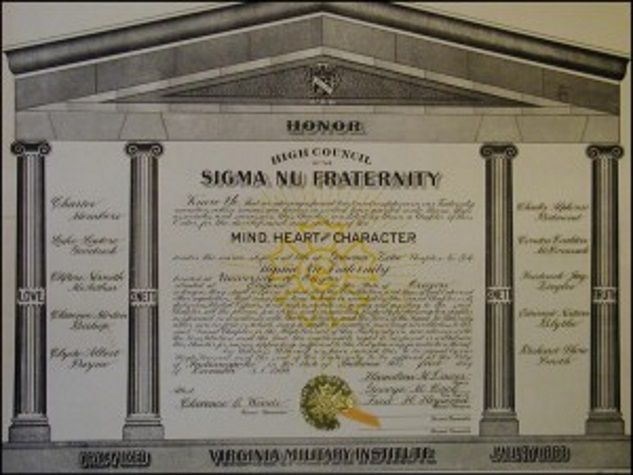
Charter Text
Know Ye, That we reposing especial trust and confidence in our Fraternity members whose names are hereon inscribed have granted unto them their associates and successors this Charter constituting them a Chapter of this Order for the development and culture of the
MIND, HEART and CHARACTER
Under the name, style and title of “CHAPTER DESIGNATION” Chapter No. “CHAPTER NUMBER”
Sigma Nu Fraternity
located at “INSTITUTION NAME”
situated at “CITY” in the State of “STATE”
so long as they shall conform to and obey the Constitution and Laws of said Order and duly constituted Officers and Representatives giving and granting to the said Chapter all the powers, privileges and immunities properly pertaining to a chapter as aforesaid, in accordance with the Constitution and the Laws of the Sigma Nu Fraternity, either now in force or which may hereafter be enacted, reserving nevertheless to the said Grand Chapter or the High Council of this Fraternity in accordance with the Constitution and the Law, the inalienable right to suspend or withdraw this Charter for reasons appearing sufficient to the body having jurisdiction thereof.
In Witness Whereof, we have caused this to be signed by our High Council and the seal of the Fraternity to be affixed at the City of Lexington in the State of Virginia this “DATE” day of “MONTH” A.D. “YEAR”
The Collegiate Chapter
The collegiate Chapter, when convened in a formal business session, is analogous to the Grand Chapter at the General Fraternity level. It is the ultimate governing body of the chapter. In total, the Chapter includes all current members enrolled at the college/university.
The authority of the Chapter is exercised through a meeting, or convocation, of the current membership. Generally, this meeting of the Chapter is held on a weekly basis to discuss chapter business, make decisions regarding chapter business, to hold members and officers and accountable, and to authorize the authority of officers and committees as well as to establish the operational procedures of the chapter.
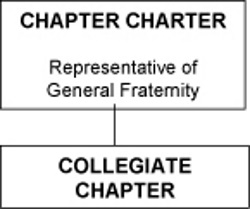
Chapter Bylaws
Bylaws are a set of guidelines and policies established by the Chapter to govern the authorities granted to officers and members in the time between the chapter meetings. The bylaws are similar, but subject, to The Law and are to be directed to the operations of the chapter only.
Chapter bylaws should outline specific voting procedures, officer and committee duties and responsibilities not outlined in The Law, and should establish the judicial procedures of the chapter. Additionally, the bylaws need to clarify the details of membership in each chapter; the financial obligations of the members; and the consequences to be faced by chapter member who might violate the policies, guidelines, laws and/or regulations of the chapter, fraternity, university, city, state and country. It must be re-emphasized now, though, that chapter bylaws must not contradict The Law of Sigma Nu Fraternity, Inc.
Chapter Officers
Keeping the chapter on a steady course toward success and achievement while upholding the ideals of Sigma Nu is no easy task. Hence, the position held by each chapter officer and the challenge he must face entitles him to the respect and cooperation of the entire Brotherhood. That does not mean that chapter officers are entitled to exercise totalitarian authority (i.e. throw their weight around). It does mean that they deserve the support of the membership in getting their task completed and their objectives, as approved by the chapter, accomplished.
Chapter officers are challenged to meet certain objectives to the best of their abilities. To accomplish their duties, however, they first must be committed to Sigma Nu’s ideals and to achieving approved goals. Such goals must be approved by the collegiate Brotherhood and enjoy the enthusiastic encouragement of the Chapter Advisors and House Corporation. Chapter officers have many to whom they are held accountable:
- To the host institution for nurturing a responsible Brotherhood and maintaining a chapter attitude and atmosphere conducive to good study and learning.
- To parents (who in a majority of cases provide much of the financial support to each member) by encouraging not only academic excellence but good character development among the Brotherhood.
- To chapter alumni for continuing the improvement and growth of the chapter in both property and reputation.
- To the Candidates and Brotherhood at-large by providing the kind of leadership and motivation that offer the opportunity of a genuine college fraternity experience at its best.
- To the General Fraternity by not only achieving the above but promoting the ideals of the Founders.
- To the neighbors for containing noise, preventing members and guests from trespassing, and keeping trash from being spread about the neighborhood.
- To the interfraternity community to be a good and faithful participant in support of Greek life.
- To the entire campus community in keeping the chapter a positive contributing force to the mission of the sheltering institution.
Chapter officers and committee chairmen are, then, the key to the chapter’s success or failure. As leaders, they first must be planners, good motivators, and hard workers. It is with them that the leadership buck stops. Only by strict adherence to their duties, uncompromising commitment to Sigma Nu’s ideals, and unfaltering determination to leave the chapter as well off or better than they found it, will they succeed in fulfilling their task.
Rank order of chapter officers:
- Commander
- Lt. Commander
- Treasurer
- Recorder
- Marshal
- Chaplain
- LEAD Chairman
- Recruitment Chairman
- Alumni Relations Chairman
- Sentinel
- Chapter Historian
Click Here to learn more about each officer position.
Committee System
Committees have two primary purposes: (1) accomplish objectives through the combined cooperative efforts of all members under the able leadership of a chapter officer or committee chairman; and (2) provide the opportunity for all members to be involved, in a coordinated manner, in the operations of the chapter. Without functioning committees, a Sigma Nu chapter would not achieve its objective of being a living-learning laboratory for practicing the democratic process and providing a unique but effective avenue for personal development.
It is through committee work that most chapter activities are planned and executed. Larger chapters have numerous committees while smaller chapters usually have a key few. There is no limit to the number of committees a chapter may have as long as they are needed, and they accomplish their task. The chapter bylaws should provide for the various committees needed by the Brotherhood. Some chapters establish “sunset committees,” which are automatically dissolved when their tasks are completed.
The committee structure enables all members to play an important role in the daily affairs of the chapter. To make the committee effort effective and successful, all members must understand each committee’s purpose and participate in the committee’s activities. As a member of your chapter, you can gain invaluable leadership experience by serving on several committees. It’s the avenue for doing your fair share in helping the chapter meet its objectives. And doing your fair share is all that Sigma Nu expects, although the real Sigma Nu eagerly does more.
There is one committee that almost every chapter has, regardless of chapter size…the Executive Committee (sometimes referred to as Executive Council or Executive Board). This is a committee of the executive officers of the chapter and should be provided for and defined by the chapter’s bylaws. Traditional members of this committee are: Commander, Lt. Commander, Treasurer, Recorder, Marshal, and Chaplain. Traditionally, these offices are on the Executive Committee due to the fraternal rank as stipulated in The Law, but it is also common to include other officers and/or committee chairman when the bylaws provide for their service.
Voting members of the Executive Committee should be limited and determined by the chapter’s bylaws. Moreover, it is recommended that the Lt. Commander serve as chairman of this committee; therefore, allowing the Commander a forum to express his opinions and ideas as they relate to the current activities and operations of the chapter.
The role of the Executive Committee should be to decide what decisions need to be made by the chapter during its weekly meeting. However, the Executive Council is not meant to replace any authority or duty that justly belongs to the officers, committee chairmen or the membership as a whole. Rather it serves as a sparkplug, energizer, planner, analyzer, and overseer of the Brotherhood.
Suggested standing chapter committees include: Executive, Risk Reduction, LEAD, Finance, Recruitment, and Honor/Judicial Board
Chapter Members
The final piece to the general structure of chapter organization are the individual chapter members. The uniqueness of this structure is that chapter members are at the beginning and end of this organizational structure. However, there is a distinct difference between the Chapter and the chapter members.
The Chapter is indicative of the chapter membership coming together, as a whole, for the purpose of discussing chapter business and determining chapter legislative issues, among other things. Chapter members, however, relates to the individual men that constitute the current membership. Put simply, the Chapter is the compilation of all members, and chapter members are the individual members.
Individual members are subject to the governing policies and guidelines of the General Fraternity as well as the Chapter.
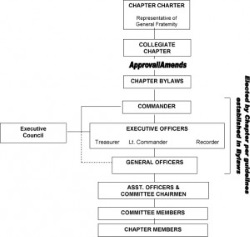
Parliamentary Law
In democratic societies, corporations, organizations, and associations use parliamentary law as a logical and just process of reaching agreement on a course of action. In such settings, groups of decision makers come together to introduce issues, discuss alternatives, and arrive at conclusions collectively by majority vote. Sigma Nu Fraternity, as an association, follows this pattern in decision making at the chapter and General Fraternity levels.
Parliamentary law is based on the premise that rights must be respected: rights of the majority, of the minority, of individuals, and of absentees. It is meant to protect all those groups from hurried alteration of an organization’s rules and procedures. It helps to expedite action at meetings. It should never be used to hinder the expression of the will of the body nor to show off the parliamentary knowledge of the participants. In Sigma Nu, the Honor Principle is no better illustrated than in a chapter meeting where individual and group rights are protected and preserved, while business as usual continues in an efficient and fraternal manner. The function of Honor that makes the Sigma Nu parliamentary experience unique is not so much that the majority rules, but that the minority abides.
In Sigma Nu there are five basic principles of parliamentary law:
- All must receive courtesy and justice.
- Only one matter/item may be considered at a time.
- The minority view must be heard.
- The majority view must prevail.
- The majority decision once made enjoys the enthusiasm of unanimity.
Thus, parliamentary law is merely common sense used in a gracious and respectful manner. Parliamentary action is carried out by means of motions. Approximately eighty percent of all motions are designated as main motions. To process a main motion, the following steps are taken:
- A member first secures the floor, either by raising his hand or rising and addressing the Chair. Once recognized by the Chair, the member may speak, but not before. In Sigma Nu a member either raises his hand to be recognized by the Commander or stands to be recognized and extends a salute. Once recognized by the Commander, who returns the salute, the member may then speak.
- A member introduces his point of business with no more than a brief general comment and/or makes a motion – “I move, etc.” The motion needs to be seconded by someone who also must be recognized by the Chair or the motion dies for lack of a second. If a second is tendered, the question then is opened by the Chair for discussion and/or debate. To entertain a discussion, debate or comment from each member, recognition must be by the Chair as described above for the initial introducer of the business or motion.
- The Chair then puts forward the question. After sufficient discussion, the Chair may call for the vote, counting both affirmative and negative votes and announcing the results, unless there are objections to ceasing discussion.
Any member may initiate termination of discussion on a motion by gaining recognition of the Chair and stating, “I move (or call) the question.” The Chair then calls for a vote on the motion to move the question (requires two-thirds vote for approval). If the vote is successful, debate on the main motion must cease and a vote be taken.
If you are interested in becoming a parliamentarian or a successful chairman or leader, a careful review of Robert’s Rules of Order and Parliamentary Law is a must.
Using Parliamentary Procedure in Chapter Meetings
A chapter meeting is, in essence, a mini-legislative convention. Here, parliamentary procedure is exercised under Robert’s Rules of Order. Knowledge of the General Fraternity Constitution (see The Law of Sigma Nu) and the chapter bylaws is essential.
The formal meeting of the Brotherhood is the most important function of the chapter. The meetings are generally held weekly, planned by the Commander and the Executive Committee. The chapter meeting is the governing body of the chapter, a forum where official chapter business is conducted, members’ opinions are heard, and decisions affecting the life of the chapter are voted upon by the entire membership.
The chapter meeting is where it all happens: reports on committee efforts; reviews of officers’ accomplishments; individual and group actions addressed; individual wants, needs, and concerns discussed. All matters are decided via the democratic process. When properly planned and conducted, the chapter meeting is true Brotherhood personified.
For more information on chapter meetings – including a typical agenda and the basic parliamentary rules of individual motions – check out the All Chapter LEAD session on Effective Meetings.
Finances
When it comes to paying one’s fair share, Sigma Nu doesn’t mince words. We put it right up front. Our Fraternity holds that one of your primary responsibilities in life is your financial obligation.
Every Candidate and Brother is expected, indeed required, to pay his fair and timely share to the operational expenses of his chapter and to pay in full promptly his membership fees to the General Fraternity and to his chapter. Put bluntly, a Sigma Nu Candidate or Brother assumes the obligation of understanding and supporting the financial necessities of both the local chapter and the General Fraternity. After all, each undergraduate plays an equal role in setting the General Fraternity and chapter budgets which determine individual costs at both levels. Therefore, the amount that each student pays to be a Sigma Nu is only that which the collegiate Brotherhood has agreed upon collectively. That’s democracy in action. And democracy is Sigma Nu’s modus operandi while financial solidarity, backed by principle, is its underpinning.
Hence, there is no room, no need, no use for anyone who chooses to defy the majority by failing to pay his equal share. In short, in this Fraternity any member who refuses to pay his fair share is only taking advantage of, indeed ripping off, his fellow Candidates and Brothers. He is essentially riding on their backs and represents a financial drag to those who invited him to join. A financial deadbeat soon becomes deadwood if allowed to continue. Such irresponsibility will doom any Brotherhood, therefore is unacceptable…even dishonorable. The only proper recourse is the dismissal of a delinquent Candidate and the expulsion of a delinquent Brother. Furthermore, it is the duty of each member who does pay his share to stand up and demand appropriate action against everyone who does not. So, either pay up or get out…we cannot say it more plainly or mean it more emphatically.
What happens if a member should hit upon hard times? There are always means of helping a member who has a genuine need, but the chapter budget must not suffer and the rest of the Brotherhood must not be deprived of each member’s fair and just share of fees and dues. Paying your equal share on time is a matter of Honor. And Honor is what Sigma Nu is all about.
Ours is tough Brotherhood. There can be no shortchanging of the chapter’s budget or permitting one to escape his obligations. In Sigma Nu freeloading is dishonorable and, therefore, grounds for expulsion. Finding assistance for those who have a real need but making certain they still pay their fair share is tough Brotherhood in action. This is the Way of Honor.
Cost of Membership
One of the primary sources of funding for daily operations of the General Fraternity and the singular source of income for collegiate chapters is the dues paid by collegiate members. The General Fraternity dues are defined in The Law of Sigma Nu, while chapter dues and fees are specified in the chapter bylaws/budget. The amount is determined by vote of the collegiate members within each chapter and by the collegiate delegates at Grand Chapter.
A one-time fee paid to the General Fraternity is required before one can become an official Candidate of Sigma Nu. This Candidate Fee may be collected by the chapter’s Treasurer and remitted promptly to the General Fraternity, or a Candidate may pay this fee directly via an online transaction upon his registration with Sigma Nu’s Members’ Area. The Candidate Fee covers the cost of the Candidate Pin, portions of Phase I of the LEAD Program and setting up and maintaining the lifelong record of each Candidate who becomes an initiated member of the Legion of Honor. Candidate dues to the chapter cover the cost of conducting the Candidate program (and/or for meals, lodging and certain other activities of the chapter, especially when the Candidate resides in the chapter home or participates in ongoing chapter activities).
Upon initiation, each new Brother pays a one-time Initiation Fee to the chapter Treasurer who is required by The Law of Sigma Nu to immediately remit same to the General Office. This Initiation Fee, like the Candidate Fee, may also be paid, via an online transaction, by the new Brother directly. Initiation Fees entitle each new member to receive his official Sigma Nu Badge, membership certificate, life membership card, and the Fraternity’s magazine The Delta.
Both the Candidate and Initiation Fees are nonrefundable. Hence, if a Candidate fails to be initiated, there is no refund of his fees and dues paid. If he is initiated and later chooses to give up his membership, or is expelled from Sigma Nu, there is no refund of the Initiation Fees. It’s the same with all fraternities and with nearly all associations and clubs, such as Rotary, Jaycees, and Boy Scouts.
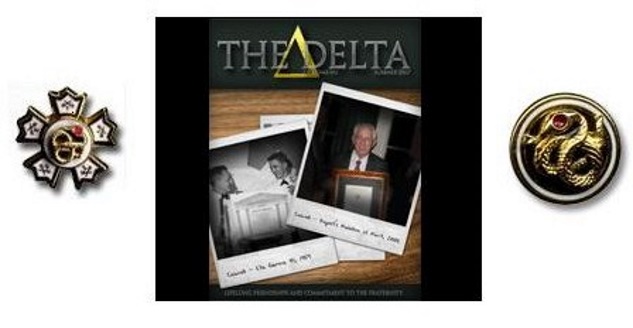
In addition, each Sigma Nu Brother pays semiannual fees to the General Fraternity during his undergraduate years. This money is collected by the chapter Treasurer and remitted immediately to the General Fraternity. These fees also are nonrefundable. Most fraternities charge all their collegiate members semiannual dues. In Sigma Nu, however, these fees are paid only by the initiated members, not by Candidates.
Naturally, there are local chapter dues and fees which are needed to effectively operate the undergraduate chapter. These costs are set by the local chapter membership and spent directly on the collegiate members. In nearly all cases, these fees are likewise nonrefundable.
An additional charge levied on each Candidate and Initiate is a liability insurance premium. All fraternities charge their members for a liability insurance premium. Fortunately, Sigma Nu’s per-member insurance premium is among the lowest in the fraternity world, a tribute to the strong leadership exerted by our collegiate chapter members who work hard to comply with the General Fraternity’s Risk Reduction Policy. These funds are included in the monthly statements and invoices issued to chapters and should be remitted directly to the General Fraternity by the chapter Treasurer to cover the cost of the risk reduction program and liability premium. The Risk Reduction session of LEAD Phase I explains Sigma Nu’s liability protection for its members and the risk management matters related thereto.
The general operating fund of Sigma Nu is administered by the General Fraternity staff under the direction of the High Council. At each Grand Chapter, the Grand Treasurer, on behalf of the High Council, reports in detail to the collegiate and alumni delegates on the status of the General Fraternity’s financial affairs.
Supplemental funds for scholarship and educational programs are administered by the Sigma Nu Educational Foundation in the form of grants to the Fraternity and for individual chapters and house corporations who have set up scholarship or housing accounts through the Foundation. The Foundation allows both collegiate and alumni members to make tax-deductible donations in support of Sigma Nu’s mission, something they are unable to do directly to their own chapters due to tax regulations. Donors to the Educational Foundation can make direct contributions to the general fund, maintenance and improvements to the Headquarters property, specific Fraternity programs (like LEAD), or scholarship funds. Foundation donors can also establish and contribute to chapter-specific housing, educational, and scholarship funds.
The Foundation’s collegiate giving society is the 1869 Club. Collegiate donors support programs like the College of Chapters, Sigma Nu Institutes, and the LEAD Program by pledging at least $18.69 per year to the Educational Foundation. Learn more about and join the 1869 Club.
At each chapter meeting, the Treasurer should be called on to give a full and accurate report of the chapter’s financial status. Each chapter should have a printed budget approved by its members. And, at each chapter meeting the Treasurer should present to the members a budget report, reflecting accurately all income and expense to date. A chapter Finance Committee is provided for under The Law of Sigma Nu to oversee the chapter’s budget, indeed all its financial transactions. This committee is responsible to the entire Brotherhood to make certain costs are kept at a reasonable, affordable level, all debts are serviced in a timely manner, and the chapter does not overspend.
It is the duty and right of each collegiate member who pays his fair share, to insist on regular and accurate accounting and reporting of chapter financial matters. In summary, each collegiate member should be fully aware of all his financial obligations to his Fraternity. He needs to take an active interest in the budgetary affairs of his chapter, keeping alert to what the chapter collects and spends and making certain it operates within its means.
Lifetime Commitment
Joining Sigma Nu is a lifetime commitment. Not just for the undergraduate years.
When one becomes initiated as a Brother in this the proudest of fraternities, his fraternal vows are not ephemeral. The fact that a Brother lives outside of the chapter home in no way entitles him to use the chapter or participate in its social and other activities without paying his fair and just share of dues as a live-out member.
Likewise, when one chooses first to live in the chapter home, but then suddenly decides to move out, thus depriving the Brotherhood of his live-in dues, he leaves his Brothers in a financial lurch. This constitutes a violation of his Honor commitment. No one serious about being a Brother of this Fraternity is entitled to leave the chapter in a financial deficit position. For example, if one suddenly decides to move into an apartment off campus, he needs to find a suitable replacement to fill his space in the chapter as a live-in member. This applies to every initiated member whether freshman or senior. Ours is a Fraternity of Men who accept their responsibility fully and do not expect the chapter to assume burdens they create by ending their participation in chapter affairs or vacating the chapter home.
A chapter that is strong and successful remains that way only when each member does his part to make his grades, pay his fair share in a timely fashion, and do something worthwhile for his Brotherhood in the chapter and out on campus. That’s what Sigma Nu is really all about. That’s the Sigma Nu lifestyle. That’s why our Fraternity is known as the Legion of Honor.
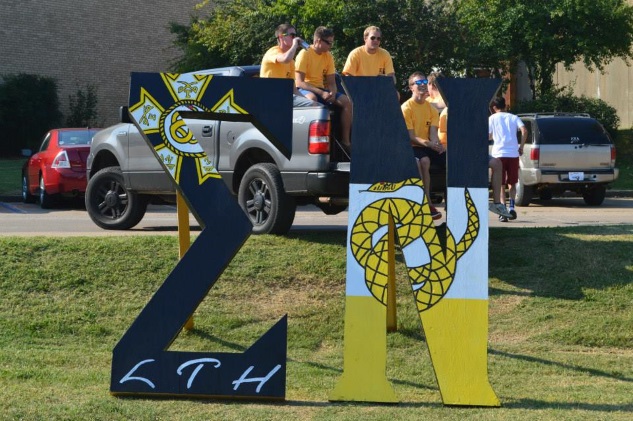
Why Risk Reduction?
Since Sigma Nu’s founding in opposition to hazing at VMI, the Fraternity has remained steadfast in its commitment to the prevention of harmful and dangerous behaviors and activities. To that end, in 1984 Sigma Nu was one of the first members of the fraternity and sorority community to implement a risk reduction policy to regulate chapter and alumni entity activities. This policy was an important first step in developing sound risk management protocol to assist collegiate chapters and alumni entities in organizing safe and enjoyable events.
Sigma Nu’s Risk Reduction Policy became a model that led to the creation of the industry-standard policy of the now defunct FIPG (Fraternal Information and Programming Group). The FIPG Policy was the standard policy used by most national organizations, campuses, and local Interfraternity Councils between 1987 and 2019.
In Fall 2018, the NIC (North American Interfraternity Conference) – the leading trade association for college men’s fraternities – adopted a new set of Alcohol and Drug Guidelines, replacing the need for the continuation of FIPG and the FIPG Policy. The NIC Alcohol and Drug Guidelines in many ways are a rewrite of the FIPG Policy with little substantive change.
A safe, healthy, educational environment – one free from alcohol misuse, drug abuse, hazing, sexual assault, racism, and other mindless, reckless acts – represents the only kind of setting in which a genuine fraternity can truly prosper. No chapter or members can be committed to Sigma Nu’s cardinal principles of Love, Honor, and Truth without being equally determined to help create and present an environment in which these principles may be inculcated. Mature men realize that what separates Sigma Nu from a mere social club is exactly this commitment and determination. A true brotherhood will not tolerate irresponsible, rowdy, obscene, thoughtless actions which threaten the very existence of the chapter and its brotherhood, regardless of whether the perpetrator is a member (alumnus or collegian), guest, or unexpected visitor.
Sigma Nu Fraternity, and its chapters, face consequences as a result of incidents, accidents, disturbances, injuries, property damage, and so forth every year. These consequences can include insurance claims, lawsuits, loss of campus recognition, negative publicity, and increased insurance costs, in addition to the physical and emotional toll that will accompany an incident.
All of Sigma Nu’s risk reduction resources, including the Risk Reduction Policy, have one primary goal – to provide collegiate chapters and alumni entities tools to consistently create safe and enjoyable environments at events, activities, and chapter facilities.
Our Fraternity at Risk
In the litigious society of today, civil and criminal lawsuits are filed regularly against students, with settlements reaching into the millions of dollars, plus jail sentences and/or stiff fines for those students convicted. First, to help protect our chapters, house corporations, advisors, and our undergraduate members (as well as the General Fraternity), exposure to claims of liability must be reduced.
Second, the General Fraternity has purchased a general liability insurance policy which provides limited coverage for claims against each chapter and its members. Such protection would be unattainable at an affordable price without a successful risk reduction program, one which collegiate chapters understand, appreciate, implement, adhere to, and advocate. For this vital insurance protection to remain available, every collegiate member must stay alert to potential hazards and to take conscientious steps, to the extent that can be reasonably expected, to minimize the potential of personal injury and property damage.
Chapter officers have the crucial task of informing fellow Candidates, Brothers, and guests of the Risk Reduction Policy, while taking reasonable measures to help assure that the chapter, as a whole, and the members, individually, follow them.
Remember, any chapter and any individual can be sued for negligence at any time by anyone. It can happen to you and your chapter. Your best defense is to do all that is reasonable to prevent personal harm. However, when an accident happens on your watch (i.e. while you are a member of the collegiate chapter) it does no good to scapegoat as if you had felt no responsibility simply because you were not present. In a court case, the plaintiff’s attorney will do all possible to convince the judge and jury that you should be held accountable. After all, it’s your fraternity chapter and your Brotherhood-approved activity, he’ll claim. It is up to the judge and jury to decide, not you, the extent of your responsibility. If your chapter is host, you must prove beyond a reasonable doubt that everything reasonably expected of you and your Brotherhood was done to minimize the potential of an accident. If you can’t, you may be declared guilty of negligence. It’s as simple as that.
Being declared guilty comes with an awesome price. It can affect your wallet and your career, including that of your parents. For example, when a collegiate member is convicted of negligence their parents’ homeowner’s policies can be attached to a financial claim, as can the future salaries of students. Ask your chapter officers to share information about lawsuits against fraternities and their members as you proceed further toward initiation. Knowing what went wrong elsewhere could help you prevent something from happening to you and your chapter.
Not only is it the personal duty of each Candidate for membership in Sigma Nu to know and understand the Risk Reduction Policy in detail, but a double challenge to help ensure that others in his chapter also have sufficient knowledge and understanding of the Policy. The task then is to make every reasonable attempt to abide by the Policy and do all that you can to ensure that others in the chapter do likewise.
Chapter Premises
Any Sigma Nu chapter which owns, rents, or leases property – such as a chapter home, lodge, or a place for social activities, retreats, etc. – should make every reasonable effort to maintain that property in a safe and healthful manner. Fire and health codes are established by local community ordinances or by state and/or province laws. Chapter members need to be aware of these requirements. The local Fire Marshal and health officials will be eager, upon invitation of the chapter, to discuss such matters with the Brotherhood.
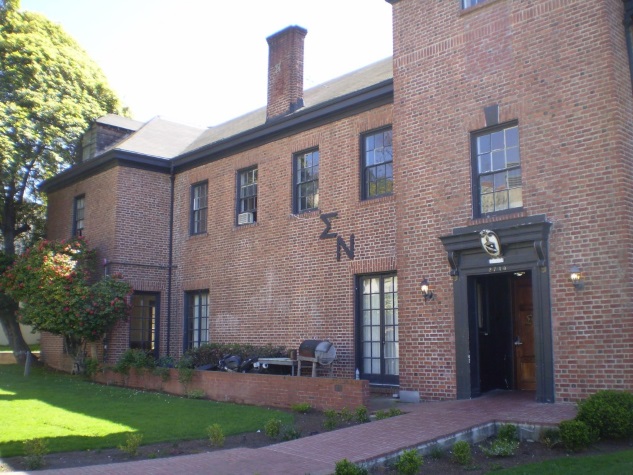
Also, collegiate officers are advised to work closely with their House Corporations to make certain chapter homes are inspected regularly by the appropriate health and safety officials. Candidates and members need to know and then to observe all fire and health safety standards. Chapter House Corporations own, lease, and rent property for the benefit of collegians; hence, they are advised to be officially incorporated, with officers duly elected from the alumni ranks, and to remain cognizant of the condition of the chapter facility. The House Corporation normally assumes the task of keeping the premises in satisfactory condition, since they usually serve in the capacity of landlord (i.e. legal title holders of the chapter property). Therefore, the House Corporation, not the collegians, owns the chapter home. Collegiate members are beholden to the House Corporation for the use of the chapter facility. Collegians are the temporary custodians.
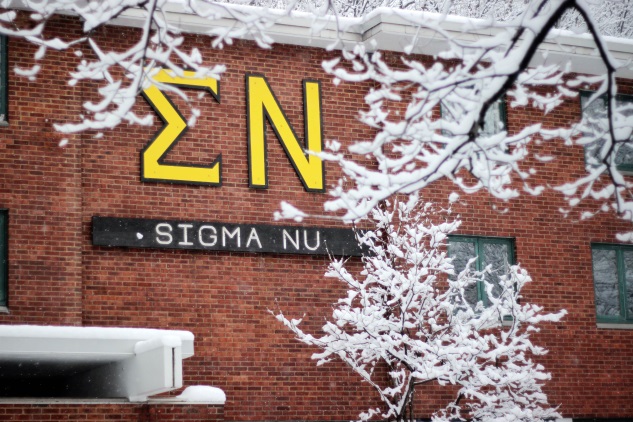
However, it is up to the collegians to help maintain the chapter’s property in a clean, safe condition. The chapter’s welfare and reputation are on the line at all times. Indeed, the image of the chapter is determined by the appearance of the chapter home and its grounds. Cleanliness is an especially important function of Brotherhood. Keeping both the public and private areas of the chapter home clean is no easy task but an essential one. Keeping it healthful and safe from fire and theft is equally important. All members (not just Candidates) are advised to pitch in at least weekly to ensure that the chapter home is kept in a respectable, clean, and safe order. Whether the chapter members rent a home, lodge, or a place off-campus for a function, they should leave it in at least as good a condition, if not better, than they found it.
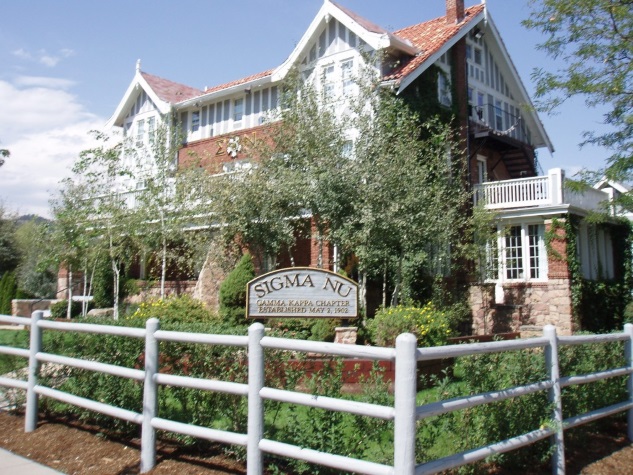
You should remember that you and your chapter, particularly your officers, could be held responsible not only for accidents which occur on your chapter’s property and at your chapter’s functions, but for damage to the property by members or guests who fail to be responsible. In addition, all members are called on to secure chapter premises from possible break-ins both during the school year and during breaks in the academic calendar. Also, making certain that the pipes do not freeze in winter is a responsibility of the chapter officers, especially the house manager.
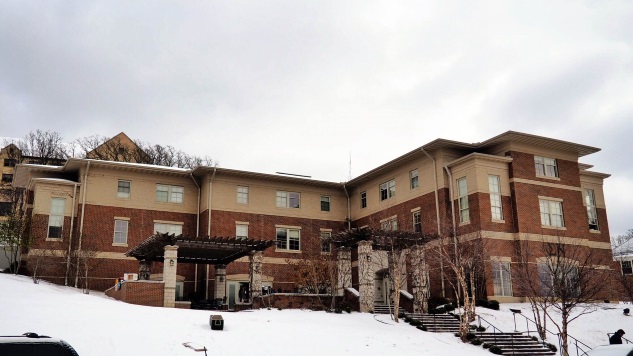
To be Men of Honor, Sigma Nu members are expected not only to abide by all conclusions of the Grand Chapter, including The Law of Sigma Nu and its Risk Reduction Policy, but the spirit of these stipulations.
Consequently, violations of the Fraternity’s Law and failure to carry out the Risk Reduction Policy are dealt with sternly by the General Fraternity. True, Sigma Nu does not have the capacity to stop violations before they happen any more than law enforcement agencies are able to prevent all crime. Indeed, Sigma Nu is not a police agency with spies peering into the windows of its collegiate chapters. It is not, nor has it ever been, chartered, licensed, or organized to be the parent, policeman, or authority over student life.
The Honor Principle doesn’t provide for mistrusting others, but rather trusting all to know what is right and to do the right thing. While some fraternities actually bring lawsuits against their own members when they do not uphold policies, laws, and guidelines, Sigma Nu as a genuine Brotherhood seeks Honorable Men who will try their level best to live up to the Honor Principle. Yes, this Fraternity holds high expectations of its members. Our values are an enormous challenge to live by. It only asks in return that Brothers and Candidates care as much about each other, their chapter, parents, alumni, alma mater, the General Fraternity, and themselves by accepting the obligation to govern each act by a high sense of Honor. When they fail to do this, the General Fraternity has little choice but to exercise its only authority over collegiate members and chapters to suspend individuals and/or suspend or revoke the chapter’s charter.
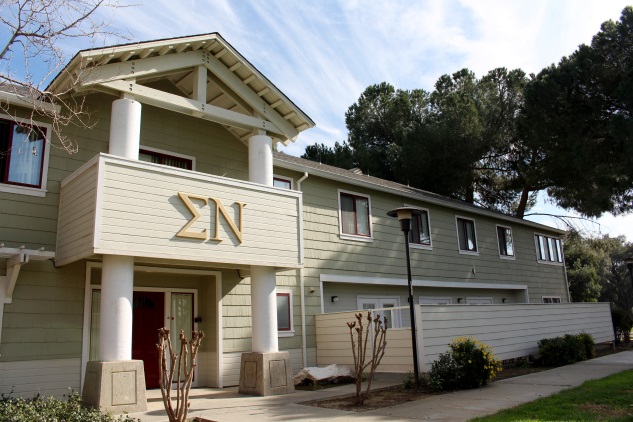
If a chapter makes a reasonable effort to operate by Sigma Nu’s Risk Reduction Policy, most deliberate acts of alcohol abuse and other illegal and/or hazardous activities will be minimized, if not eliminated. No chapter, or any of its members, need fear repercussions or sanctions, providing both works closely with the college officials, alumni, and the General Fraternity staff in helping to prevent violations. Sigma Nu wants its members to have a good time, but a safe, good time. It wants its Candidates to be initiated, to have a successful college experience and a successful career after graduation. It shouldn’t be too much to expect to have each member do his part as outlined here to ensure his own success and that of his Brotherhood.
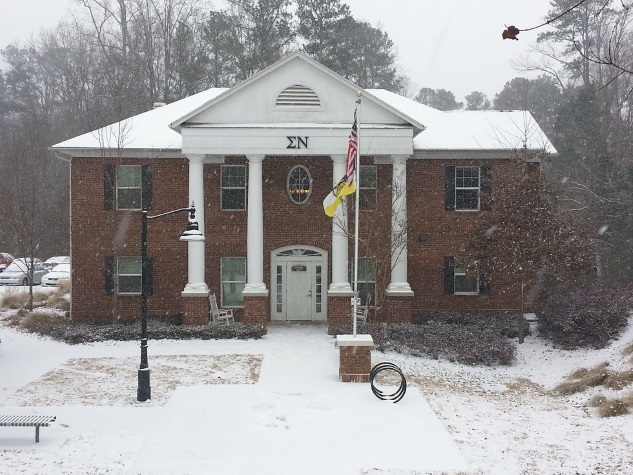
It’s the Law
You’re in college and you’re in the prime of your life; however, that does not grant you a license to behave in a manner that conflicts with your oaths to Sigma Nu or the laws of the land – ignorance is not bliss. There are consequences to every action; therefore, it is vitally important that you know and understand the laws that govern the land in the locality, state, and college/university where you find yourself. Sigma Nu holds its members to the highest standards and ask that our men show proper respect to others, themselves, their school, and the law.
Alcohol
Alcohol leads the pack as the substance most frequently abused by the vast majority of college students. Today, alcohol misuse and abuse are acknowledged as top concerns on college campuses. Each year, students spend billions of dollars on alcohol and each year, a growing number of students are impacted by alcohol misuse and abuse through disturbances, property damage, disciplinary sanctions, academic hindrance, injury, even death. It can happen here; it can happen anywhere.
The law is specific. Underage drinking is prohibited. The underage who consume alcohol are breaking the law, and there is no place in Sigma Nu for lawbreakers. Any chapter in this Fraternity that fails to uphold the law is subject to losing its charter, having its officers removed from office, and brought to trial for possible suspension or expulsion, as is any other individual member who breaks the law. Likewise, those of age who consume alcohol to the extent of intoxication are subject to similar penalties.
Students who drink and drive face devastating consequences by risking not only their lives but the lives of others, potentially ruining an opportunity for a promising future for themselves and those on whom they inflict harm. Driving under the influence (DUI) is also against the law, and lawmakers are increasing restrictions by lowering acceptable blood alcohol levels. The result is a sharp increase in DUI prosecutions, which entail not only heavy fines and jail terms, but loss of driver’s license and confiscation of one’s vehicle.
CommunityEdu
We realize that by joining Sigma Nu, you are not only entering a new environment with new friends and social opportunities, but also with new responsibilities. With so many exciting things going on around you, you need to be prepared to deal with all sorts of situations that may come your way, especially those situations involving alcohol.
The Fraternity is excited to offer CommunityEdu – a non-opinionated, science-based course that aims not to preach but rather to teach the facts about alcohol, hazing, sexual assault, and mental health. CommunityEdu empowers students to make well-informed decisions and provides simple strategies to help keep them and their friends safe.
All candidates are expected to complete this course as part of their candidate education program and preparations for initiation.
The online course has two parts:
- Part 1 of the course takes approximately 45-60 minutes to complete, and may be completed in multiple sittings.
- About one month after you complete Part 1, you will receive an email asking you to complete Part 2, which takes 15-30 minutes to complete.
CommunityEdu offers a confidential, personalized experience for each user. As you proceed through the modules of alcohol-, hazing-, sexual assault-, and mental wellness-related content, you will be presented with information in a variety of formats, including: personalized feedback for a customized user experience, realistic scenarios, interactive activities, audio/video clips, and Sigma Nu-specific resources and leadership opportunities. The course also offers feedback on user attitudes and behaviors through three surveys within the course, as well as pre- and post-assessments.
Getting Started with CommunityEdu
To get started, follow these simple steps:
- Candidates will need to go to https://sigmanu-va.vectorlmsedu.com/ and input their username
- The default username is the member’s username for the Members Area portion of the Sigma Nu website. Note, it will take 1-2 weeks for a new candidate that registers on the Members Area to be added to the CommunityEdu platform.
- A reminder email will be automatically sent every two weeks throughout the academic year until the member has successfully completed the program.
- Complete the first portion of the program (through the Final Exam and Survey 2).
- Complete the second portion of the program (includes Survey 3 and key concepts review) - this will become available about a month after completing the first part of the program.
- Each candidate is expected to complete the program prior to the initiation ceremony. CommunityEdu can be completed as part of this session, if not already completed during the Alcohol Misuse Prevention session. Failure to complete CommunityEdu could result in financial penalty for the chapter.
For more information check out CommunityEdu.
Sexual Assault
Make no mistake about it, sexual assault is a heinous crime. Not only are such abhorrent sexual abuses against the law of the land, they are also against moral law, a law implicit in the philosophical underpinnings of the Legion of Honor. Any amount of rationalization will not negate that hard truth. You will hear on the college campus today that many do not understand what is sexual assault and what is not. They say, “That’s where the problem begins” and suggest “Some men wrongly assume that when a woman has agreed to be with him in his room or in some other secluded place, she agrees to a sexual encounter.” Be aware, once and for all, that men and women have a right (indeed a responsibility) to refuse and should have to say “No” only once. College officials will tell you, “Don’t make the situation confrontational. Take their word for it. If they are too intoxicated to make a responsible decision, then it’s up to you to abstain.” Whether you have received this kind of advice or not during your freshman orientation, from a purely practical point of view it should be heeded. The civil and criminal courts tend to agree. Remember, sex with anyone under a certain age is automatically statutory rape regardless of consent. The age may vary in each state or province, but generally any person under the age of 17 should be considered not old enough to give consent. One need only to think how he would wish his own mother and sister(s) to be treated, and respect others he encounters in the same responsible, caring manner.
Men who cajole women, or force themselves on them, exhibit the lowest form of behavior. They leave no question about their lack of self-control, immaturity, mindlessness, or being a slave to the ill-fated macho “score all you can” fallacy. They are not honorable men, and clearly not Sigma Nu material. They may need professional counseling and, if that fails, incarceration.
Many a male college student has paid the penalty of being accused of sexual assault – endured the humiliation of a grueling court trial, heavy fines, and even jail sentences. His life, not to mention that of his hapless victim, is destroyed. Don’t let that happen to you. Your parents, your Fraternity, your alma mater expect more of you and you deserve more from yourself.
The freedoms students enjoy at college today introduce a moral challenge. Do self-interests and instant physical gratification supersede responsibility and compassion for others? Every Sigma Nu must address that question when deciding whether one is a Gentleman of Honor or an unrestrained boy, even a criminal with animal instincts out of control. By avoiding an illegal act that you may regret the rest of your life, you will avoid having to struggle with the moral issue as well.
For more information check out CommunityEdu.
Hazing
Sigma Nu’s opposition to hazing is as old as the Fraternity itself. There is not now, nor has there ever been, a place in this Fraternity for those who choose to gratify themselves by demeaning others – the primary reason why most hazing occurs. Today, this archaic practice enjoys no support whatsoever from any college fraternity or institution of higher education. In most states and provinces hazing is a crime, punishable by fines and jail sentences. When hazing occurs, the High Council of Sigma Nu takes swift and appropriate action, as instructed by the Grand Chapter. In short, it should be clearly understood that a chapter which hazes its Candidates could have its charter suspended or revoked, its officers removed from office and suspended or expelled. Candidates who allow themselves to be hazed may be denied initiation into Sigma Nu. Regardless of what any initiated member (collegian or alumnus) says to the contrary, Sigma Nu will not permit those who participate in hazing to continue their membership in this Fraternity! Sigma Nu’s stance against hazing is simply, “No chapter shall conduct hazing.” Hazing is defined by Sigma Nu as follows:
"…any action taken or situation created, intentionally, whether on or off fraternity premises, to produce mental or physical discomfort, embarrassment, harassment, ridicule and sleep deprivation, forced drug or alcohol consumption. Such activities may include but are not limited to the following: paddling in any form; creation of excessive fatigue; physical and psychological shocks; quests, treasure hunts, scavenger hunts, road trips or any other such activities carried on outside or inside the confines of the chapter house; the wearing of public apparel which is conspicuous and not normally in good taste; engaging in public stunts and buffoonery; morally degrading or humiliating games and activities; late work sessions which interfere with scholastic activities; and any other activities which are not consistent with fraternal law or policy or the regulations and policies of the educational institution."
Moreover, Section II of the Risk Reduction Policy stipulates, “The willingness of any individual to participate in any hazing activity does not excuse any hazing violation."
All members of Sigma Nu, including Candidates, are expected to report any and all incidents of hazing to an appropriate chapter officer, Advisor, Division Commander, parent, college/university official, or General Fraternity representative. If you are aware of any act of hazing by an individual or group, you will not be denied initiation into Sigma Nu for doing your rightful duty to report and help prevent hazing. Sigma Nu is determined to do all it can to prevent hazing in its chapters. But it must look to its collegiate members – both Candidates and Initiates – and to its alumni and parents, as well as campus officials, to help prevent hazing and to inform the General Fraternity whenever the slightest suspicion of hazing surfaces.
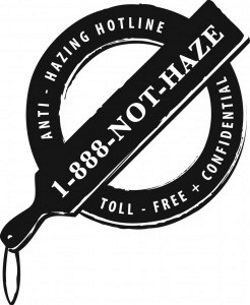
Hazing is against the law in most states and provinces. Violators can face serious legal consequences, including fines and jail sentences. This Fraternity will not tolerate hazing. When hazing becomes evident, the chapter charter may be suspended, officers removed from office and brought to trial for possible expulsion, as may the hazing perpetrators – be they collegians or alumni. And Candidates may be denied initiation if they tolerate hazing.
If you do not know by now that Sigma Nu Fraternity was formed in part in direct opposition to hazing, you are not eligible for initiation. If you do not understand and appreciate this fact and are not willing to help prevent hazing from happening in your chapter, you may not remain a Sigma Nu and your chapter may not remain in business. If you do not know what hazing is, it is your responsibility to find out Sigma Nu’s definition of hazing. The General Fraternity will assist any chapter that wishes to prevent hazing and help it find acceptable alternatives.
Each campus and state has its own definitions of hazing. These should be considered in addition to the Fraternity’s definition and in all cases, chapters should apply the stricter standards and definitions to their own behaviors. To learn more about state hazing laws check out HazingPrevention.Org’s interactive state map of hazing laws.
For more information about the dangers of hazing, how to prevent it, and alternatives, check out CommunityEdu.
Risk Reduction
It was pointed out earlier that this Fraternity does not dictate what is right, but opens doors to mature, responsible, and honorable thinking. While some eager for debate may challenge what is mature, responsible, and honorable, consensus can be reached among the Sigma Nu Brotherhood. Those among us who don’t agree with the consensus have the freedom to do one of two things: either depart in friendship or persuade the majority to change their minds and votes. That’s democracy in action and that’s the Sigma Nu way.
In Sigma Nu, if one cannot condone or be sensitive to those of different persuasions, at least he can be tolerant of and civil about their rights under the law. No one has to accept what another person stands for or believes in, but all must respect the right of another to be or believe differently. It’s how one acts, what one says, and where one is when he acts and says things that determines whether or not he is impinging on others or improperly imposing his views on the will of the majority.
- Acts of indecency are acts unbecoming a Sigma Nu.
- Acts of racism are acts unbecoming a Sigma Nu.
- Acts of sexual assault are acts unbecoming a Sigma Nu.
- Acts of alcohol abuse are acts unbecoming a Sigma Nu.
- Acts of hazing are acts contradictory to Sigma Nu’s principles, policies, and law.
Learn More
Introduction to Values
Imagine that years from now your son or daughter is assigned a school project where they need to focus on why they admire and respect you. What values will they discuss that have been instilled in them through your actions and role modeling?
Now that you’ve looked forward, try taking a look back. An important part of college is discovering who you are, what you believe and what is important to you. To do that, you need to look at your past experiences. You need to look at who helped you become who you are today, who helped to shape your values, attitudes, and beliefs. Think about the people in your life that have been your role models. What values have they instilled in you? How do you utilize those values in your daily life?
The three principles which the founders prescribed for Sigma Nu were Love, Honor, and Truth. Upon these three ideals they elected to build their new fraternity. It was their contention that practical idealists, closely associated and bound by these principles could more effectively develop the character and integrity which opens the door to greater opportunities and greater achievement in a free and democratic society. By studying, understanding, and applying the Cardinal Principles of Sigma Nu, better men would be produced, and ethical leaders would result.
As many who have joined Sigma Nu have noted, the Fraternity’s principles are difficult to define and can be even harder to live by. And no doubt there are some who don’t understand what they mean even though they have been initiated. They are Sigma Nus in name only – merely wearers of the Badge – because to truly be a Sigma Nu one must have developed a personal philosophy of life based on the principles of Love, Honor, and Truth. Therefore, it is imperative that definitions of each be made clear.
Love
So, what is love? Poets, of course have long written of love, in lines often quoted and in songs often sung. But Love in the fraternal sense is something different. It has its roots in the deep-felt need of all men for honest companionship, genuine friendship, and true brotherhood.

It is expressed by kindness and consideration, by a willingness to give and take, to adjust, to talk things out with open frankness, yet to be spared of sarcasm, cynicism, and stinging criticism. In Sigma Nu, it is mutual respect backed by integrity, a function of trustworthiness and truthfulness.
If use of the word love embarrasses you, as it does some, substitute “fraternal regard” instead. In Sigma Nu they really are one and the same. Fraternal regard requires patience and forbearance. It requires a willingness to work hard, to be prudent, and to honor every obligation. It requires also a special kind of respect, respect for self and for one another, respect for feelings and convictions, respect for that which a man deems sacred. It is impossible to imagine fraternal regard without genuine respect, without trust. As you begin to think and act in terms of Brotherhood, you will become an asset to Sigma Nu and, through these thoughts and actions, a greater asset to yourself. Self-confidence is developed in your efforts to get along with other people, and a feeling of security is gained through faith in brotherly cooperation. Indeed, the ability to become a useful, well-adjusted, responsible member of society, stemming from the concepts of Brotherhood in Sigma Nu, is an important byproduct of your fraternal membership.
Merely saying that we are Brothers in Sigma Nu is not enough. We must demonstrate it, live it, by caring for each other, by helping, serving, and respecting one another. Love may be not only the hardest lesson in Christianity, as William Penn said, but it may be the hardest lesson in life, yet surely the most essential. Giving and receiving respect, kindly frankness, patience, and encouragement all contribute to unity of purpose and common conviction to a cause much greater than ourselves; to love thy neighbor as thyself.
On the Principle of Love
By Walter James Sears – Adapted from The Delta, May 15, 1901
Love is the keystone in the arch of our faith. This is the beautiful sentiment, the divine principle that comprehends the noblest virtues of the race. It is so broadly inclusive, so truly elemental, that I hesitate to set the limit of its meaning or application.
Love – makes friends, comrades and companions; it establishes certain obligations of brotherhood among all sorts and conditions of men.
All the members of our Fraternity are brothers, but not all are comrades. Comradeship springs from intimate association. Brotherhood requires only the sign of recognition to make friends of strangers. The comrades of one’s college days – I know of nothing quite so sweet and beautiful and ennobling. It is of a great truth that the old friends are the best friends, and the sort that you make during your college life are the sort that are bound to you by hooks of steel— the sort that you will cherish in the tender keeping of your heart forever….
Our Fraternity in its best expression of love has a power greater even than friendship. It is a brotherhood. It makes every man of us a brother, not a comrade, and this is the distinction that I have been drawing, for, as I have said, comradeship is the product of close contact. Not so of the brotherhood. The common obligations that it takes, the common doctrines that it believes, the common objects that it upholds, these give it a common bond of love, a universal element of knowledge that breaks down the formalism of men who have never met and prompts them to strike hands as brothers. It obliterates space, it wipes out distance, it overcomes prejudices, it disregards the barriers of races, it mocks at the mystery of different tongues. It brings men from the four winds of heaven and sets them down face to face, and behold they are brothers!
Truth
What is love without truth?
Fraternity is so basic that it must be fixed on a solid foundation and cannot safely be subjected to pretense or to deceit.

Much of the difficulty, confusion, and disappointment of life comes because we either don’t know the truth or don’t live the truth we know. Much of our time is spent in searching for truth. Much of the trouble comes because we don’t always know who is telling the truth. Much of our effort is spent in speculating, arguing, advocating theories and personal opinions which we presume to be truthful. All this because there is so much we don’t know, so much we need to learn. In Sigma Nu we are urged to seek after truth as a lifelong quest.
But how does one go about searching for truth, and how can a fraternity help? Well, for one thing, when alone it is difficult to search for truth. A fraternity house should be a place for large questions and great answers. It should be an arena where ideas are free to clash and where knowledge is provoked without the threat of scorn or degradation by a fearless professor or a cynical peer.
What Sigma Nu seeks to develop are men who can bear the burdens of responsible citizenship, who can make judgments about life as it is and as it should be. In short, ethical men.
One of the most significant arguments that can be mustered in justifying the existence of college fraternities is their positive contribution toward instilling democratic values, particularly as they prepare their members for responsible leadership roles in a democratic society. A basic tenet of Sigma Nu is its commitment to inculcating democratic ideals with the chapter serving as a laboratory for instilling ethical leadership, an important ingredient in responsible citizenship.
The chapter, then, should be an exemplary medium for learning the nature and process of democracy. Ideals and ideas become reality as they are lived, and an attitude of cooperation in a harmonious setting is experienced through the daily application of democratic processes in the chapter. Leadership, ethics, involvement, service, self-expression, sensitivity, decision making – all these and more are the learning byproducts of a genuine fraternity experience.
So Sigma Nu assists in the search for truth in a wide variety of ways: through the establishment in the chapter of an atmosphere conducive to study; through the provision of a laboratory of living and learning in which the lessons of the classroom and of life in general can be tested and applied; through the availability of numerous opportunities for leadership and ethical citizenship development; and through shared experiences which contribute to real personal growth and to gaining a meaningful sense of purpose in life.
So now, having discussed the principles of Love and Truth, we arrive at Honor, the philosophical foundation upon which Sigma Nu rests its case.
Honor
It is possible to trace the lineage of Sigma Nu’s Honor Principle. It is rooted deeply in the Honor System which existed at the Virginia Military Institute when our founders attended there. VMI Superintendent Francis H. Smith made the honor code a vital part of the institution’s traditions from the outset. And as a major influence in the lives of our founders, the challenge of building an Honor Society inspired the founding of Sigma Nu. The appeal of the Honor Principle to successive generations of Sigma Nus is attested by the Fraternities almost continuous growth.

The Honor Code is a belief in personal integrity as the fundamental attribute of character. Every Sigma Nu at the time of his initiation is called upon to take an oath which places his Honor above all other human attitudes and actions. The oath’s purpose is to ensure that Honor will govern all individual acts at all times.
In Sigma Nu, the responsibility for defining right and wrong conduct is left to the individual’s conscience. Only rarely should the chapter be called upon to make decisions of an ethical or moral nature for its members. Instead, each member should arrive at an ethical and moral decision on his own, particularly since he is a moral and ethical person in the first place by virtue of his acceptance in, and his being accepted by, Sigma Nu Fraternity. If one isn’t ethical and moral, he simply doesn’t belong in Sigma Nu, and should be dismissed…unless he can demonstrate convincingly that he will change and will improve sufficiently.
Honor is simply something that a man has within himself. In a sense, it is the assurance that what one sees, what something seems, what should be, what is said to be, is something that can be counted on without equivocation.
All the qualities of character, faith, courage, kindness, sincerity, and loyalty add up to Honor – without which all else would be of little use. Stated simply, Honor implies being honest with ourselves and honest with others. Anyone who isn’t honest is simply punishing himself; for there isn’t any way to happiness, or any real progress, or any lasting and satisfactory relationship in life without absolute honesty.
If moral and ethical content are separated from education, the future would indeed be frightening. In insisting on the application of the Honor Principle, Sigma Nu gives character and balance to the lives of its members and helps advance a wholesome society, a society based on moral and ethical dimensions.
Honor Systems: A Virginia Tradition
Adapted from an article in The Delta, Vol 101, No. 4
The tradition of the honor system is particularly strong in Virginia’s colleges where emphasis is on molding “gentlemen of honor” …Indeed, the tradition at Virginia Military Institute was so strong and influential that Founders Hopkins, Quarles, and Riley adopted Honor as one of the cardinal principles of the Fraternity. From that principle evolved an unwritten code of honor rooted in the respect for the integrity and fundamental human worth of the individual. Today one still finds students taking unproctored examinations at the University of Virginia and Washington and Lee University. At Hampden-Sydney College, students are expected to abide by both the Honor Code and the Code of Student Conduct not only on campus, but off campus as well. Cadets at VMI adhere to an honor code that has remained virtually unchanged since its inception; one characterized as the “daily application of the principles of ethics, honesty, and personal integrity by each cadet to the problems with which he is confronted.” And at William and Mary, the “mother” of college honor systems, one finds that “the spirit and essence of the honor system have historically threaded through the years undisturbed and, guarded jealously, have remained intact.”
Perhaps the explanation for the strength of the honor systems on these campuses today lies in both the longevity of the tradition and, more importantly, in the manner in which it is inculcated in new students. At all five schools, the system is run by the students, and the students are responsible for ensuring the integrity and the future of the system by thoroughly indoctrinating incoming freshmen.
Of the five institutions, VMI probably devotes the most time to ensuring that its freshmen have a thorough understanding of the system. Each member of the honor court is assigned twenty freshmen, and during orientation, four one-hour sessions are conducted where the honor code is explained to everyone. Additionally, the members of the honor court visit the new cadets in their rooms so as to provide the freshmen with another opportunity to ask questions and seek clarification on the code.
The education does not end with orientation. It is an ongoing process, in which the first-year cadet’s big brother shoulders additional responsibilities for inculcating the new students with the tradition. The ultimate result of this massive indoctrination is not that the cadets regard the code as just a set of rules to be obeyed for four years, but rather that the system serves to instill a lifelong code of conduct within each cadet.
The fundamental tenets of the honor systems of all five colleges are the same—lying, cheating, and stealing will not be tolerated in the university/college community. Only VMI, whose code is probably most strongly adhered to, adds the clause: “…nor tolerate those who do.…A cadet who has knowledge of a breach of the honor code and does not report the same, is himself guilty of a violation of the honor code.”
This aspect of the VMI honor code stands in interesting juxtaposition to the William and Mary philosophy that “forcing someone to report infractions under fear of penalty…is a contradiction of the role of the individual…the stimulus to report an infraction must come from within the particular student and not from the written law. Such is the essence of honor.” At William and Mary and other civilian schools, students are expected to report violations of the honor code to maintain the force and integrity of the system.
A final reason for the continuing commitment to the honor system at these institutions is the fact that they are student-run with the full support of the administration. As Brother Witherspoon perspicaciously noted in 1898, “... after years of trial in some of the Eastern colleges, the faculties have decided it is by far the best plan devised,” and where students have taken seriously the task of enforcing their honor code, honor systems have been successfully planted.
Today’s world is one which allows scant time for purposeful reflection on the higher principles governing man’s actions. It is a world of instantaneous action and reaction, a world in which “the felt necessities of the times” (Mr. Justice Oliver Wendell Holmes) too often dictate churlish responses to situations that demand more.
Given such a world, it is comforting to know that in some of our academic institutions the Honor Principle is cherished as it is in our Fraternity. McIlyar H. Lichliter wrote, “Honor is the court of last appeal – the enlightened conscience of a free man.” Today, more than ever, it is imperative that our universities seize the initiative in inculcating students with the principle of honor. True freedom is contingent upon trust – the trust of one’s fellow citizens. Trust is generated by honor conduct – conduct born in an adherence to a personal code of honor – a code which is learned, not inherited.
For their assistance in providing information used in this article, The Delta would like to thank the Dean of Students offices at William and Mary and Washington and Lee, the President’s office at Hampden-Sydney, the office of the Honor Committee at the University of Virginia and Lt. Col. Steven Riethmiller, the Superintendent’s Representative to the Honor court, and Cadet Barton G. Williams, both of VMI. Non-attributed quotes are from materials provided by the colleges.
The VMI Honor Code
The purpose of the Honor Code is to maintain the high standards traditionally attributed to VMI cadets by seeking to instill in all cadets the desire to conduct themselves according to the code of an honorable cadet, who will neither LIE, CHEAT, STEAL, NOR TOLERATE THOSE WHO DO. All cadets should be able to determine right from wrong, and thus be able themselves to arrive at honorable answers to their questions.
The Code is the heart of VMI. It pervades every activity of the Corps – personal, academic, athletic, and military—and presents a rigid standard by which all cadets must live. Because the Code is such an integral part of the life of the cadets, its very existence depends on the vigilance of every cadet at VMI. Therefore, every suspected violation of this Code must be reported immediately.
The Honor Code is the daily application of the principles of ethics, honesty, and personal integrity by all cadets to the problems with which they are confronted.
The Code has been administered and enforced by the cadets themselves since its beginning, and therefore belongs to the Corps. In the broadest sense, however, it belongs to all VMI men and women everywhere – those who have been cadets, those who are cadets, and most important, to those who will be cadets in the future. It is their most jealously guarded possession.
But the Code itself is never to be left behind by cadets when they depart from the Post. Though cadets may be in summer school, at another college, or later in life, they remain morally obligated to the Code and the personal standards on which it is based.
It is therefore far more than just a set of principles for four years in the life of a cadet. It is a Code which must be strictly followed by all cadets, no matter where they may be, if they wish to preserve the most priceless thing they have in life – THEIR HONOR.
Ethics
Decision Making
In developing a decision-making model that avoids the shortcomings of each traditional theory and can be practically applied to common problems, the Josephson Institute has combined features of each and added the stakeholder concept.

The Three Steps
Acknowledging its primary influences, this hybrid theory might be called “Golden Kantian Consequentialism”. There are three steps.
- ALL DECISIONS MUST TAKE INTO ACCOUNT AND REFLECT A CONCERN FOR THE INTERESTS AND WELL-BEING OF ALL STAKEHOLDERS.
The first principle of the model is the underlying principle of the Golden Rule. It embodies both the affirmative and negative dimensions of the Rule – help when you can, avoid harm when you can. It also utilizes the stakeholder concept.
- ETHICAL VALUES AND PRINCIPLES ALWAYS TAKE PRECEDENCE OVER NON-ETHICAL ONES.
The second principle of the model asserts that ethical values are morally superior to non-ethical ones and that when faced with a clear choice between such values, the ethical person should always choose to follow ethical principles. This principle operates only when the decision-maker perceives the conflict as one between an ethical value, such as honesty, and a non-ethical value, such as money or power. Perceiving the difference between ethical and non-ethical values can be difficult. When faced with this sort of dilemma, people rarely see choices as being between ethical and non-ethical values. Instead, they see ethical dilemmas arising from the clash between what they want or “need” and ethical principles that might deny them their desires. A rationalization process then kicks in, transforming self-interested, non-ethical motives into others-centered, ethical ones.
- IT IS ETHICALLY PROPER TO VIOLATE AN ETHICAL PRINCIPLE ONLY WHEN IT IS CLEARLY NECESSARY TO ADVANCE ANOTHER TRUE ETHICAL PRINCIPLE, WHICH ACCORDING TO THE DECISION MAKER’S CONSCIENCE, WILL PRODUCE THE GREATEST BALANCE OF GOOD IN THE LONG RUN.
Many ethical dilemmas pit honesty against fidelity or fairness against promise-keeping or loyalty to one person against commitment to another. In such cases, it is difficult to evaluate the problem objectively and not allow self-interest and non-ethical values to unduly affect the process.
The consequentialist facet of this decision-making model acknowledges the need to prioritize among competing ethical values in particular cases, but only when it is clearly necessary to do so because the only viable options require the sacrifice of one ethical value to advance another. In such cases, the ethical decision-maker should act in a way that will create the greatest amount of good and the least amount of harm to the greatest number of people. Dispensing with comparatively abstract principles such as honesty or promise-keeping is generally acceptable to avoid immediate and serious physical harm to oneself or others.
Like traditional utilitarianism, the third principle of the model is vulnerable to manipulation by those who know what they want to do and are willing to construct a rationale for doing it. An ethical consequentialist must assert the necessary justification on two separate levels: (1) the purpose of the conduct must be deemed necessary, and (2) the specific conduct contemplated must be necessary to accomplish that purpose.
People tend to operate on an instinctive, unreflective level that presumes and invariably exaggerates the importance of personal and professional goals. Objective scrutiny would reveal that, in many cases, our motivations are no more noble than the desire to get a job done, to build our reputations, to satisfy our pride, to win or to avoid the shame of failing. Many people pursuing worthy goals do not search diligently enough for acceptable ways of achieving them. Ethical ways are available-though they may be less convenient and costlier. In many cases, ethical means of reaching worthy ends only require a little more work, a little more sacrifice.
Reasoning
When making an ethical decision, do you use principled reasoning while avoiding common rationalizations?
Five Steps to Principled Reasoning
1. Clarify: Determine precisely what must be decided.
Formulate and devise the full range of alternatives (i.e. things you could do). Eliminate patently impractical, illegal, and improper alternatives. Force yourself to develop at least three ethically justifiable options. Examine each option to determine which ethical principles and values are involved.
2. Evaluate: If any of the options require the sacrifice of any ethical principle, evaluate the facts and assumptions carefully.
Distinguish solid facts from beliefs, desires, theories, suppositions, unsupported conclusions, and opinions that might generate rationalizations. Consider the credibility of the sources of information and the fact that self-interest, bias, and ideological commitments tend to obscure objectivity and affect perceptions about what is true. With regard to each alternative, carefully consider the benefits, burdens and risks to each stakeholder.
3. Decide: After evaluating the information available, make a judgment about what is or is not true and about what consequences are most likely to occur.
If there is not an ethical dilemma, evaluate the values so that you can choose which values to advance and which to subordinate and determine who will be helped the most and harmed the least. It is sometimes helpful to consider the worst-case scenario. In addition, consider whether ethically questionable conduct can be avoided by modifying goals or methods or by consulting with those likely to be affected to get their input or consent.
Finally, you may want to rely on the two “ethics guides”:
Golden Rule – Are you treating others as you would want to be treated?
Publicity – Would you be comfortable if your reasoning and decision were to be publicized? How would you feel about seeing it on the front page of tomorrow’s papers?
4. Implement: Once a decision is made about what to do, develop a plan of how to implement the decision in a way that maximizes the benefits and minimizes the costs and risks.
Remember that any decision or act, however ethical, is bound to be weakened by a sanctimonious, pious, judgmental or self-righteous attitude.
5. Monitor and Modify: An ethical decision-maker should monitor the effects of decisions and be prepared and willing to revise a plan, or take a different course of action, based on new information.
Since most decisions are based on imperfect information and “best effort” predictions, it is inevitable that some of them will be wrong. Those decisions will either fail to produce the consequences anticipated or they will produce unintended and/or unforeseen consequences. The ethical decision-maker is willing to adjust to new information.
Common Rationalizations
In making tough decisions, don’t be distracted by rationalizations. Here are some of the most common.
IF IT’S NECESSARY, IT’S ETHICAL
This rationalization is based on the false assumption that necessity breeds propriety. This type of reasoning often leads to ends-justify-the-means reasoning and treating tasks or goals as moral imperatives.
THE FALSE NECESSITY TRAP
As Nietzsche put it, “necessity is an interpretation, not a fact.” We tend to fall into the “false necessity trap” because we overestimate the cost of doing the right thing and underestimate the cost of failing to do so.
IF IT’S LEGAL AND PERMISSIBLE, IT’S PROPER
This substitutes legal requirements – which establish minimal standards of behavior – for personal moral judgment. This alternative does not embrace the full range of ethical obligations, especially for those involved in upholding the public trust. Ethical people often choose to do less than what is maximally allowable but more than what is minimally acceptable.
I WAS JUST DOING IT FOR YOU
This is a primary justification of committing “little white lies” or withholding important information in personal or professional relationships, such as performance reviews. This rationalization pits the values of honesty and respect against the value of caring.
An individual deserves the truth because he has a moral right to make decisions about his own life based on accurate information. This rationalization overestimates other people’s desire to be “protected” from the truth, when in fact most people would rather be provided unpleasant information than be deluded into believing falsehoods. Consider the perspective of people lied to: if they discovered the lie, would they thank you for being considerate or would they feel betrayed, patronized, or manipulated?
I’M JUST FIGHTING FIRE WITH FIRE
This is based on the false assumption that promise-breaking, lying, and deceit are justified if they are routinely engaged in by those with whom you are dealing.
IT DOESN’T HURT ANYONE
Used to excuse misconduct, this rationalization is based on the false assumption that one can violate ethical principles so long as there is no clear and immediate harm to others. It treats ethical obligations simply as factors to be considered in decision making rather than as ground rules. Problem areas: Asking for or giving special favors to family, friends, or public officials; disclosing nonpublic information to benefit others; and using one’s position for personal advantage.
EVERYONE’S DOING IT
This is a false “safety in numbers” rationale fed by the tendency to uncritically adopt cultural, organizational, or occupational behavior systems as if they were ethical norms just because they are norms.
IT’S OK IF I DON’T GAIN PERSONALLY
This justifies improper conduct done for others or for institutional purposes on the false assumption that personal gain is the only test of impropriety. A related, but more narrow excuse, is that only behavior resulting in improper financial gain warrants ethical criticism.
I’VE GOT IT COMING
People who feel they are overworked or underpaid rationalize that minor “perks” – acceptance of favors, discounts, or gratuities – are nothing more than fair compensation for services rendered. This is also used as an excuse to abuse sick time, insurance claims, overtime, personal phone calls, and personal use of office supplies.
I CAN STILL BE OBJECTIVE
This rationalization ignores the fact that a loss of objectivity always prevents perception of the loss of objectivity. It also underestimates the subtle ways in which gratitude, friendship, anticipation of future favors, and the like affect judgment. Does the person providing you with the benefit believe that it will in no way affect your judgment? Would the benefit still be provided if you were in no position to help the provider in any way?
Following the Five Steps to Principled Reasoning and avoiding falling into the trap of using rationalizations such as those mentioned previously, will guide you in making decisions true to your values and the values of Sigma Nu.
A Time for Decisions
By now you’ve undoubtedly heard how the decisions you make can impact you for the rest of your life. If you’re like most college students, the decisions to pursue a degree and where to do it were motivated by a desire to improve your career prospects and potential earning power. Choosing a major, joining a fraternity, and getting involved in other extracurricular activities will also have an impact on your future. Ideally, each of these will positively influence your future. But what about the decisions – yours and those made by others around you – that could jeopardize your future or harm your safety? This session will help you start thinking about the choices you make regarding alcohol consumption and your responsibility in Sigma Nu to make healthy, informed and honorable decisions.
In The Way of Honor, Brothers Dick Vaughan and Richard Fletcher address the importance of sound decision-making for men of The Legion of Honor. A few exceedingly appropriate words from this storied Sigma Nu text are below to emphasize the importance of making honorable decisions and Sigma Nu’s expectations surrounding alcohol and other drugs.
How would you single out Sigma Nu from the crowd? Sigma Nu is an Honor fraternity. It has been from the beginning. When James Frank Hopkins started gathering material at VMI for the Legion of Honor – which was to become Sigma Nu – he had one towering standard:
He sought men who could govern each act by a high sense of honor.
He welded them into a fraternity, not a club, for men, not boys, based upon the Honor Principle, not expediency and situational ethics…
He who starts out on a road, not knowing where he is, where he is going, or how he is going to get there, is lost. He may reach no worthwhile destination – or if he does by accident – how will he know that he has arrived? …
What is Honor? You know Honor when you have a chance to copy somebody else’s work to turn into the professor but refuse, even for the practical reason that you can learn only by doing your own job, but especially because it is wrong to plagiarize, indeed unethical. Honor is there when you pay your own share – in money or in work – and reject the temptation to be a freeloader and impose on others, knowing that a free ride takes you only downhill. There is Honor when you exercise every talent you have; only used muscles make you strong, and neglected talents will wither and make you weak. Honor is there in helping others, for he who helps only himself will soon find himself on an island all by himself, perhaps invisible, but effectively isolated from those he wants as friends. This is personal Honor…
Discipline
We expect a lot from our members, and when their conduct is a bad example to others, infringes upon the good of the order, or brings Sigma Nu’s name into bad repute, they are disappointing. Something has to be done about it. In life, if you make a mistake, be prepared to accept the consequences. In college, members must do the same. You will be held accountable for your willful errors, and you must accept the consequences in good grace if you expect to become or remain a Sigma Nu…
Alcohol and Drugs
There is no room, no need, no use for the abuse of alcohol or drugs in a Sigma Nu chapter. Alcohol consumption by those underage is illegal. Abuse of alcohol at any age is unacceptable. Any unprescribed drugs are illegal, including marijuana (federally and in most states). Sigma Nu is not a haven for illegal practices or activities. This Fraternity minces no words on this issue! Chapters – and Brothers or Candidates – who violate the law, abuse alcohol, use or tolerate drugs, will face charter suspension or violation, membership suspension, or expulsion. Don’t mess with this one. The Fraternity has no margin of tolerance for the presence of drugs or alcohol abuse.
Everyone’s Doing It, Right?
You’ve been on campus for a while now. You’ve experienced the freedom of being away from home and becoming answerable only to yourself. By this point in the year you’ve probably heard of or attended a party or two, formal or otherwise. People are talking about it. It seems like most are doing it. If you don’t participate, what will they think? It’s not only accepted but expected right?
There are many myths about how much and how often college students – and Greeks – drink. You’ve seen the movies, TV shows, commercials, and other advertisements. Everyone must be drinking. That’s what you’ve come to learn.
The truth is most students do not drink. It’s easy to recognize and recall instances of people drinking heavily or regularly at the same time as failing to notice all the people having just a few drinks or not drinking at all. To some extent, our own decisions about drinking can be influenced by what we think others are doing. So, if we mistakenly assume that everyone else is doing it, then we might be led to drink more than we otherwise would.
Sigma Nus Don’t
This isn’t the time where you are told, “I don’t care what so and so is doing. The expectations for you are different.” It goes without saying that when you took your vows to become a Candidate of Sigma Nu – that you would hold yourself to a higher standard – that the commitment was to be applied to every aspect of your life.
The fact of the matter is that most Sigma Nu members in your position don’t drink as much as you think, don’t drink that often, and don’t drink that much when they do choose to drink.
In fact, when you look at the data from Sigma Nu members’ use of the CommunityEdu program it tells a promising story when it comes to alcohol consumption.
- When they do drink, a majority pre-set a limit on the number of alcoholic drinks they will consume (e.g. “I won’t have more than 4 beers tonight.”).
- One-third of Sigma Nus identify themselves as “non-drinkers;” a number that has been increasing at a steady rate in the past few years.
- Significant numbers of Brothers are interested in attending events that do not focus on alcohol and more than half of those are interested in planning such events.
- Brothers overwhelmingly support the choice of individuals not to drink.
- Over 80% regularly make plans to avoid driving after drinking (i.e. identify a designated driver and a way to get home before they go out).
- Brothers report that the following are not among the reasons they drink (less than 5% rate as very important):
- To get drunk
- To decrease inhibitions
- To feel more attractive
- To feel more confident or sure about themselves
- To be outgoing in social situations
- To feel connected with the people around them
- When they do drink, three-fourths of Brothers have 5 or less drinks per sitting.
- A majority of Brothers who drink do so on 2 or less occasions per week and nearly 80% drink 3 or less days per week.
*Note that this section refers to CommunityEdu aggregate data sets from the recent academic years. There is no way for Sigma Nu to track individual chapter or member responses as all individual survey responses are confidential.
The Law
You’re in college and you’re in the prime of your life; however, that does not grant you a license to behave in ways that conflict with your oaths to Sigma Nu or the law of the land. There are consequences to every action; therefore, it is vitally important that you know and understand the laws that govern the land in the locality, state, and college/university where you find yourself. Sigma Nu holds its members to the highest standards and ask that our men show proper respect for others, themselves, their school and the law.
Alcohol leads the pack as the substance most frequently abused by college students. Today, alcohol misuse and abuse is acknowledged as one of the top concerns on college campuses. Each year, students spend billions of dollars on alcohol and each year, a growing number of students are impacted by alcohol misuse and abuse through disturbances, property damage, disciplinary sanctions, academic hindrance, injury, and even death. It can happen to you or your chapter; it can happen to any Sigma Nu or chapter.
It was pointed out in a previous session on Risk Reduction that this Fraternity does not dictate what is right; but, rather, opens doors to mature, responsible, and honorable thinking. While some eager for debate may challenge what is mature, responsible, and honorable, each of us is subject to the law of the land. Sigma Nu is not above reproach; nor, are its members, who choose to violate the laws, policies, or statutes of the Fraternity; host institution; locality; or state of which we are members.
It is important to be aware of the laws and policies that govern the communities in which we exist. You are encouraged to review the resources below, as well as to seek out additional sources of information, and be an informed citizen and Sigma Nu, particularly on the topic of alcohol possession and consumption.
State Laws
What state and federal laws exist to control and address alcohol consumption, possession, sale and intoxication levels? The resource below is maintained by Mothers Against Drunk Driving and lists alcohol and related laws by type and state (Alcohol Laws: MADD).
The Alcohol Policy Information System provides detailed information on a wide variety of alcohol-related policies in the United States at both state and Federal levels. Detailed, state-by-state, information is available for 35 alcohol policies at the following link: Alcohol Laws: Alcohol Policy Information System.
Finally, The Partnership at DrugFree.Org offers an interactive map on state Social Host Liability laws (Social Host Laws). Social Host laws regulate the responsibility of persons hosting social events in their residence. Think it’s OK to drink underage as long as you’re at home with your parents or hosting underage guests at your apartment for some pre-event cocktails? Think again, you may be putting yourself or others in legal jeopardy if alcohol is being consumed underage. Some states mandate fines or jail time if an adult is found to allow minors to consume alcohol on their property. Check the map to see how your state treats Social Host responsibility.
The law is specific. Underage drinking is prohibited. The underage who consume alcohol are breaking the law, and there is no place in Sigma Nu for lawbreakers. Any chapter in this Fraternity that fails to uphold the law is subject to losing its charter, having its officers removed from office, and being brought to trial for possible suspension or expulsion, as is any other member who breaks the law. Likewise, those of age who consume alcohol to the extent of intoxication – or who enable underage individuals to consume alcohol – are subject to similar penalties.
Students who drink and drive face devastating consequences by risking not only their lives but the lives of others, potentially ruining an opportunity for a promising future for themselves and those on whom they inflict harm. Driving under the influence (DUI) is also against the law, and lawmakers are increasing restrictions by lowering acceptable blood alcohol levels. The result is a sharp increase in DUI prosecutions, which entail not only heavy fines and jail terms, but loss of driver’s license and confiscation of one’s vehicle. Not to mention a severely reduced chance of getting into graduate school or an embarrassing conversation to have with a potential employer. Most applications require you to disclose this information and, if you’re running neck-and-neck with another job applicant, this could easily disqualify you.
Campus Policies
Each institution has its own policies that further address the law, process for adjudication, drinking games and social events. It is not enough to be aware of only state or local laws. The resource below is a good place to start for identifying campus-specific policies. Another great source is the student code of conduct, likely made available online and as part of the student handbook.
Sigma Nu Fraternity’s Policies
In addition to your host campus’ policies and state laws, every Sigma Nu Chapter is expected to be informed of and to carry out the policies of the General Fraternity. When it comes to alcohol, this means being aware of and acting in accordance with the Risk Reduction Policy.
Alcohol’s Effects
Do you know how alcohol affects your body? How to identify the dangers of alcohol poisoning? When you should seek professional help for a friend? Too many people wish they had known the warning signs and what to do for a friend, only to find out after it’s too late.
Alcohol Poisoning
Excessive drinking can be detrimental to everyone’s health. Some people laugh at the behavior of others who are intoxicated, thinking it even funnier when they pass out or do something stupid and injure themselves. There is nothing funny about asphyxiating on your own vomit or the poisoning of the respiratory center of the brain, both of which can lead to death.
What happens to your body when you get alcohol poisoning?
Alcohol depresses nerves that control involuntary actions such as breathing and the gag reflex (which prevents choking). A fatal dose of alcohol will eventually stop these functions.
It is common for someone who drank excessive amounts of alcohol to vomit since alcohol is an irritant to the stomach. There is then the danger of choking on vomit, which could cause death by asphyxiation in a person who is not conscious because of intoxication.
You should also know that a person’s blood alcohol concentration (BAC) can continue to rise even while he or she is passed out. Even after a person stops drinking, alcohol in the stomach and intestine continues to enter the bloodstream and circulate throughout the body. It is dangerous to assume the person will simply be fine by sleeping it off.
Critical Signs for Alcohol Poisoning
- Mental confusion, stupor, coma, or person cannot be roused
- Vomiting
- Seizures
- Slow breathing (fewer than eight breaths per minute)
- Irregular breathing (10 seconds or more between breaths)
- Hypothermia (low body temperature), bluish skin color, paleness
- What Should I Do If I Suspect Someone Has Alcohol Poisoning?
- Know the danger signals
- Do not wait for all symptoms to be present
- Be aware that a person who has passed out may die.
If there is any suspicion of an alcohol overdose, call 911 for help. Don’t try to guess the level of drunkenness
What Can Happen to Someone with Alcohol Poisoning That Goes Untreated?
- Victim chokes on his or her own vomit
- Breathing slows, becomes irregular, or stops
- Heart beats irregularly or stops
- Hypothermia (low body temperature)
- Hypoglycemia (too little blood sugar) leads to seizures
- Untreated severe dehydration from vomiting can cause seizures, permanent brain damage, or death
Even if the victim lives, an alcohol overdose can lead to irreversible brain damage. Rapid binge drinking or during drinking games is especially dangerous because the victim can ingest a fatal dose before becoming unconscious.
Don’t be afraid to seek medical help for a friend who has had too much to drink. Don’t worry that your friend may become angry or embarrassed – remember you cared enough to help. Always be safe, not sorry.
*Adapted from http://www.collegedrinkingprevention.gov (Accessed April 2010)
Don't Play Doctor
According to the National Institute on Alcohol Abuse and Alcoholism (http://www.collegedrinkingprevention.gov), over 1,800 college students die each year due to alcohol-related injuries. In many cases, these deaths may have been avoided if their friends would have called 911 at the first sign of trouble rather than waiting until it's too late.
As part of Sigma Nu Fraternity, Inc.'s ongoing effort to combat alcohol abuse and misuse, we have developed, in partnership with Phi Delta Theta International Fraternity who created the original concept, the "Don't Play Doctor" video. This video educates viewers on the signs of alcohol poisoning and what to do if a Brother appears to have consumed too much alcohol. If you ever find yourself questioning whether or not a friend has had too much to drink, call 911 immediately and get emergency medical support.
Size Matters
Remember, if you are under 21, it is illegal to drink. If you do make the choice to drink, please develop a personal plan to do so in a less risky way. Drinks poured by students are typically stronger than standard drinks. This means you are consuming more alcohol than you think.

A recent national study* looked at how inaccurately college students defined standard drink volumes and found the following:

This kind of underestimating can be an issue:
- When someone else makes a drink for you
- When you have a mixed drink that contains multiple liquors
- When drinking out of large cups or water bottles
- When doing shots and chasing with another alcoholic drink
A safe and fun experience can be had by:
- Setting a drinking limit before a social drinking occasion
- Keeping track of how much you drink
- Pacing drinks to one or less per hour
- Only drinking mixed drinks made by a professional bartender
- Alternating alcoholic drinks with non-alcoholic drinks
- Not doing shots
- Avoiding drinking games
- Finding other things to do
- Not accepting a drink if you don’t know what is in it
*White, et al. (submitted). College students define standard drink volumes inaccurately. ACER.
Effects on the Individual
Aside from the legal ramifications, what are the potential side effects of alcohol consumption on college students?
- Academic failure – missed classes due to over-sleeping/hangover/illness
- Blackouts
- Hangovers
- Weight Gain
- Impaired sleep
- Decisions around sex – decreased inhibitions and impaired decision making could lead to unintended sexual encounters, sexual assault allegations, unwanted pregnancy
- Alcohol-related accidents
- Financial strain
If you want more information on how alcohol affects you, whether you’re a drinker or not, visit http://www.alcoholscreening.org. Here you’ll be able to use an alcohol screening tool to identify harmful or hazardous drinking patterns exhibited by yourself or others, how to identify and get help for someone else who needs it, and much more.
Effects on the Body
BAC Calculator
Blood Alcohol Content (BAC) is a measure of the amount of alcohol present in a certain amount of blood. Numerous factors – including amount of alcohol, speed of consumption, weight, and gender – can affect an individual’s BAC. The calculator found below provides an estimation of an individual’s BAC at a given time. It should not be used to determine whether an individual is too impaired to drive – the only safe driving limit is 0.
Use the BAC calculator found in the CommunityEdu program or the Virtual Bar version below to learn about how gender, weight, age, time, and type and number of drinks affect BAC.
Virtual Bar
Enter the interactive Virtual Bar to learn how gender, weight, food, and what, how much and how fast you drink can affect your BAC. The Virtual Bar is provided by the Foundation for Advancing Alcohol Responsibility - https://www.responsibility.org/start-a-conversation/drinking-responsibly/virtual-bar/
Interactive Body
Trace the flow of alcohol through your body and see how it affects the body’s organs and systems. Alcohol’s effects on the body are numerous. Virtually every organ system is affected by alcohol. Drinking in moderation may cause problems and drinking heavily over the years can cause irreversible damage.
Learn more and try the Interactive Body program by clicking here.
Common myths about sobering up include drinking coffee, taking a cold shower, sleeping it off, or performing rigorous physical activities. Unfortunately, these are just myths and simply won’t work. The only thing that reverses the effects of alcohol is time – something you may not have if you or someone you know is suffering from alcohol poisoning
Other Resources
1-800-662-HELP (toll-free) or http://findtreatment.samhsa.gov
Providing your geographical location over the phone or online will give you treatment options in your area. This helpline and website are maintained by The Substance Abuse & Mental Health Services Administration, a U.S. Dept. of Health & Human Services agency.
1-800-ALCOHOL
The Alcohol Treatment Referral Hotline provides 24-hour help and referrals for people with concerns about alcohol or drug use.
212-870-3400 or www.alcoholics-anonymous.org
Alcoholics Anonymous (AA) is for people who want to stop drinking.
1-800-344-2666 or www.al-anon.org
Al-Anon can help you if you have a friend or relative with a drinking problem.
310-534-1815 or www.adultchildren.org
Adult Children of Alcoholics can help you if you have a parent with a drinking problem.
1-800-487-4890 or www.health.org
The National Clearinghouse for Alcohol and Drug Information provides various information and resources.
1-800-438-6233 or www.madd.org
Mothers Against Drunk Driving (MADD) works to prevent drunk driving and underage drinking
Intervention: Your Responsibility
Now that you’ve reviewed the warning signs of alcohol poisoning and know the effects of alcohol on the body, it time to put knowledge into practice.
Intervention Scenarios
As you review each scenario consider the following:
- What are your concerns about the scenario?
- What, if anything, would you do?
- To whom are you responsible for your decisions (actions or inactions)?
- Have you encountered this scenario before? If so, how did you respond?
Scenario 1: A good friend is turning 21 and a group wants to take them out and show them what it means to be an “adult.” Your friend is a non-drinker but doesn’t want to let the group down, especially since they are trying to do something nice. Your friend has asked you to make sure that they don’t get out-of-hand just before others in the group start ordering shots for your friend and exclaiming, “This is gonna be fun to watch!”
Scenario 2: You’re at a party with lots of friends and friends-of-friends. After a few hours you’re talking with the host of the party when some others come up and ask the host to go buy some more alcohol. The host is clearly intoxicated and doesn’t want to go when a couple people start harassing him. The host finally gives in and goes to get his car keys.
Scenario 3: You notice that for the past several weeks your roommate has stopped attending chapter meetings and, on most afternoons, when you return from class he is just waking up from the previous night of partying. He’s been going out to the bars most nights and coming home in various stages of intoxication.
Scenario 4: You go to a party with a 5 of your friends, one of whom is serving as the group’s designated driver. At one point in the party you notice the designated driver drinking a beer. While you’re getting ready to leave you ask the designated driver how many drinks they’ve had, and they admit to having 4 (your group was at the party for 2 hours and it’s unclear when the designated driver started drinking).
Some scenarios adapted from The University of Arizona’s C.A.T.S. Life Skills Program, “Step Up!”
My Responsibilities for Intervening
Consider the questions below and how you will act and react should these scenarios arise.
- What can I do if I see a brother aggressively pursuing a female that is obviously impaired by alcohol?
- What kinds of activities can I suggest as alternatives to those focused solely on drinking?
- How will I react the next time an intoxicated brother tries to get behind the wheel of a car?
- What will I do if I suspect someone has alcohol poisoning and others are lobbying to just let them “sleep it off?”
- How will I approach a brother or friend whom I believe has an alcohol problem?
- What will you suggest when brothers want to incorporate alcohol into the candidate program – for example, by forcing candidates to chug individual drinks or finish large quantities from a container?
- Next time someone offers you a drink you don’t want – whether it’s because you’re a non-drinker, underage, have a test in the morning, or just don’t feel like drinking – what will you say?
Wrap Up
This session is designed to give you a foundation of knowledge and skills for making informed decisions regarding healthy alcohol consumption. Regardless of whether you choose to drink, alcohol abuse and misuse can have widespread and traumatic effects. Keep in mind that this is just an overview. It is important that you continue to read and learn more. The decisions you make today can have a profound effect on your tomorrow.